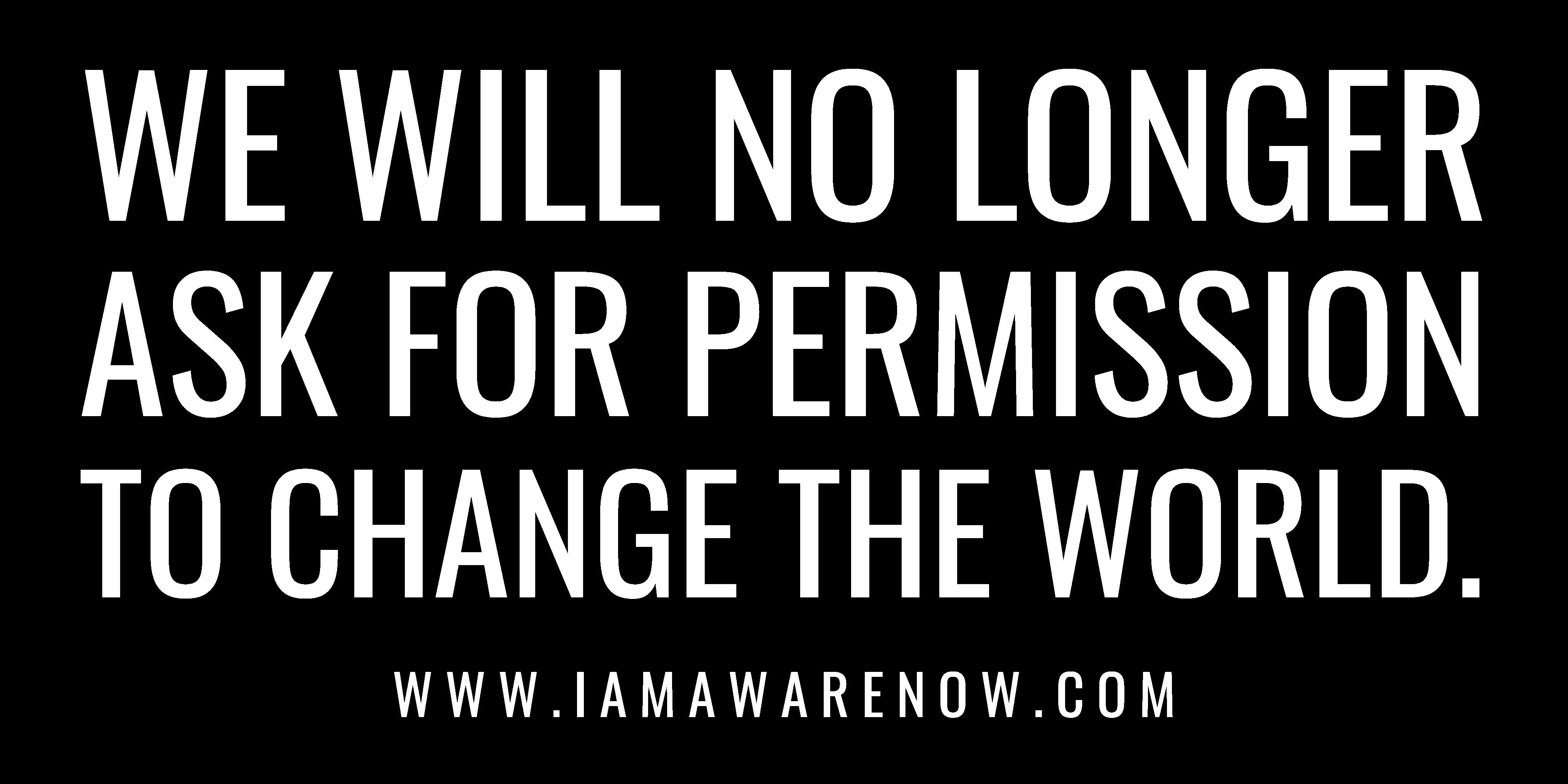AWARENOW
THE
WORLD'S OFFICIAL MAGAZINE FOR CAUSES








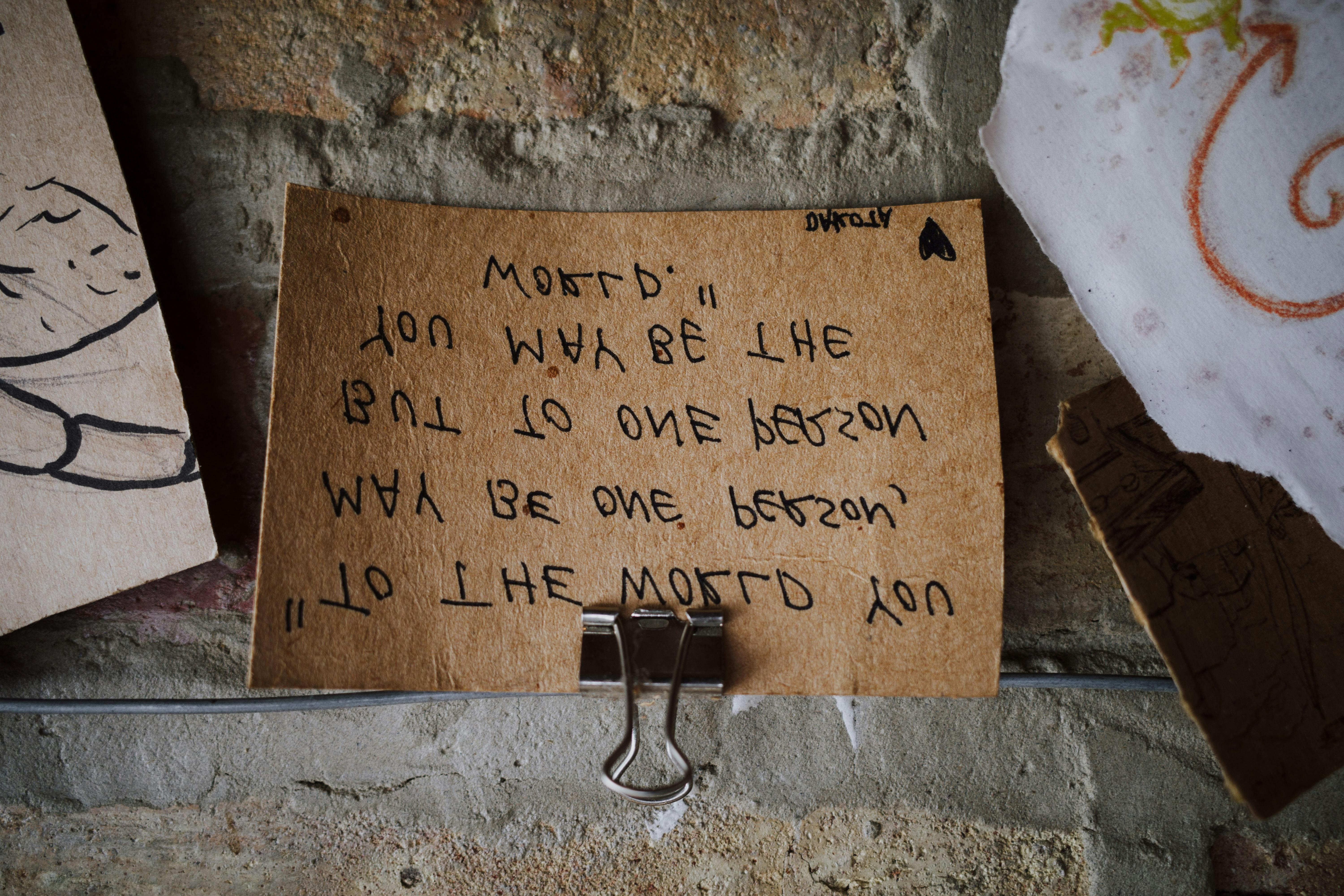



WORLD'S OFFICIAL MAGAZINE FOR CAUSES











ON THE COVER: CAREY COX PHOTO BY:
SHANI HADJIAN
AwareNow Magazine is a monthly publication produced by AwareNow Media™, a storytelling platform dedicated to creating and sustaining positive social change with content that inspires and informs, while raising awareness for causes one story at a time.
DEBORAH
ADAM
SONJA MONTIEL
LEADING
MYLES FRESNEL, ALEXANDER TAYLOR
RAUL ALVAREZ
DETERIORATING WITH
SYLVIA MIGNON, NSSC
GABY
HELEN

legacy: (n.) a lasting impact that transcends time, built not on what we keep, but on what we give



In the context of the Human Cause and AwareNow, legacy is not about wealth or fame—it’s about the influence we leave for those who come after us. It’s the courage to rewrite broken scripts and the strength to redefine what power and perseverance truly look like. Legacy lives in the choices we make today, the truths we speak, and the paths we clear for others tomorrow.
As we honor those who’ve come before, we must also ask ourselves: what are we building with purpose and intention? In a world that often looks forward without looking back, we must carry our histories as beacons to guide our future.

This month, Pride Month shines a light on the resilience and courage born of the 1969 Stonewall Uprising—a celebration of LGBTQ+ identity, rights, and progress. We also commemorate Juneteenth on June 19, marking the emancipation of enslaved African Americans and honoring a legacy of freedom and resistance. On June 20, World Refugee Day calls us to uplift the stories of those forced to flee persecution and displacement, reminding us of shared humanity and the urgency of global solidarity. And as African‑American (Black) Music Month continues, we honor the rich musical heritage that has shaped culture and culture’s shape, asserting that creative legacy is also a social legacy.


In June, legacy isn’t just a concept—it’s a call to action. It asks us to remember, to celebrate, to stand, and to build. To use the past not as a chain, but as a foundation. To leave behind more than memories—to leave behind momentum for the stories still unfolding.

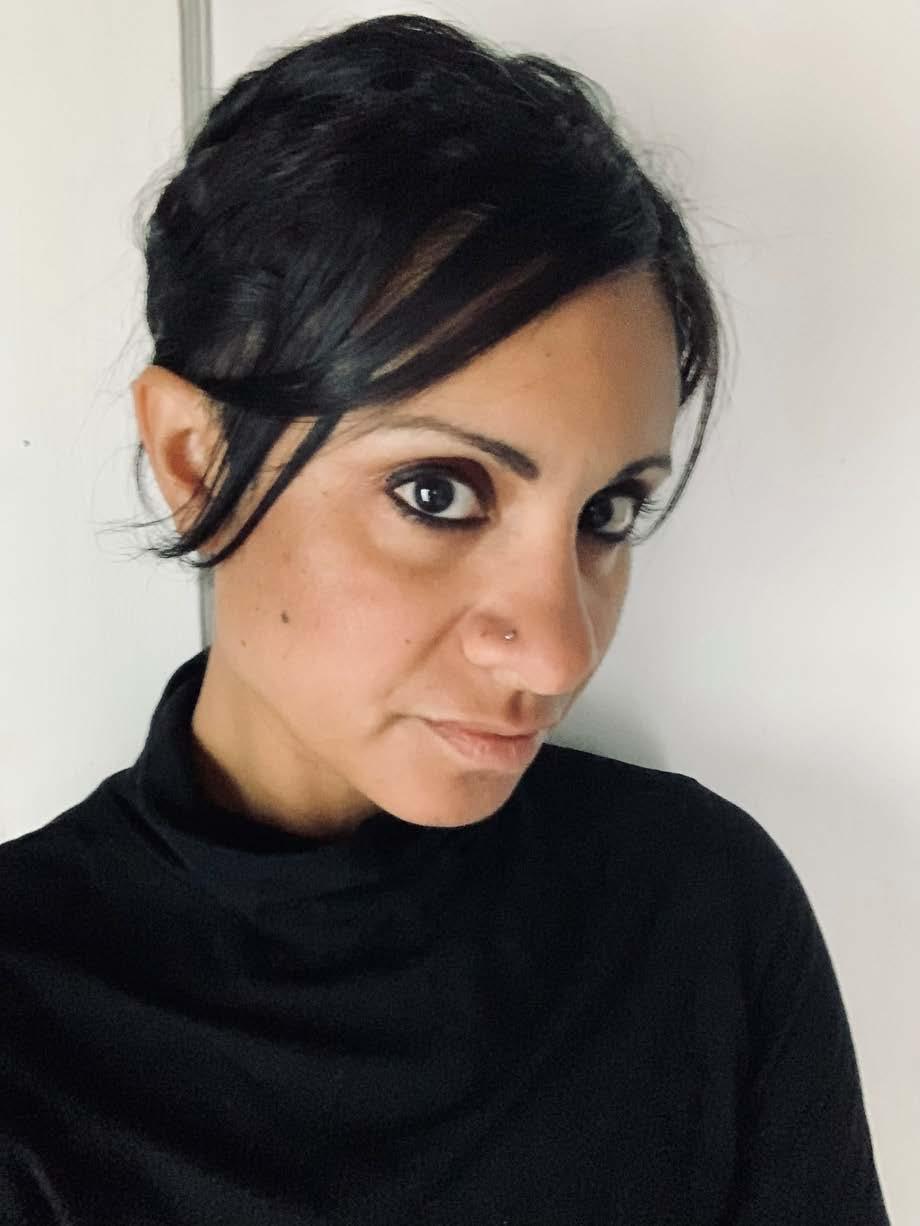
ALLIÉ McGUIRE
CEO & Co-Founder of AwareNow Media
Allié McGuire began her career as a performance poet, transitioned into digital storytelling as a wine personality, and later produced the Hollywood Film Festival. Now, as co-founder of AwareNow Media, she uses her platform to elevate voices and champion causes, connecting audiences to stories that inspire change.
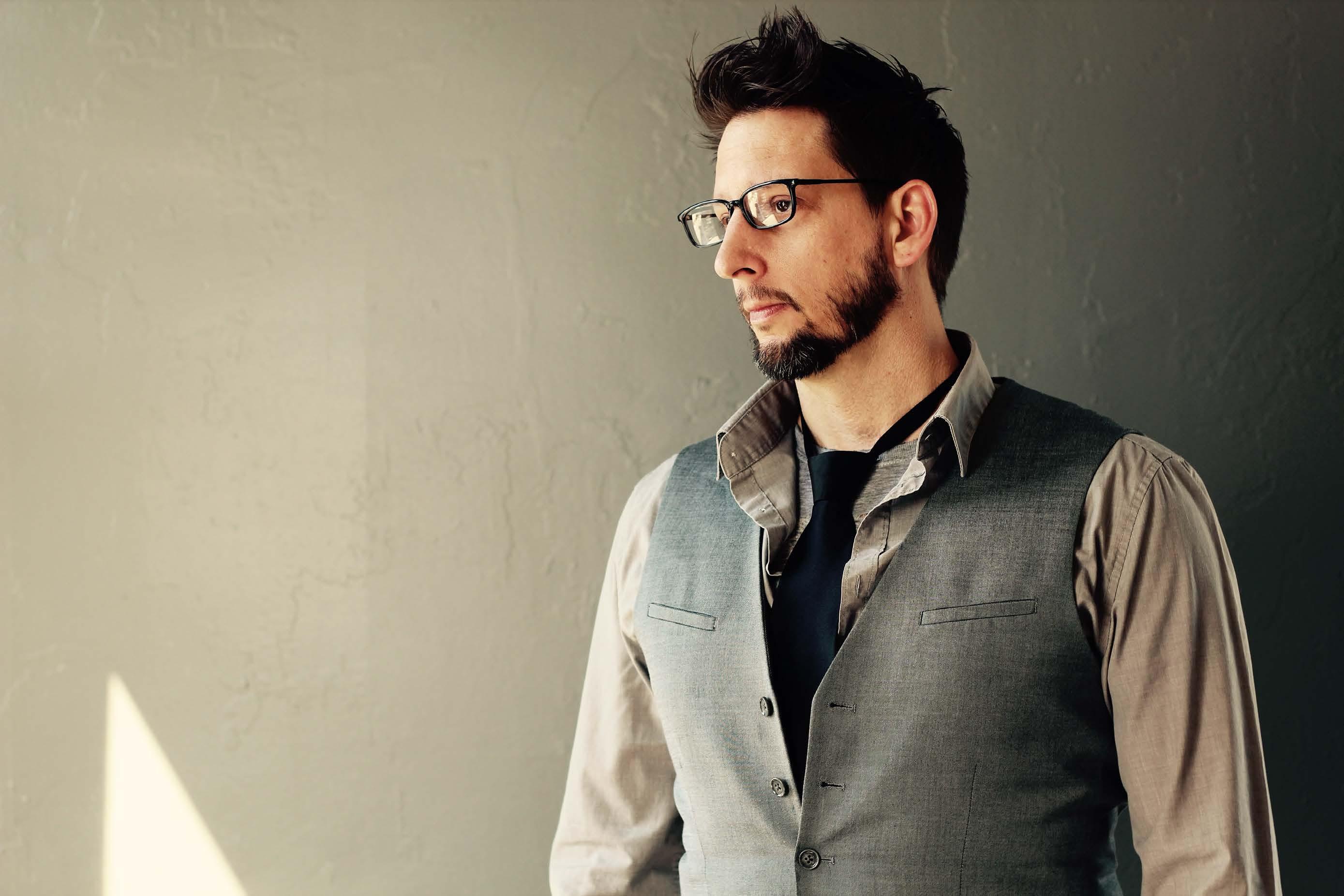
President & Co-Founder of AwareNow Media
Jack McGuire’s career spans the Navy, hospitality, and producing the Hollywood Film Festival. Now, he co-leads AwareNow Media with Allié, focusing on powerful storytelling for worthy causes. His commitment to service fuels AwareNow’s mission to connect and inspire audiences.
The views and opinions expressed in AwareNow are those of the authors and do not necessarily reflect the official Any content provided by our columnists or interviewees is of their opinion and not intended to malign any religion, ethnic group, political group, organization, company, or individual. Stories shared are not intended to vilify anyone or anything. Their intent is to make you think.
* Please note that you may find a spelling or punctuation error here or there, as our Editor-In-Chief has MS and lost vision in her right eye. That said, she still has perfect vision in her left and rocks it as best as she can.

He
WEED FOUNDER OF THE SELF-WORTH INITIATIVE


BY DEBORAH WEED & NARRATED BY ALLIÉ MCGUIRE
Not everyone gets a Burt Kempner in their lifetime…
He was a wisdom keeper, a story sculptor, and a soul-seer.
Burt didn’t just listen—he heard. He could reach into the raw truth of your story, cradle it like a fragile jewel, and re flect it back as something breathtaking. Not polished to perfection, but burnished with meaning. Braver. Brighter. Real.
He was my mentor, yes. But more than that—he was a sacred mirror.
When I brought him my work, he didn't edit my voice—he amplified my soul.
When I was lost, he didn’t just guide me—he reminded me I already held the compass.
He loved deeply. Quietly. Steadily.
I saw it in how he held space for his wife through her health battles—every gesture steeped in tenderness.
I saw it in the way he continued forward after losing his son—though I know something shattered in him that day.
And now that he is gone, you might expect silence. But no.
There is a whisper that stays.
A whisper that says,
“Keep going.”
“Make it matter.”
“Polish it like the jewel it is.”
That whisper lives in every creative risk I take.
Written by Deborah Weed and Narrated by Allié McGuire
https://awarenow.us/podcast/the-whisper-that-stays

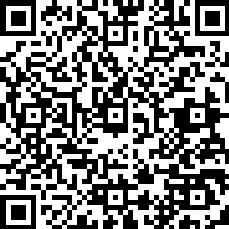


In every moment I dare to speak from the deepest truth.
In every time I ask myself “What would Burt say?”
He may have left the room... but not the conversation.
His words, his kindness, his soul prints— they’re etched into everything I create.
And I will carry him forward—not in mourning, but in momentum.
Because honoring Burt Kempner isn’t about pausing in grief. It’s about creating from it. ∎

Today (and every day), we have gratitude for Burt J. Kempner, a man who brilliantly captured and eloquently explored life with words. Burt was a dear friend who made us all pause with his words and reflect with his voice. He was and is a beautiful light in the constellation of the AwareNow family still illuminates.
Written & Narrated by Burt Kempner
https://awarenow.us/story/in-praise-of-childish-things

DEBORAH WEED
Founder of the Self-Worth Initiative www.awarenessties.us/deborah-weed
Deborah Weed is a whirlwind of creativity and motivation, passionately championing self-worth through her Self-worth Initiative. Her mission? To help families and their kiddos live authentically, energetically, and joyously! Deborah's journey began with a personal crisis: after dazzling in high-pro file roles like working on a $26 million pavilion for KIA Motors and being Citibank's Director of Development, she faced a misdiagnosis that left her bedridden for three years. Her discovery of a 1943 copper penny worth a million dollars turned her perspective around— if a "worthless" penny could be so valuable, so could she! Inspired, Deborah wrote and produced The Luckiest Penny, an interactive musical that teaches kids about self-worth. As a motivational speaker, Deborah brings fun and inspiration to everyone, proving that self-worth is a joyful, transformative adventure.
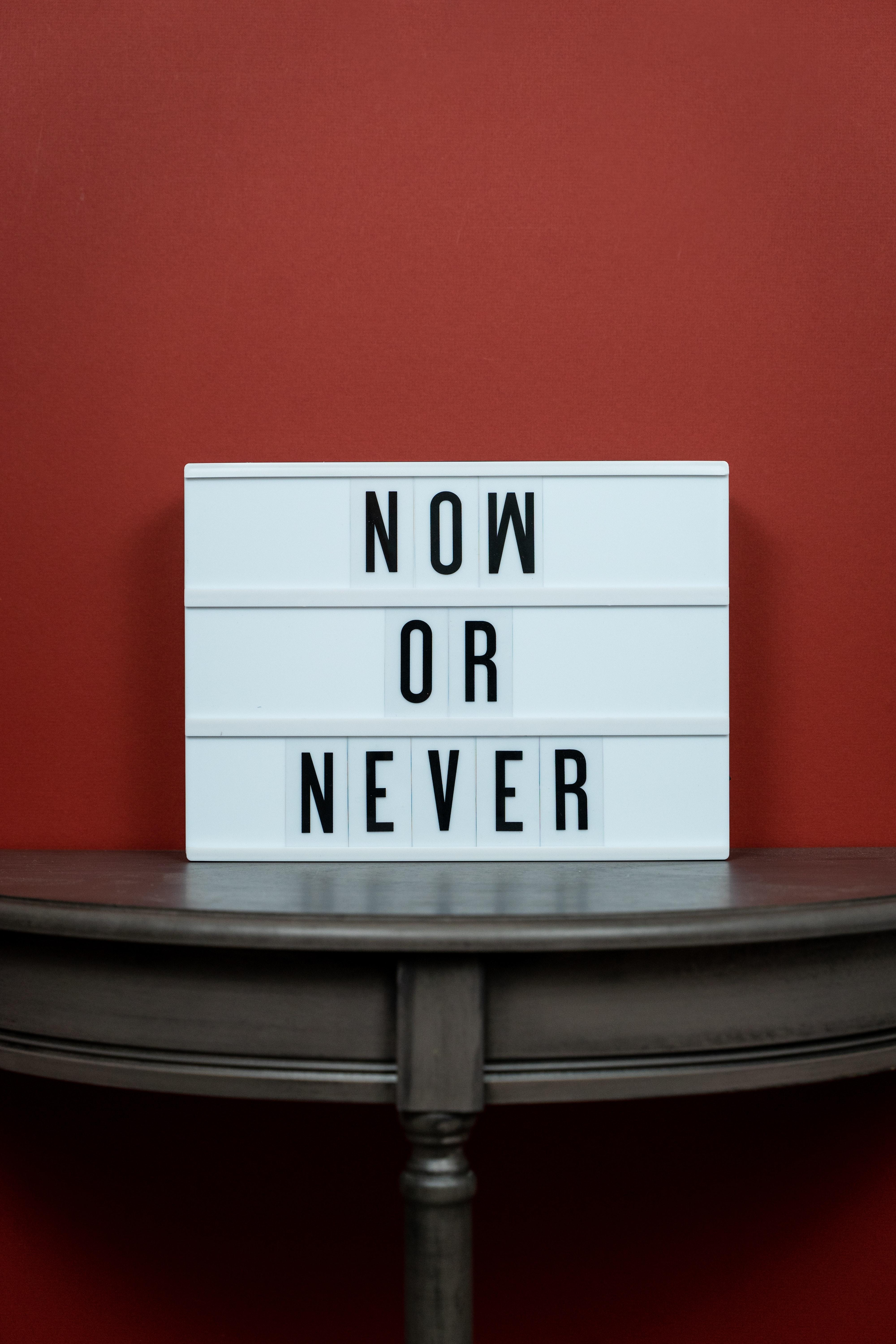

Whatever
it is you’re interested in, go all in.
ROB ROMAN SERGEANT, SPEAKER, REALITY TV STAR & FOUNDER OF HOMECARE ROOTS
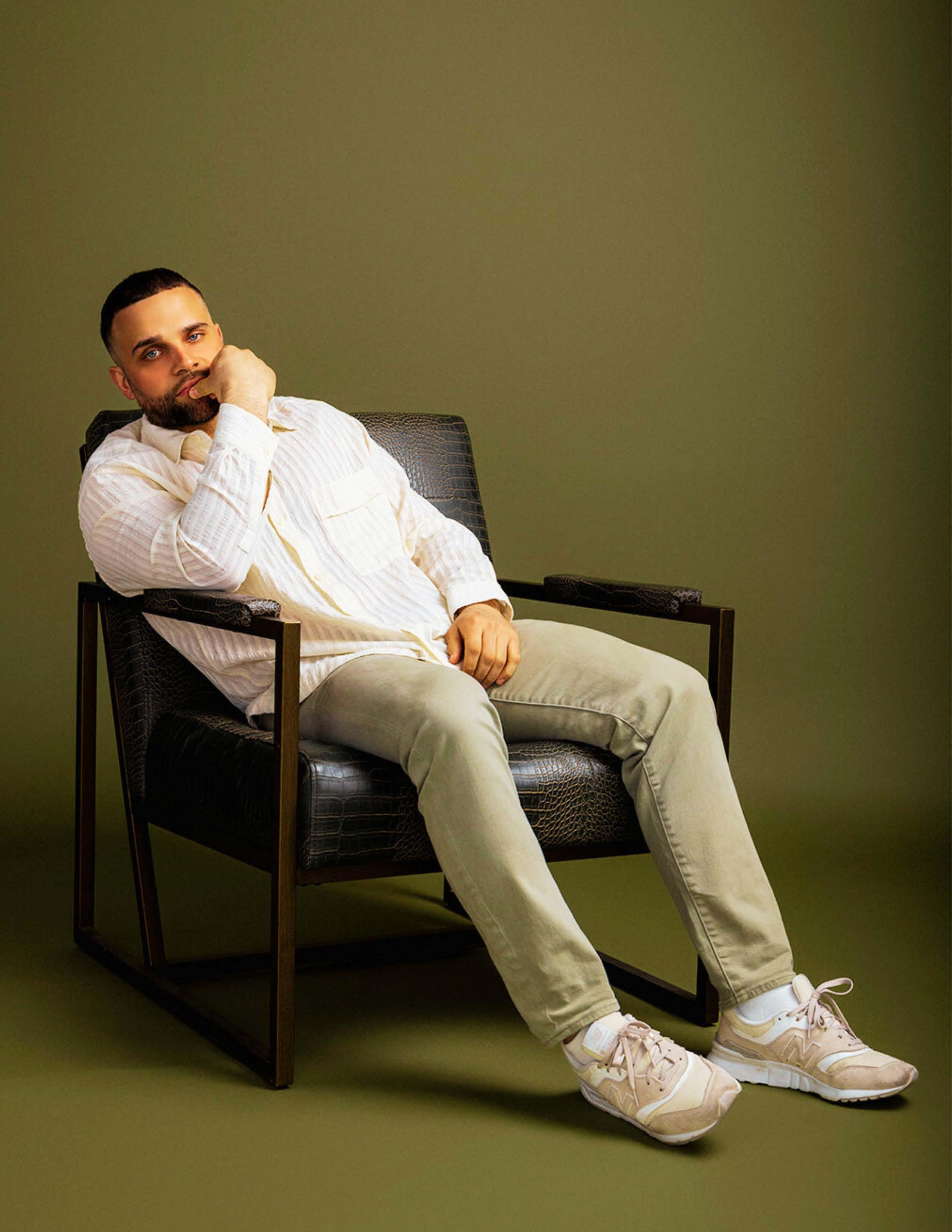

There’s reality TV—and then there’s real life. Rob Roman knows both. From Got to Get Out on Hulu to Squid Game: The Challenge on Netflix, he’s proven his grit on screen. But off screen is where his impact truly lives. A decorated Police Sergeant turned founder of HomeCare Roots, Rob provides free, in-home nursing to medically fragile children across Georgia. For the families he serves, Rob isn’t a reality star—he’s their everyday hero.
ALLIÉ: Let's start by rewinding, shall we? Let’s rewind before Hulu, Netflix, and everything in between—growing up in New Jersey. Let’s go there. What drew you to serve your community as a police of ficer and ultimately become the youngest detective and sergeant in your department’s history?
ROB: Yeah, I mean—Jersey. Shout out to Jersey. We love New Jersey. New Jersey has my heart, my soul, my everything. So basically, where I started was fifth grade. 9/11 happened when I was in fifth grade. I was born and raised in a city called Hoboken, New Jersey—right across the river from the Twin Towers. My mom used to take the

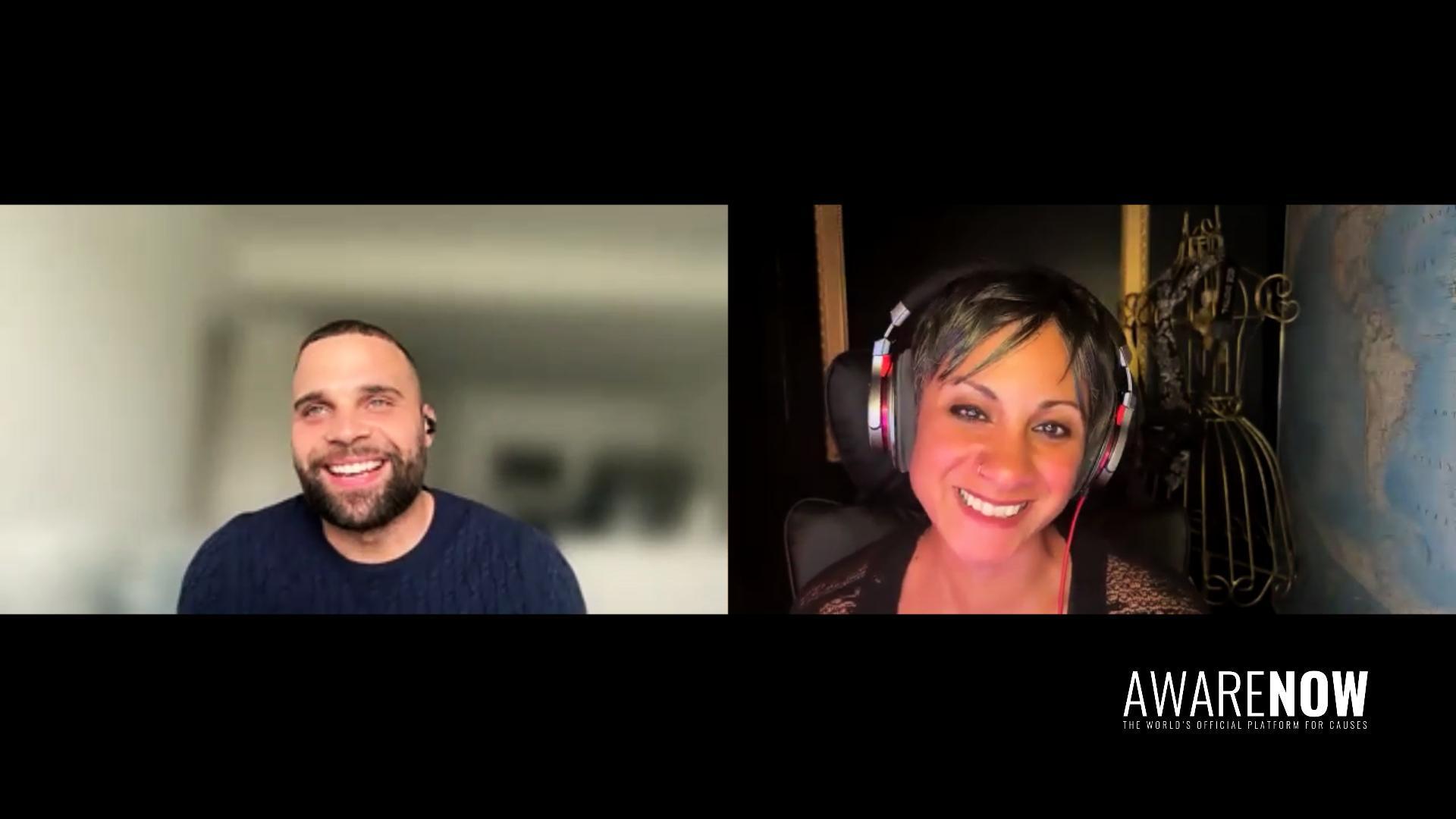
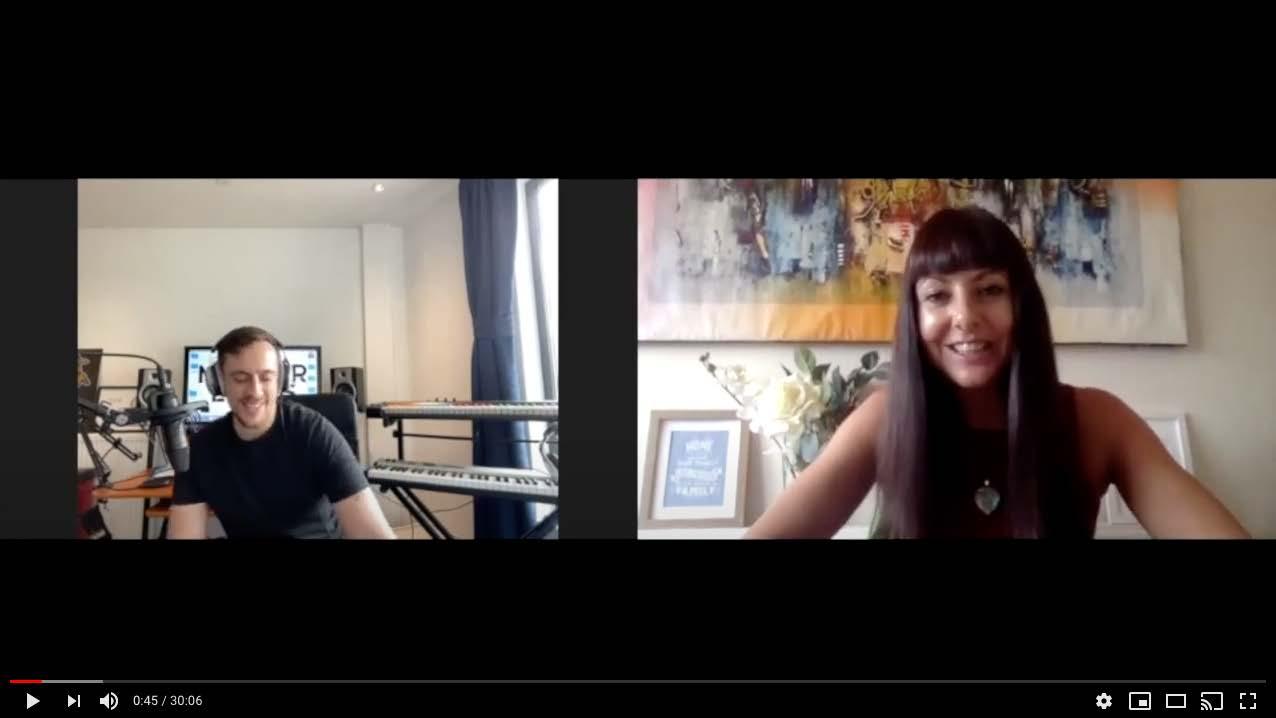
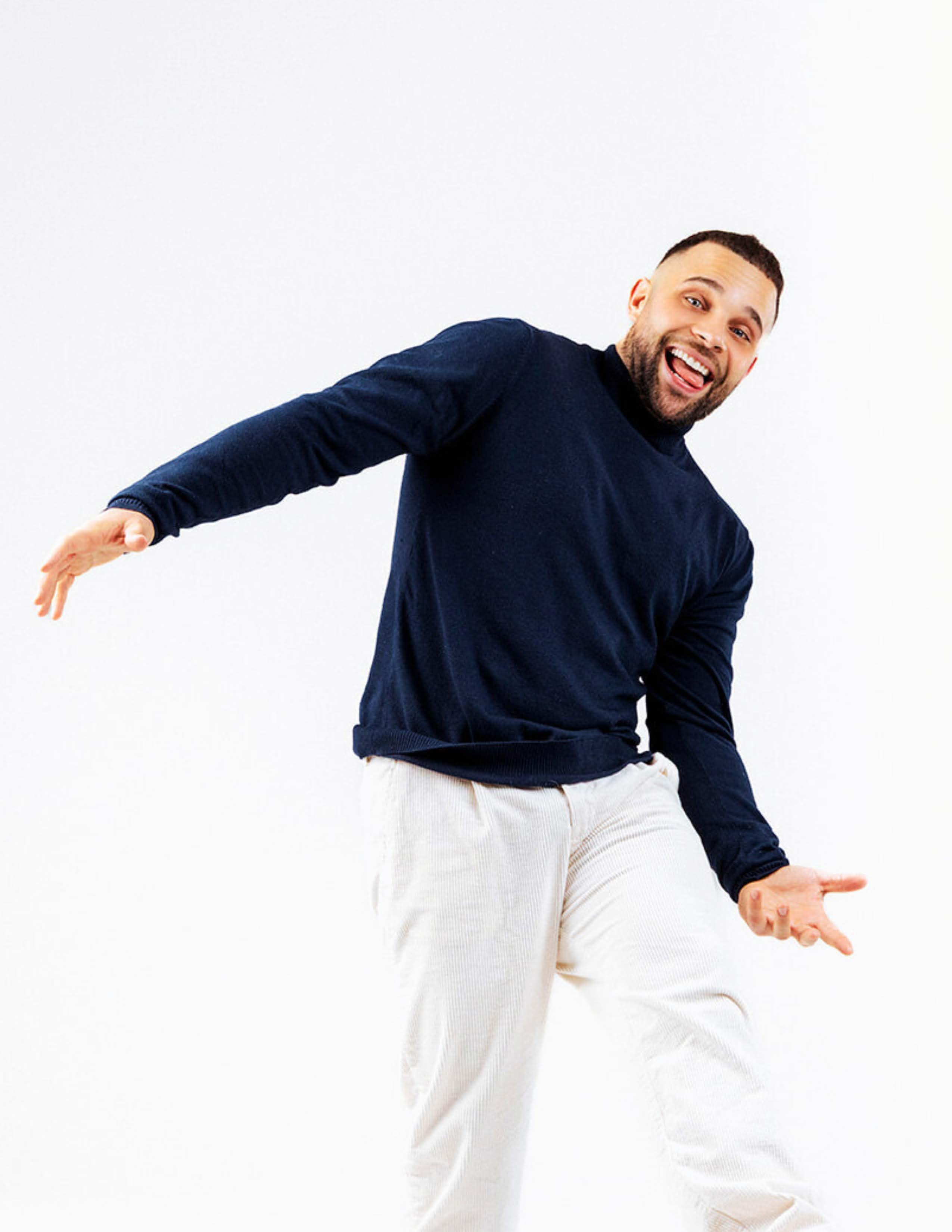


If I had a superpower, it’d be my ability to make decisions, take risks, and trust myself.
ROB ROMAN SERGEANT, SPEAKER, REALITY TV STAR & FOUNDER OF HOMECARE ROOTS
ROB: (continued) I remember that day like it was yesterday. My mom picked me up from school very late because she was stuck in New York City. I remember going to the waterfront and seeing the Hoboken police of ficers go back and forth on boats, bringing people back—people covered in blood and everything you can imagine. As a fifth grader, I was just drawn to that. I didn’t know what was going on, but I knew the world was shaken up. I saw those of ficers as heroes. Hoboken was like the center of the world for me that day.
So, I designed my life to work in law enforcement. I graduated with a degree in cybersecurity—Bachelor of Science. I wanted to work for the FBI and do counterterrorism. That was going to be my thing. But I wanted to get experience first, so I started working for my city. And I just fell in love with it. I rose through the ranks quickly because it was my community—I went to school there, played sports there. I knew the city. So yeah, that’s how it all started.
ALLIÉ: Talk about a single day and moment that can change a life—so many lives were changed that day, yours included. Now, fast forward to a different kind of moment on a different kind of day—what was going through your mind walking onto the set of Gotta Get Out as a rookie surrounded by all these reality icons? What was that like?
ROB: Yes, I like to say I was at an advantage—because I didn’t know. I laugh about it now, but I didn’t know who they were. We weren’t told it was going to be half reality stars, half rookies. We were just told: you’re going to walk into this mansion with 19 other people. Good luck. We were kind of given the rules, but I didn’t know I was among people like Spencer Pratt and Val from Dancing with the Stars. I didn’t recognize them because I’d never watched their shows. So to me, they were just regular people.
I found out very quickly—like, after a day—who they were. And it actually ignited me more. I thought, okay, I’m with people who do this for a living. These are seasoned. If I really want to win this money, I’m going to have to earn it. I’m a competitor, so it raised the stakes. But yeah, I didn’t know who they were at first. People laugh now—especially with TikTok—because Spencer Pratt’s all over TikTok with his wife, Heidi. And everyone’s like, “Oh my goodness, Spencer Pratt!” But I just know him as ‘Spence’. He’s not “Spencer Pratt from The Hills” to me.
ALLIÉ: Yeah. At the end of the day, people are people.
Okay, I’m switching gears again. Let’s go to HomeCare Roots. You founded HomeCare Roots with a mission—a powerful one. Can you tell us what led you to start this company and why providing care for children and families means so much to you?
ROB: I want to say first that life is about making decisions. Most people have a lot of ideas but don’t execute. I don’t have anything special about me. I like to say this—I’m as normal as they come. I’m just an average person. But if I had a superpower, it’d be my ability to make decisions, take risks, and trust myself.
This business I started—I love it. It has my whole being. It’s the best thing I’ve ever done. And I’ve done some pretty cool stuff, but this is the best—hands down. It started with a TikTok. Crazy, right?
Long story short, I started making TikToks in 2020 to relieve the stress of law enforcement. I was a SWAT operator for five years. COVID hit. There was a lot going on. I just wanted something fun. That led to You Bet Your Life with Jay Leno—they found me through TikTok. That led to Squid Game. And on Squid Game, I met some of my best friends in the world. One of them was a guy named Brad, who has had a home healthcare agency in Georgia for 15 years. He’s kind of a pioneer—because when you think of home health, you think geriatrics. But he focused on helping children with medical and complex disabilities. For a year and a half, me, him, and two others just traveled the world together. We were inseparable.
One day, Brad said, “You guys should come down to Georgia and start this business. I’ll help you. It’s a lot of paperwork, but I’ll help.” So we did. We took a leap of faith. I left New Jersey. My partner left St. Louis. Our other partner left Canada. The three of us—who met on Squid Game—started this home healthcare agency.

ROB ROMAN SERGEANT, SPEAKER, REALITY TV STAR & FOUNDER OF HOMECARE ROOTS
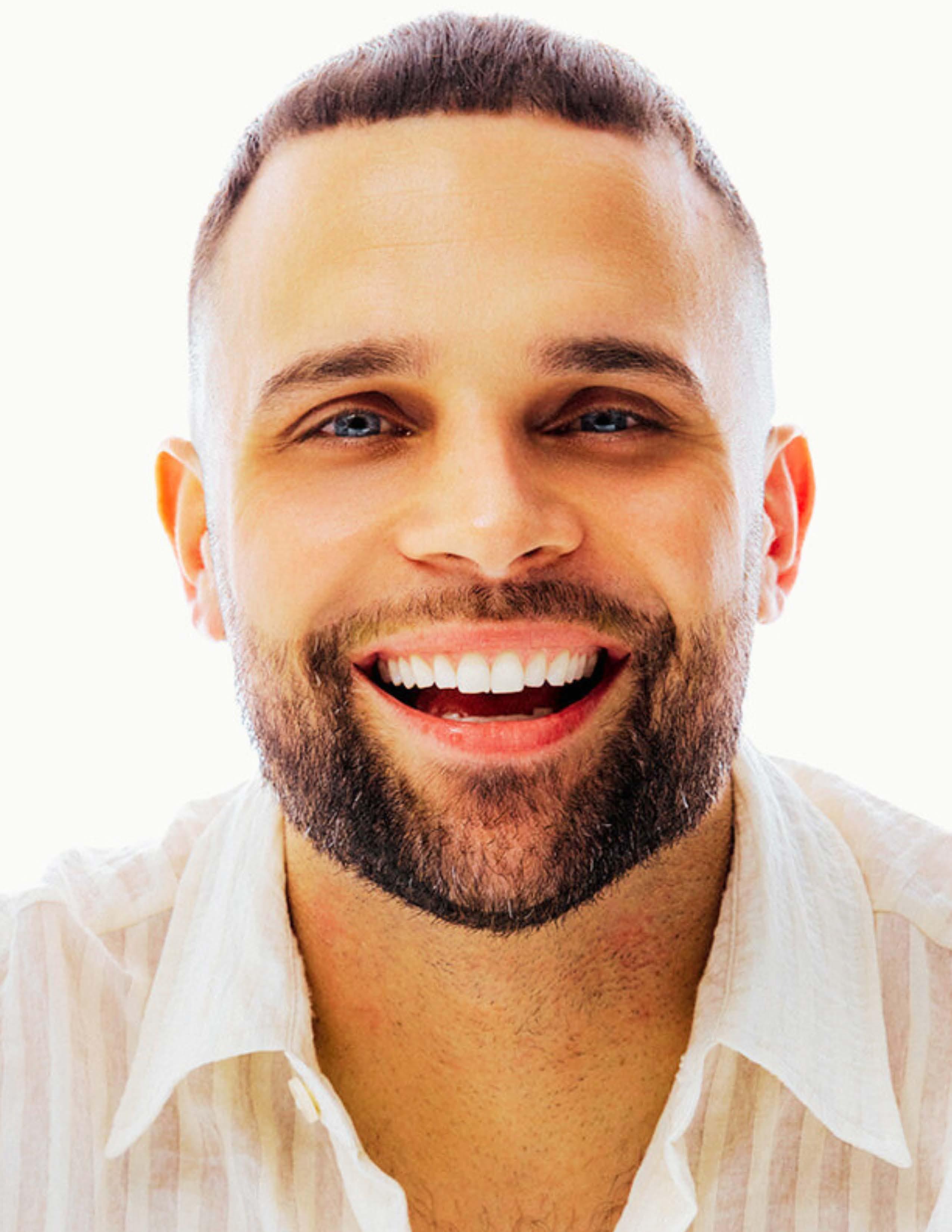

“You can spiral down—panic attacks, anxiety, depression, alcohol… or you can spiral up.”
ROB: (continued) It’s 100% Medicaid-funded. Medicaid pays our company. We hire nurses who go into the homes of children with medically complex disabilities. Most are non-verbal, wheelchair-bound, suffer from seizures—they have incredibly difficult lives. And the parents, typically moms, are doing everything they can. Just having a child is dif ficult. I know I was a handful for my mom. Now imagine that plus a disability. So, we’re here to help lift that weight. But yeah —it all started with a TikTok that led to Squid Game, and now I’m in a business that feels destined for me.
ALLIÉ: Isn’t it interesting how all these connections come together? Like—Squid Game?! And now this incredible work. I’ll say, I wish I’d known you a long time ago. I’m a mother of six. One of our children had special needs. And I didn’t have the care or support of a program like yours. So let me pause to say, as a mom who knows that world— thank you.
ROB: Yeah, you’re welcome. And people don’t know—most people don’t know this service even exists. Even in Georgia, people don’t realize Medicaid provides home healthcare. I didn’t do it in Jersey because there’s a lot of red tape. I didn’t know how to get started. Brad helped me navigate all that—the policies, the procedures. Now we serve the entire state of Georgia. And every state has something like this. But parents don’t know. It’s hard. When we meet a parent and tell them, “Hey, we’ll send a nurse into your home completely free. Oh, and we’ll pay you to do the work you’re already doing for free”—they don’t believe it. But it’s real. And it’s an incredible service. I just wish everyone knew about it.
ALLIÉ: I do too. I wish I had when I needed it. The fact that you’re doing this work—it’s awesome. Thank you. So, as someone who’s navigated extreme pressure in so many ways—on national television, in the line of duty—how have your experiences in law enforcement shaped the way you lead, serve, and show up for people, whether in the community or on set?
ROB: I’ll say this: my business is my favorite thing in the world. But law enforcement is the greatest career on earth— because it sets you up to navigate the rest of your life, if you do it the right way. I worked for one of the greatest departments in the world. They trained me right. They gave me experiences, mentors.
In law enforcement, you show up to everyone’s worst day. We live in a dark corner of the world. No one calls us to say, “Come to the birthday party.” Every call is someone’s trauma. Five days a week, every week, for 25+ years. So, you reach a point in your career—especially in inner cities—where you have to figure out: How do I navigate this trauma? You can spiral down—panic attacks, anxiety, depression, alcohol… or you can spiral up. For me, I built a toolbox.
Number one is a support system. I have the best parents in the world. I have the best friends in the world. I made sure I attracted those good friends. Number two is therapy. I have an outside person who doesn’t know anything about me and doesn’t judge me. And I just talk to that person. Number three is faith. I’m a Christian. I go to church every week. I read the Bible. I didn’t become a Christian until I was 26 years old because I was navigating this world of trauma. That ultimately helped me the most. It’s having that faith, having a therapist, having family and friends… and then going on adventures. Reality TV, to me, is an adventure. It’s something else I get to do in this beautiful life that I get to live.
Exclusive Interview with Rob Roman https://awarenow.us/podcast/got-to-give-back



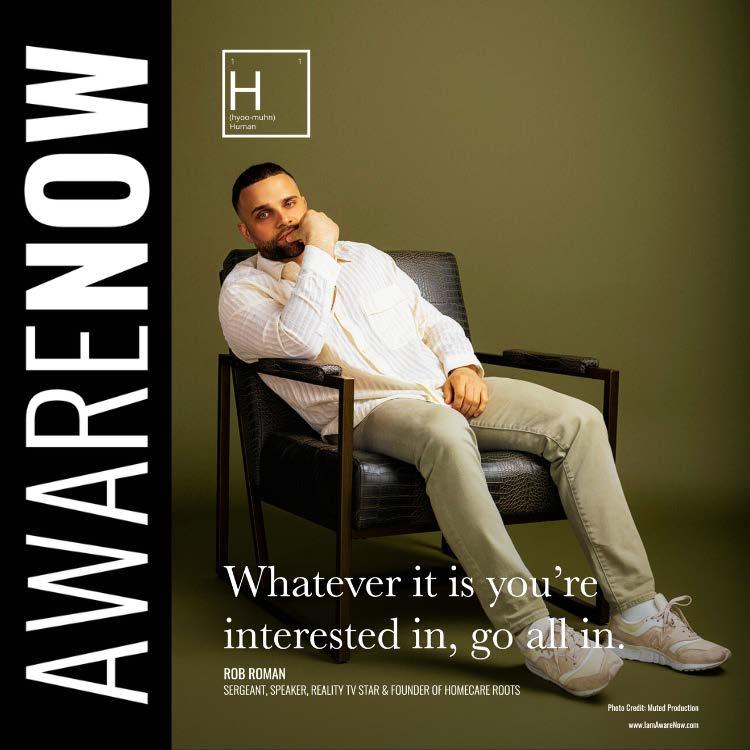
ROB: (continued) So, pressure doesn’t really get to me. There’s a lot of negative and bad that goes on in the world, right? If I have the ability to freely move my body and my mind is okay and healthy, I can do literally anything I want. And if I fail, who cares? I have people who love me. That’s how I navigate all this.
ALLIÉ: I love how you say it’s not just one thing—it’s a mix of all these different things. Let’s go here… You’ve now had your feet planted firmly in two worlds—entertainment and service. Looking forward, what’s next for Rob Roman? What mark do you ultimately hope to leave, whether on screen or off?
ROB: I will say, I’ve thought about this a lot. I want to be—and I’ll give you two answers. First, I want to be remembered as someone who made people’s lives better because they met me. No matter how or in what way, if we met—when we crossed paths—and you think of Rob Roman, I want you to think, “Ah, you know, he was funny, or he helped me, or he inspired me...”, or there was just something I did that left your life a little better because you met me. That’s my overall 30,000-foot view of how I want to be remembered.
What’s next in terms of what I’m going to do? My number one focus is growing my business. I want to reach as many families in the state of Georgia as humanly possible, help them, and continue to cultivate those relationships.
And I also want to do more reality TV. I mean, I love competing—it’s fun. I can’t stress enough just how fun it is. Whatever it is you’re interested in, go all in. Have fun. Do it. Experience it. Fail, win, lose—just navigate this human experience we’re all having. So, I want to do more competition shows. I want to grow my business. And I want to have more adventures.
Really, my favorite part about all of this is meeting people. Again, in law enforcement, I was surrounded by incredible mentors—amazing people who took me under their wing and helped me navigate that. With Squid Game, I met some of my best friends in the world and my business partners. With Got to Get Out, I’m now incredibly close with half the cast. I mean, when I go to California, I stay at Val’s house from Dancing with the Stars. People lose their minds when they hear that—I stay with Val and Jenna. I hang out with their son. Steven from the show comes out with us. That’s what life is about, right? Life is about having good people around you, serving them, and—hopefully—things come back to you.
So yeah, that’s what’s next for me: grow the business, get on more shows, and live more life. ∎
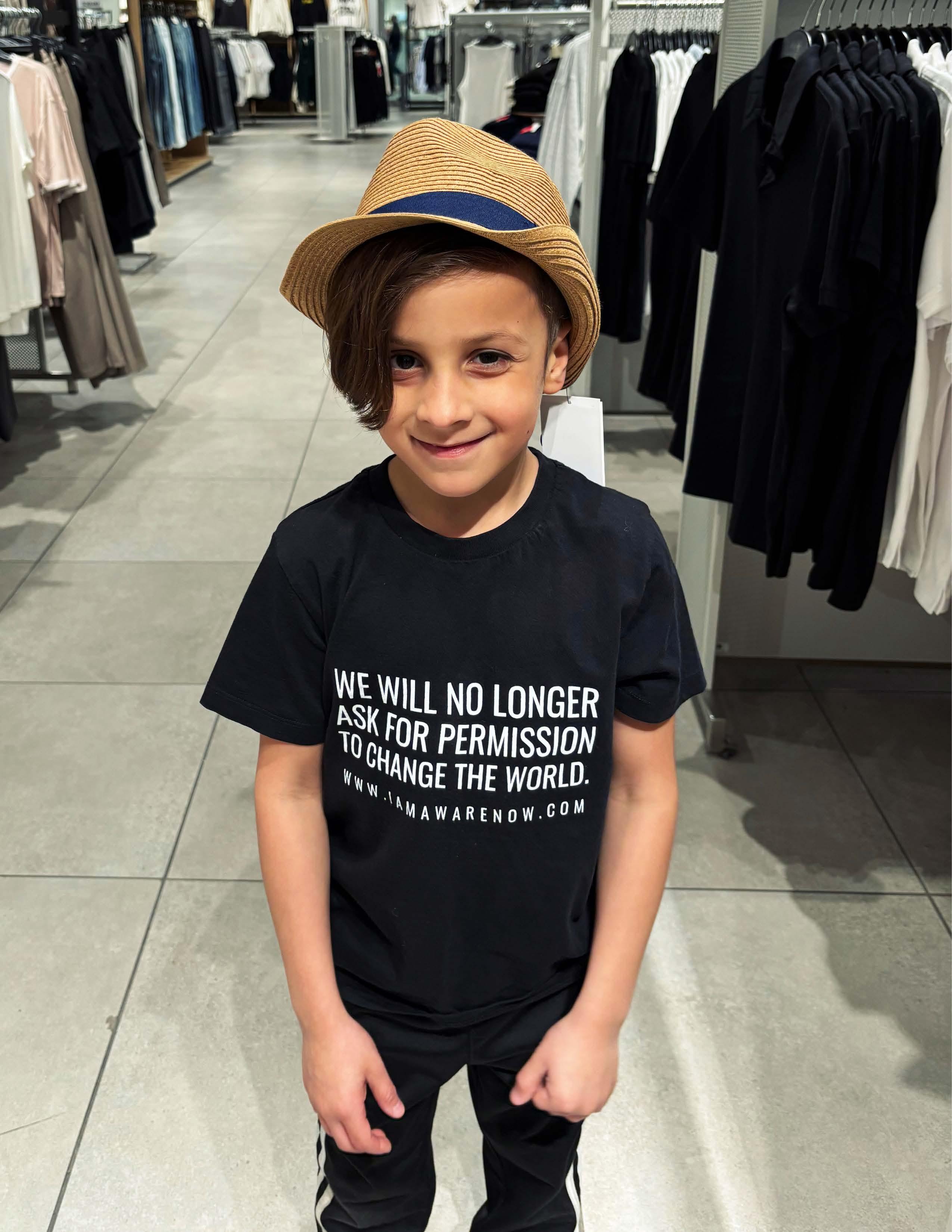

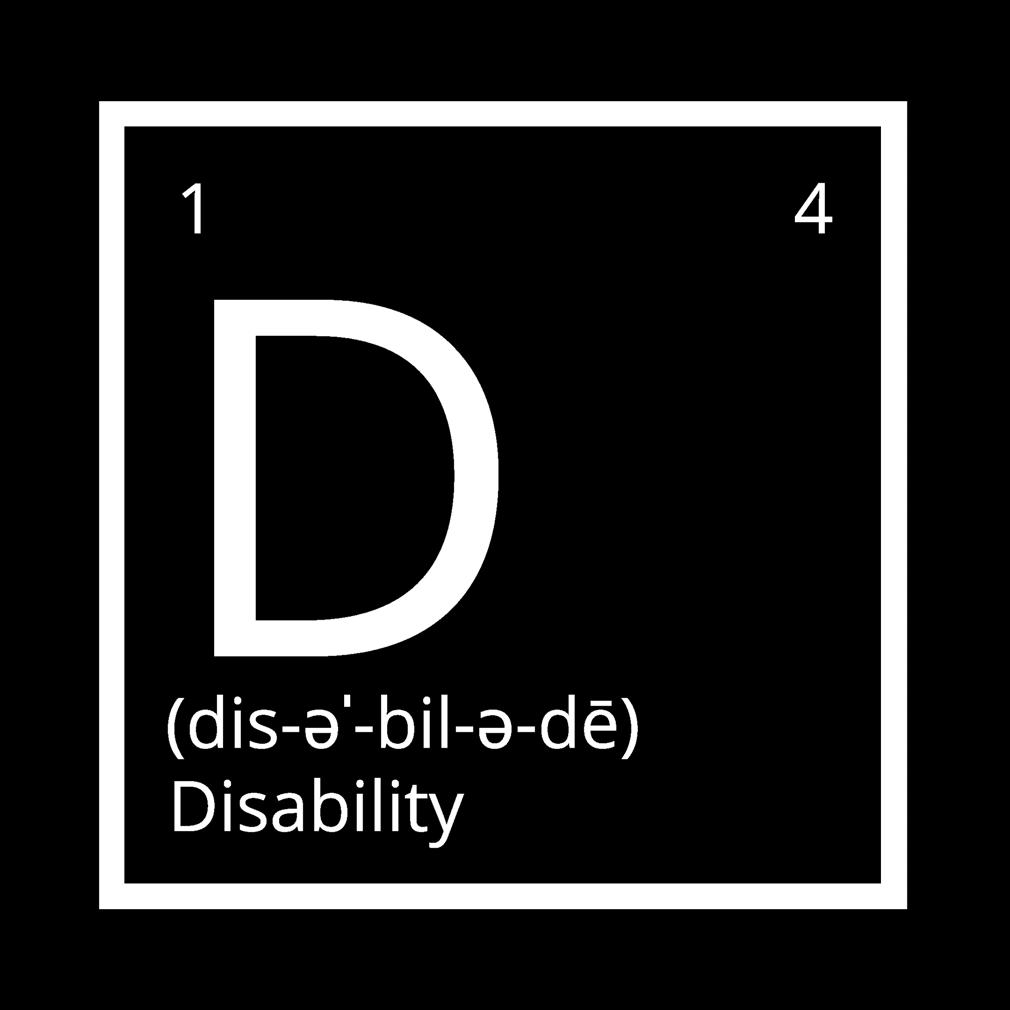



In a world quick to label and limit, Carey Cox defies definition. Actress, advocate, playwright, and now mother, Carey brings authenticity to every role she inhabits—on screen and off. Known for her portrayal of Rose Blaine in Hulu’s The Handmaid’s Tale, she’s not just acting; she’s rewriting the narrative. Diagnosed with Ehlers-Danlos Syndrome, Carey doesn’t hide her disability—she leads with it. As the final season of The Handmaid’s Tale comes to a close, Carey enters a new chapter, both professionally and personally. With the release of her indie film Where Did The Adults Go? and the arrival of her first child, Carey’s voice in the industry feels more vital than ever.
ALLIÉ: Thank you, Carey, for joining me here to share this space and share your story.
CAREY: Well, thank you. That was so kind. That was such a nice intro.
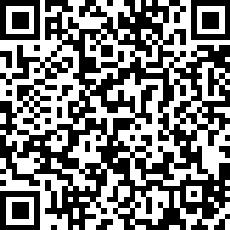




“My history with The Handmaid’s Tale goes back to when I was a teenager.”
CAREY: Thank you. I always like to say that it comes after a long history of many people working to make spaces for people like me, so I always like to acknowledge that this has been something that people have been working at for a long time. I feel bad because, up until I started identifying as a disabled person and a disabled actor, I wasn't really even aware of all of the years of advocacy and the climb that's been happening for so long to be welcome in not just acting spaces and story writing spaces, but every space as disabled people. So it's very kind to get to wear these descriptions now, and I owe it to a lot of people who came before me.
ALLIÉ: Carey, your journey as an actor has spanned stages and screens, but The Handmaid’s Tale marked a cultural moment—especially with the introduction of your character, Rose. What did it mean to you, personally and professionally, to step into Gilead with a limp, a cane, and your full self?
CAREY: Oh, gosh. Well, it was amazing. My history with The Handmaid's Tale goes back to when I was a teenager. My mom gave my sister and me the book, and it was my sister's favorite book. My sister passed away about 10 years ago, so getting to do this journey now, I often think about her and what she would be saying about this and me getting to be a part of it.
It had such an impact on her at the time and then had such an impact on me. I was somebody who was a little scared to watch the show at the beginning because of how relevant it is and because I’m a very sensitive person. So I had to do a big catch-up. I’d only seen a little bit of season one when I had the opportunity to audition, and so I did this long binge in my room—basically crying for weeks, just watching this show all at once. And that was such a great way to absorb it because I couldn’t escape the world. I was fully immersed in this world for so long, and it was all I could think about and all I could talk about.
And it means so much because Rose doesn’t exist in the book, and the TV show covers so much—it goes so beyond this incredible book. And there’s a scene earlier in the show that I think a lot of people may have missed, where you see a lot of disabled people being executed in a flashback to the beginnings of Gilead, when June is first picked up and becomes a Handmaid. And that was a question that was then unexplored in that way. We didn’t see a story specifically of what happened to specific people (with disabilities)—we just knew it was something that existed in this world. And it’s something that has happened. It happened before and during World War II.
There’s a wonderful documentary—Disposable Humanity. My husband is a producer on this. Everybody should check it out. It’s about the eugenics movement and the execution of a lot of disabled people at the beginning of and right before World War II. And it’s something that’s forgotten a lot—about that part of history. So then getting to explore that through Rose, who is in this privileged position, and the audience has been left to kind of draw conclusions about her place in society and how she was able to survive and get to this point… It’s kind of the unexpected story. It’s more complex than you would think that a portrayal of a disabled person in this world would be, because it’s that story of “What’s right for me doesn’t work for thee.” It’s the exception to the rule. It’s what privilege can do for somebody.
So it’s very interesting. And the audience—it’s been very cool to read about the conclusions that fans have drawn, the connections that they’re making, and what Rose’s life in Gilead would look like if she wasn’t privileged then, versus what her life in pre-Gilead America would have looked like. There’s a lot of discussion about that—What’s a better life for her? Does she enjoy privileges in Gilead that she wouldn’t have even in pre-Gilead America? It’s been very interesting to hear what people have to say about that.
ALLIÉ: You were pregnant while filming this final season—a poetic parallel, perhaps, to The Handmaid’s Tale’s themes of birth, power, and identity. What was it like actually carrying a new life while portraying Rose in a world so deeply shaped by the politics of motherhood?


“It made me wonder about my own place and my own identity, becoming a working person who was going to have a baby.”
CAREY: It's very interesting. While I was going into this season and talking with casting and producers about how that would work and how long into the pregnancy I could film—because everything was lining up down to the wire towards the end—they worked with me so beautifully to make sure that I could film my final scenes before I was at a point where I couldn't travel anymore, because it’s filmed in Toronto and I live in New York. Luckily, it's a very easy plane ride, but there would have been a point when it would have been too dangerous for me to travel.
For my last episode, they allowed Joe, my husband, to come with me just in case we were to have a Canadian citizen. He was there kind of watching everything. And I just felt so lucky at the time that I had this team who was so willing to work with me, because an actor's job is difficult in that it's inconsistent. We never know when the next job is going to come. Everything is so up in the air. There's a lot of uncertainty, and things like locking down health insurance can be a little bit difficult. But the thing that is wonderful about it is the flexibility. My husband and I have been able to be home with the baby. We've kind of been able to set our own hours in that way. And then when we have a job, the flexibility there—of people being able to work with us and accommodate us—that's something that a lot of people don't have.
I've been reading horror stories about people being fired when they've become pregnant and a reason being given so they can't pursue any sort of legal protections. We have friends who have maternity and paternity leaves that are like two weeks long, three weeks long—if they even get them—or they're unpaid. You know, we don't do a ton to support pregnant people in our country. And then to play a character who, again, has privilege, but her powers are so limited. She really can't still speak her mind, even when she's with other wives in social situations. She doesn't fit in, and she feels meek and timid—to then have more power in a way because of being pregnant, or at least to have more visibility, and to feel like the pregnancy at least allows her more survival.
Again, nothing is simple. At the same time as the pregnancy giving her this kind of spotlight, there's this scene where it's almost like a Madonna treatment. I don't ever want to give too many spoilers, but she's de finitely put on this pedestal as soon as she becomes pregnant. But then there's still so much vulnerability in that, because it's a society that—I mean, when we see the Handmaids give birth, it's their own home births. And the ritual of it puts women in danger. And the idea that women are seen as vessels for new babies is complicated. So it's power—but is it really power? I mean, there were so many questions and so many different things to explore. It made me wonder about my own place and my own identity, becoming a working person who was going to have a baby. But one of the best things about being on that set is there are so many wonderful examples of people who've done exactly that. And one of my favorite days on set was when we were filming a big group scene. Again, it's aired already, but I don't want to spoil it for people who haven't seen it. But it was a day when I got to meet so many other cast members, and it was American Thanksgiving. So we were all sitting around having a Thanksgiving dinner and talking about pregnancy. We went back and forth talking about people's experiences having babies or being pregnant while filming, while on set.
It's such a common thing for actors to go through—and particularly on this show. There are so many examples of people who have done that, who've made it work. They have been filming and then run back to their trailer to pump or to breastfeed and then go back and shoot more scenes. Just the blending of life and art… it was very cool. I felt very lucky, and I was very protected. They really took care of me, especially when some of my pregnancy symptoms were getting a little hard to manage. I was so supported by everybody. In particular, Yvonne. There was one time I had to go to the hospital because I had some pain that didn't seem normal. It ended up being normal—I mean, that's with so many things about pregnancy. I find out, okay, this is normal—it doesn't feel like it, but it’s okay. But she looked out for me, and she really advocated that I have a separate little space and an air mattress. She made sure—because she'd been through it herself—and she felt protective in that way. So everybody was wonderful, and I was very grateful.

CAREY COX ACTRESS, ADVOCATE, PLAYWRIGHT & MOTHER
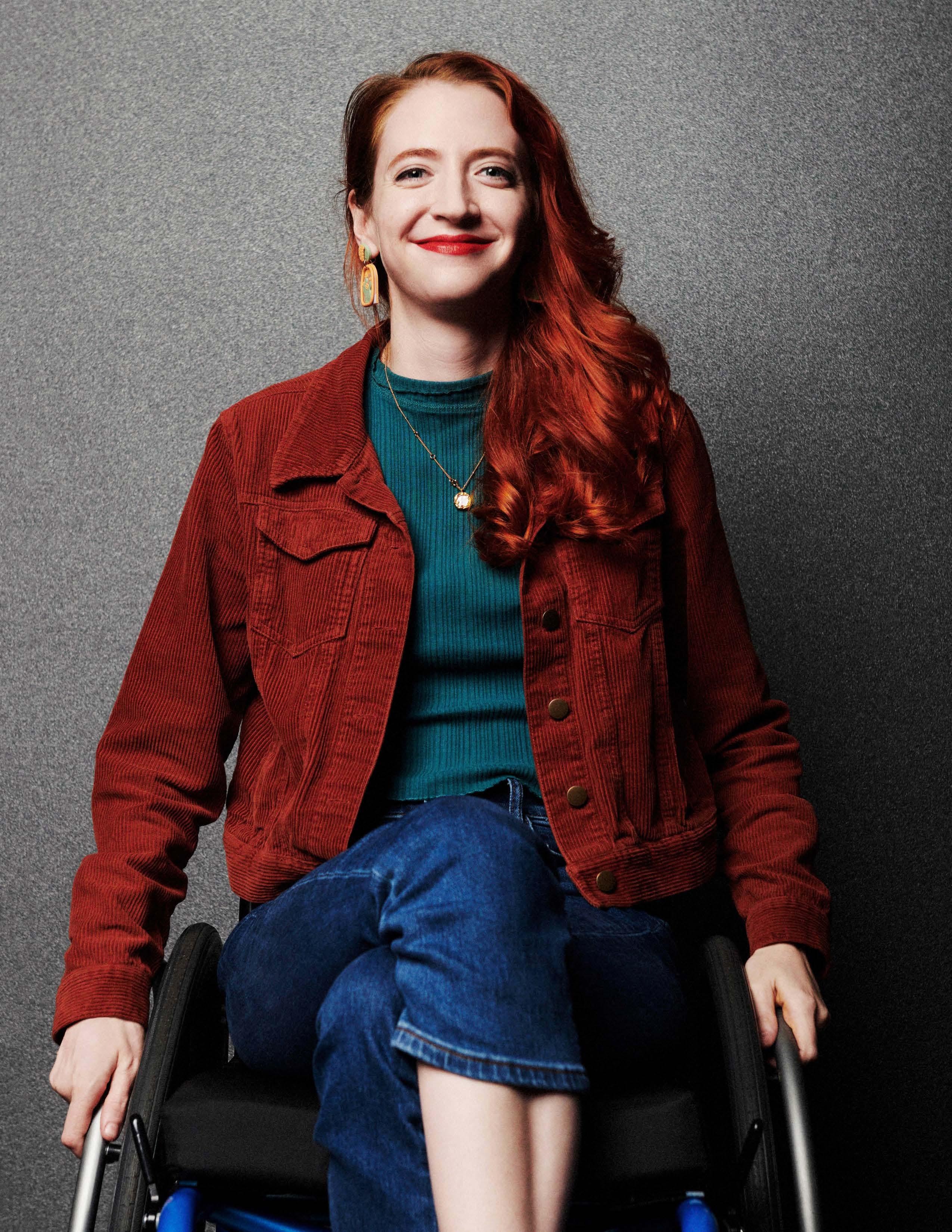

ALLIÉ: You’ve spoken openly about transitioning to auditioning as a disabled actor. What was that internal shift like for you—not just professionally, but emotionally?
CAREY: It's like you suddenly find this sense of belonging, and this wonderful, vibrant world, and it feels like, why didn't I know this was here all along? But then the fact that you didn’t know it was there says something still about what everyone else is missing out on—and all of these wonderful, wonderful people who, I mean, disabled people in general—have a lot in common with parents in having to be flexible and creative and adapt. And that is a skill that so many people can benefit from. In the disabled writing, acting, producing, and directing community, there are so many talented people with unique perspectives that the rest of the world is missing out on.
It becomes frustrating every time someone does something incredible, and it feels like only our community takes notice of it. We have to create our own projects. We have very few people in our community who have enough power to make social or political change. We have to be very loud, and there are still a lot of people who aren’t listening. So it’s bittersweet, finding that community.
ALLIÉ: How has identifying as a disabled actor changed the way you see yourself and your place in this industry?
CAREY: Yeah, it's interesting, and it's changed a lot. I'm somebody who—I question everything. I'm kind of an overthinker, to a fault, I think.
At the beginning, there was this desire to not change too much before I started identifying as a disabled actor and seeking out those spaces and looking for the people who were looking for me. Before I even knew that those people were out there, I was doing a lot of hiding or trying to hide my disability, trying to pass, because there was this resistance and this fear of what I would lose. I’d been very fortunate in my theater career up until then. When I was in grad school, I was working at a professional theater linked to the PlayMakers Repertory Company, and I got to play so many different roles—I got to do Chekhov and Shakespeare, but then also do Theresa Rebeck, and got to play loud characters and quiet characters and villains and heroes and romantic partners. I got to do physical theater, and I was afraid of what I'd be losing in that, to have to be open about my disability.
The fact is, I did lose a lot of variety in how I was seen and how I could be cast. But it was a relief to be seen, and it was a relief to feel like, “Oh, there are people looking at me, and I don't have to hide this anymore.” I can be my true self, and I can tell this part of my story. But after a while, it does kind of hurt your feelings, almost, to be pigeonholed and defined by that. We find there are so many stereotypes—especially if disabled people aren't given the opportunity to write their own stories—then you see a lot of the same kind of story over and over again. You see a lot of the same kinds of characters being written—characters who are defined by their disability, or the story is always some inspirational thing.
What I would start to find is, I would get an audition where it was maybe for a non-disabled character. My agents are so wonderful about trying to push any role, not just roles that are written as disabled, but I would find myself going, “I'm not going to get this part because the person in this scene has to yell at me.” There would be little things where I just know—they're not going to cast a girl who uses a cane or a wheelchair in this role because they're not going to want the main character to yell at them. Because what is that going to look like?
You're just so aware of the way that you are perceived. Over the 10 years or so that I've been exploring this identity, I'm coming to this place of really being able to appreciate when I can play a part that's a full person. The disability stories are still really important to be told, because there's such a lack of education about it. But it's wonderful when we can be disabled people and also be full characters—and disabled can be flawed and complex. That's one of the wonderful things about Rose. And especially right now, what's been interesting to see—again, it's so hard to talk without spoilers—but I can just say there's been a flip. It's been interesting to see a flip in how people have perceived her, and I don't think that flip would have been possible if people weren't seeing her as a person first and a character first, and a person with a disability second. Even though I love disabled- first language—again, I go back and forth. It's very complicated. You want to be able to lead with your disability, but then also lead with your personhood. I tend to fluctuate on what feels most important. I go back and forth and back and forth, and I overthink about everything. But it is complicated.
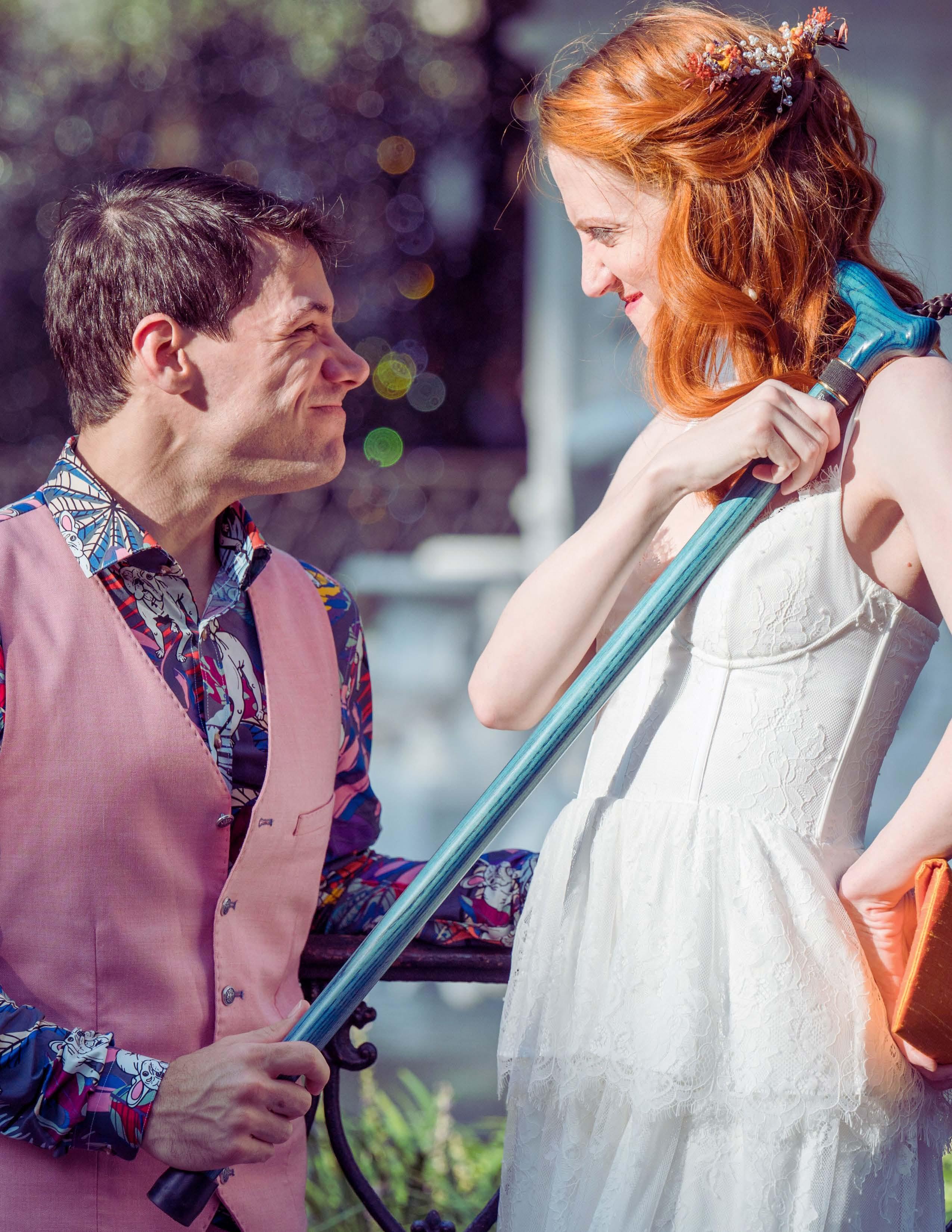

ALLIÉ: As an actor, you star in major productions like The Handmaid’s Tale to independent films such as Where Did The Adults Go. But to bring so many different stories to life you wear many different hats. In the short film, Adoptive, by you and your husband, Joseph Kibler, you both serve as the writers, directors and producers. If you would, for those who have not yet had the pleasure of seeing Adoptive, please share the story behind this brilliant short story.
CAREY: Oh, thank you. Well, it started out as a concept for a pilot that we wanted to pitch as a full TV show. And then, when the Easterseals Disability Film Challenge revealed that their genre for filming last year was buddy comedy, we thought that was perfect for us—because our lives kind of look like a buddy comedy, the way that Joe and I get through the world. And then we felt like it was a good opportunity to explore what we wanted to talk about in our pilot through a short, kind of condensed thing.
And so, it's a story of a disabled couple who want to adopt. They are indulging in some THC treats, because it's fun for them—they're just regular people. And they also use it for some pain relief, and they're having a good time. Then they realize that they’ve mixed up the days of when they're having their adoption home visit, and it's too late to turn back in their THC journey. What it does is stoke their paranoia that's been under the surface—about how they'll be perceived as disabled parents.
So, it's kind of this silly comedy of them trying to hide the things in their apartment that reveal them to be disabled people, and at the same time trying to compensate for their disabilities. Like there's a moment when I take my master's degree and stick it in the hallway so it's the first thing the person sees when they walk in. We were just trying to talk a little bit about that—and about how we knew we would feel when we went on the parenting journey, which then for us started not too long after that, in having our own biological baby.
This idea of, I can do it, I can do it—but I also shouldn’t have to. I shouldn’t have to hide it. But I think I’m going to in this moment because I know I might be judged for it. And then there’s a nice reveal at the end, where they realize that they didn’t have to worry that much. We wanted to explore that feeling of relief that we do feel when we are in what we sometimes call “crip spaces,” you know—when we know that we don’t have to hide or explain things away.

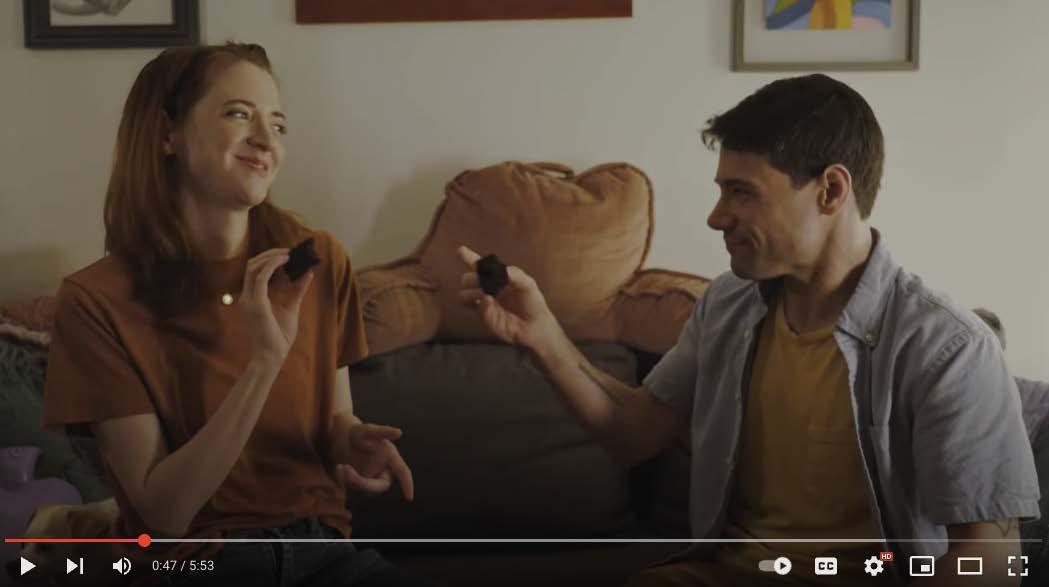

CAREY: (continued) We were inspired by that because we were doing some research into adoption for our pilot idea. We knew that we wanted to start a family, and we knew that we wanted to begin the journey the—quote, unquote— “traditional way.” In just looking at what all the options would be, we found how complicated adoption is. And in our media, it’s so often depicted as this kind of wonderful thing—which it often is—but there are so many other sides to it. And there are a lot of people who, on all sides of the journey, carry some trauma from it.
And in terms of adoption as an industry—it’s an unregulated industry in this country. And the way that it intersects with disability is really interesting, because a lot of children who end up in the adoption process or in the foster system have disabilities. And then a lot of parents who want to adopt might have disabilities. I mean, there are a lot of disabled people who just want to adopt—because disabled people are people like anybody else. But then also, people who might be on an infertility journey might come to adoption not as an alternative, but as a different and wonderful, valid, separate path—and then find that they’re so discriminated against. It’s very difficult to be approved for adoption as a disabled person. And a lot of disabled people wait years and years and years.
We read one story of a disabled couple who went through the process for about eight years, and then finally, about a month after they were approved, the father passed away. So it took them so long to get approved that there were medical complications that happened. And it was just a really sad story about how long they had to wait and what they missed out on then because of that. So we want to explore that in our pilot.
Luckily, after creating our short film, we received a grant from the Easterseals Disability Film Challenge to now create a pilot/web series based on our original pilot. So we’ll be doing that later this year. We’re going to be directing and producing and writing and acting in it, and then trying to get a lot of our community involved—both in front of and behind the camera—to really explore, in so much more depth, this issue. But at the same time, we’ll be looking at it through a comedic lens, because we find that it’s fun for us. We love comedy, but also, people can learn in a way that almost doesn’t feel like learning—or being preached to—or uncomfortable. Comedy is such a great tool in that way. So we’re so excited.
ALLIÉ: Becoming a mother is a story in and of itself. How has your perspective changed since Milo was born? What’s something unexpected you’ve learned about yourself in this new role?
CAREY: Oh my gosh, there’s so, so much to it. It’s like, where do I even begin? My day job for years now—I’ve done waiting tables and all sorts of other day jobs—but since I moved to New York, it was nannying. I worked for a babysitting company where people could request you, and you could go for just a couple of days and babysit. It was very flexible, and so it meant I got to babysit like 60 different families all across Manhattan and Brooklyn for years.
I love children. I’ve always felt very protective of children and got to meet so many and learn so much. So going into pregnancy, I felt like I was going to have a step up, right? I’m going to know some things. I’m going to be a bit prepared. But then there are so many things that you’re not prepared for.
The main thing I wasn’t prepared for was the level of how much you love your baby. I mean—and this is not universal, I’m not going to speak for everybody—but my experience was, I felt this indescribable love for him immediately that went beyond anything I’ve felt before. I mean, the closest is my love for my mom, my love for my husband. It was—I talk about craving my baby or feeling like he is a piece of my body. And when time has gone by without being around him, I feel like something is missing. I feel very grateful that that clicked for me like that because it can be helpful in some ways.
But then it also created this intense anxiety that goes... I mean, I lost sleep because I would just be watching him at night. I would worry about every little thing. So when I felt like, with other people’s children, “Oh, I know what I’m doing, this is normal, I’ve seen this with other babies.” Suddenly when it’s my kid, nothing feels normal. I’m Googling everything—you know, which I’m not supposed to do. We’ve reached out to the pediatrician about so many little things
“All of these things that I have cared about on an intellectual level before, now I suddenly care about on a visceral level.”
CAREY: (continued) that just end up being normal. And that’s been a challenge. But at the same time, I’m also talking with a prenatal expert therapist about this, which I’m so lucky to be able to do. She’s described it as the anxiety being “heart-opening”, because it’s created in me this sense of responsibility, and this sense of fierce protectiveness that now doesn’t just apply to him.
So, I find that when I read about things in the news about babies in parts of the world not being allowed baby food because the trucks are being held off—humanitarian aid being held from babies—or when I hear about children in parts of the world being made to do physical labor to build our smartphones… All of these things that I have cared about on an intellectual level before, now I suddenly care about on a visceral level. Where it almost feels like—yes, I know I’m just one person, and I can’t do that much, I don’t have that much power—but there’s this instinctive feeling like, “But I’m the grown-up now. I should be able to do something. It’s my role now to protect these vulnerable creatures.”
So it’s been very, very interesting—the level, the depth of care that I didn’t know I was capable of. Because I thought I cared before, but now it’s on a whole different level. And I hope there’s something I can do with it that’s productive.
I know that it helps me be a better mom. But I also hope it can make me a better person, when we’re able to reenter the world more and we’re not so much in our little bubbles. It’s been this hard thing, but also a gift at the same time. That’s what’s surprised me.
And also just—confidence. I feel so much more confident as a person. I don’t waver as much in what my opinions are or what I know that I need to do.
ALLIÉ: It's a very grounding experience, isn't it? And I hear you a hundred percent when you're speaking about these babies and kids in these other places where you are not and that are not yours. When you become a mother and you look at the world through a slightly different—no not ‘slightly’ different, but very different—lens, you look at these children and you can see your own child in them. So I feel you in that level of anxiety where it's just a different connection that is not only to your own child, but to the world.
CAREY: Definitely. It's beautiful to feel that there are new levels to that, and I hope that it just continues to get deeper. But at the same time, it's painful and very sad. You wish that you could do more. It's also pointed out further to me about how we really need the collective to be able to make change. I mean, we hear, especially in our country, so many stories of one person making a difference, but we really need every person with a parent heart and anybody with a beating heart to come together to make change.
ALLIÉ: With having kids comes having books for kids. In a post of yours, one book you have that you asked your husband, Joseph, to read Milo had you both in tears (and me) as he read to your son. It was titled ‘The Wonderful Things You Will Be’. When you think about yourself and the wonderful things you are and will be (as a mother, a wife, an actress, a playwright, a visual artist and an advocate), what wonderful thing do you hope people will remember about you and your legacy?



Exclusive Interview with Carey Cox https://awarenow.us/podcast/full-presence

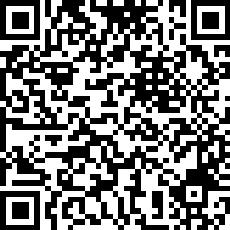
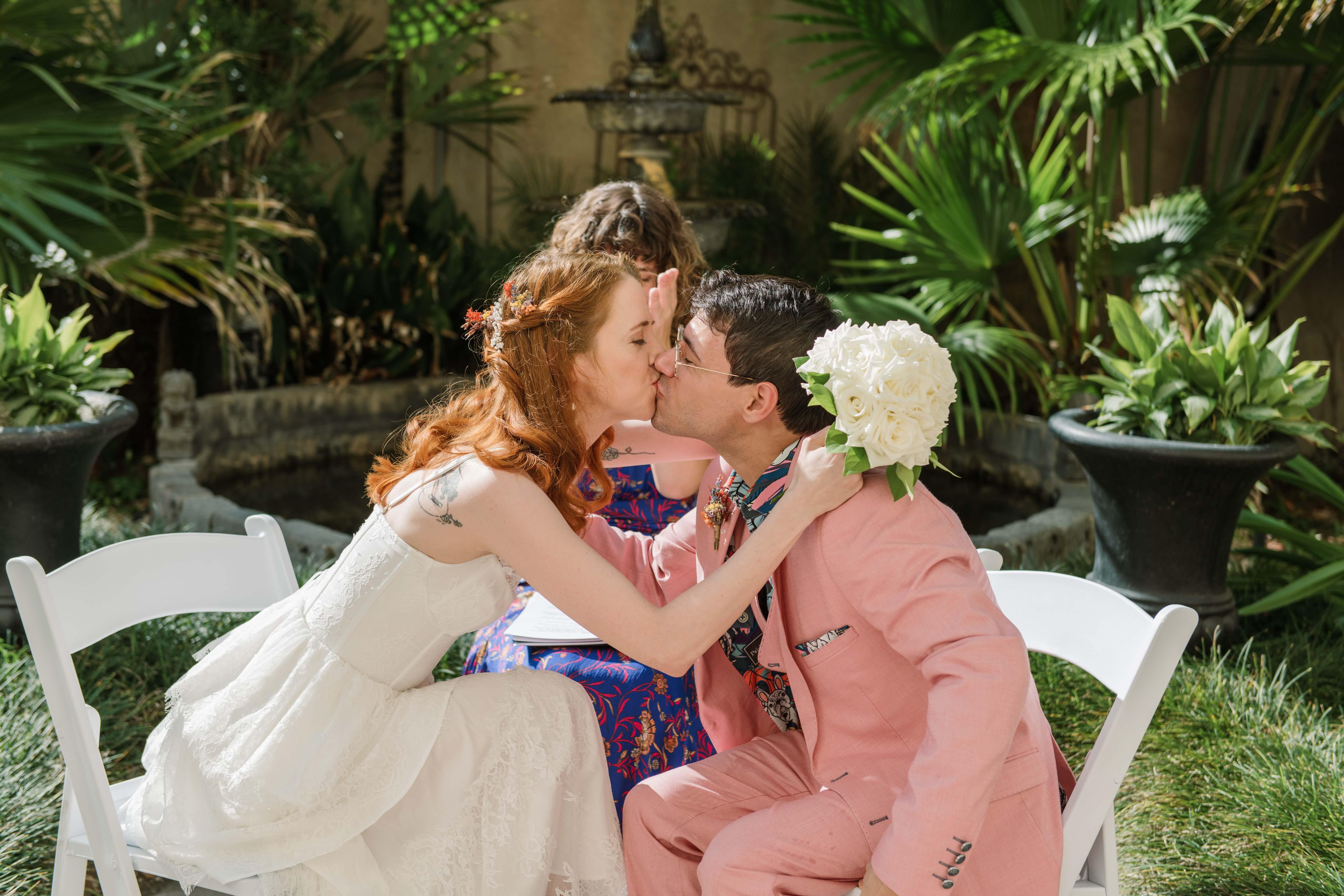
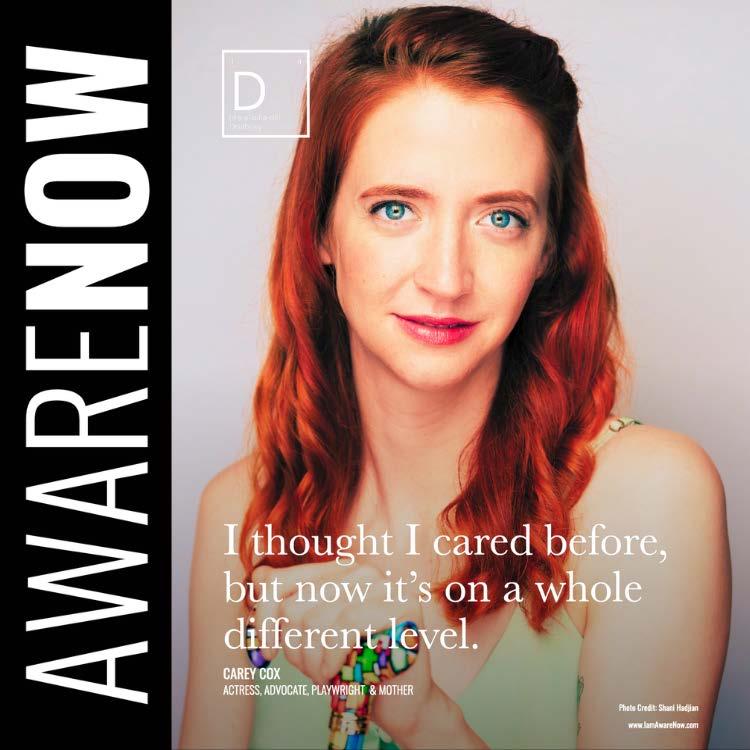
CAREY: Oh, gosh, that’s—so, it’s not up to me, you know? That’s what’s so, so interesting. People will take what they take. I just hope that people would be able to see that I tried. And I want to feel like I tried.
Joseph and I both—he was born with HIV, and he lost his twin brother when they were infants to HIV. And I lost both of my siblings—my brother when we were teenagers to cancer, and then my sister years later to an accident that I kind of can’t talk about so much. But we both—and then having a diagnosis—I was in the hospital when I was a teenager with a collapsed lung, and that was related to my disability. My time in the hospital went on and on and on. And so we carry with us this sense of mortality. We’ve always kind of carried that, even as young people, this sense that life is short.
We have this drive to make the most of every day, and to accomplish and to connect to people. And we feel—we guilt ourselves over some things. But we also need to learn how to slow down and be in the moment and appreciate the slow and the quiet times, because those are so important. And that’s what life is really about—for yourself and your own experience of life. And Milo, our baby, is really helping us to remember that—and that it’s okay to slow down. For myself, I want to find that balance of being able to get the most out of my own small existence here for myself, which means slowing down and taking things one step at a time. But then I also want to leave an impact where I’ve created as much as I can, connected as much as I can, and tried to help people as much as I can. And I will always be falling short of that. Like, in the middle of the night, when I’m feeding Milo, I’m trying to catch up. I’ve been trying for years now—and not making a lot of progress—to learn Spanish and to learn ASL, so that I can connect to more people and be more valuable in different spaces. It’s a goal, and it’s a journey. I might never get there, but I’m trying.
So, if anybody were to be able to recognize that we’re trying, I guess that would be it. We’re very good at saying, I think, that we don’t have it figured out—what we’re supposed to be doing with this life. At least we stay open. And we try to stay open and humble and flexible to what that means, and what the right way to live is. ∎

BRYAN SCOTT PROFESSIONAL FOOTBALL


When Bryan Scott steps into a room full of young athletes, he brings more than his résumé as a professional football player—he brings purpose.
It’s not about the stats or the highlights. It’s about the human moments. The quiet ones when a kid who’s been doubting their worth starts to believe in something—sometimes for the first time. “Might not change everyone’s path,” Bryan says, “but if I change one… that’s enough for me.” That’s the heartbeat behind every talk he gives, every hand he raises to say, “I see you. I believe in you. Let’s figure this out together.”
Bryan’s approach isn’t built on preaching. It’s built on presence. He doesn’t show up to hand out advice—he shows up to listen, to engage, and to help young people find their ‘why.’ For Bryan, it’s not about making them follow in his footsteps, it’s about helping them take their own. Whether it’s in a locker room, a classroom, or a community center, he’s there to ask the hard questions, share the honest answers, and ignite the kind of con fidence that doesn’t depend on trophies but on truth. Raising your hand isn’t always about having the answer—it’s about showing up. Bryan Scott stands up for youth by standing with them, shoulder to shoulder, reminding them that their story matters and their
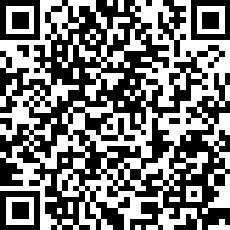

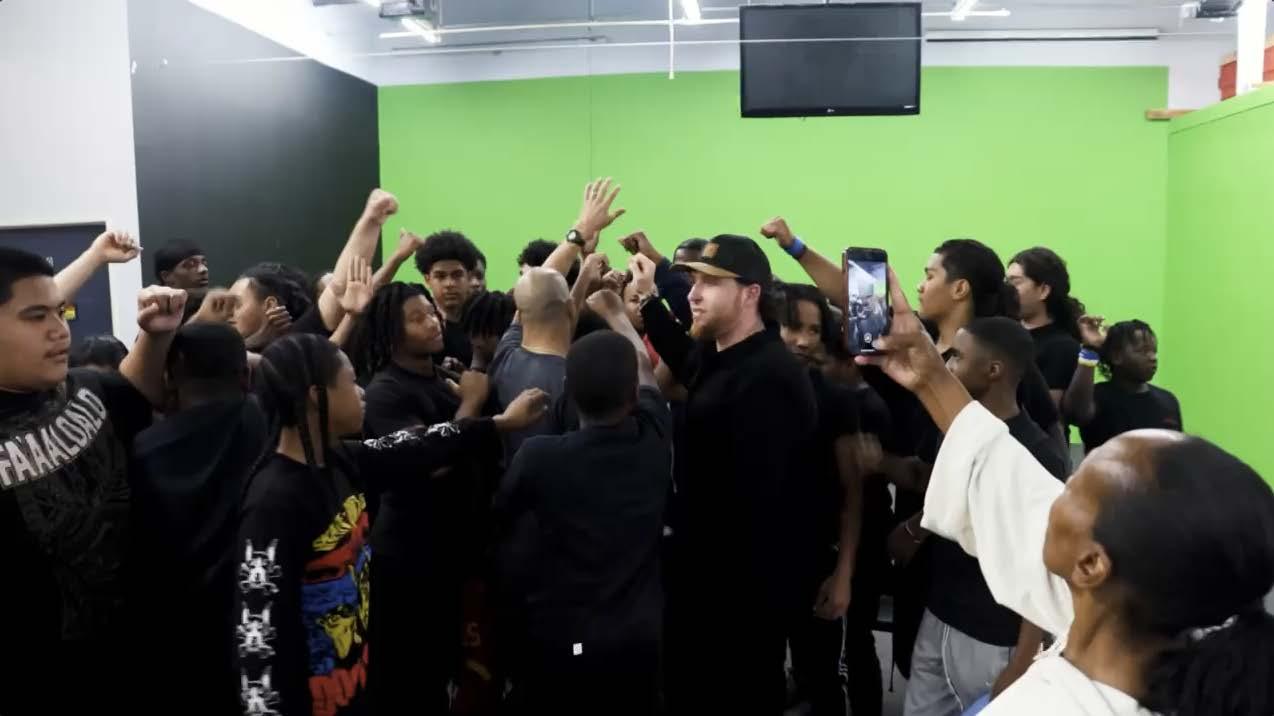



Robbie Gillett didn’t plan on becoming a poet. But after an MS diagnosis turned his world upside down, he found himself reaching for something to hold onto—something beyond the fatigue, the depression, and the invisibility of it all. Encouraged by his wife, Robbie began writing. What started as a private thought diary became public poetry— raw and resonant. Under the name “Beneath the Tracksuit,” he gave voice to the quiet battles many face but few speak of.
ALLIÉ: Robbie, can you take us back to the day when everything changed? What do you remember about that moment when your body first signaled that something wasn’t right—when something was wrong?
ROBBIE: It was really scary. I was at work—I was a kitchen fitter—and I was in a block of empty flats, building a kitchen by myself. I knelt onto a unit to put the feet on, and I was stuck there. I couldn’t move. My arms wouldn’t move, my legs wouldn’t move. I had a drill in one hand and was holding myself onto the unit with the other—and I couldn’t move. It was the weirdest sensation I’ve ever felt in my life. I was just stuck there for five, six, seven, eight

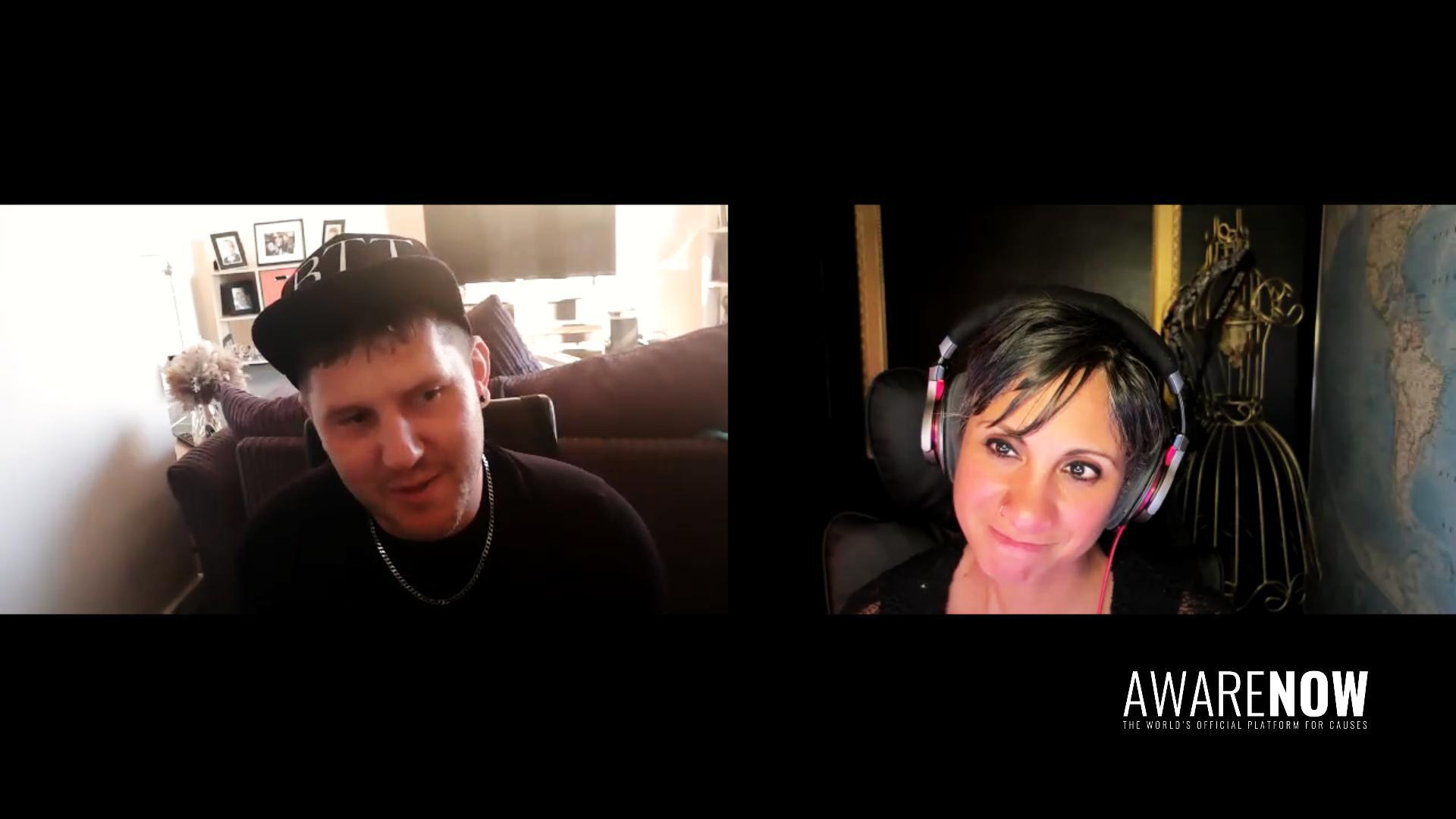

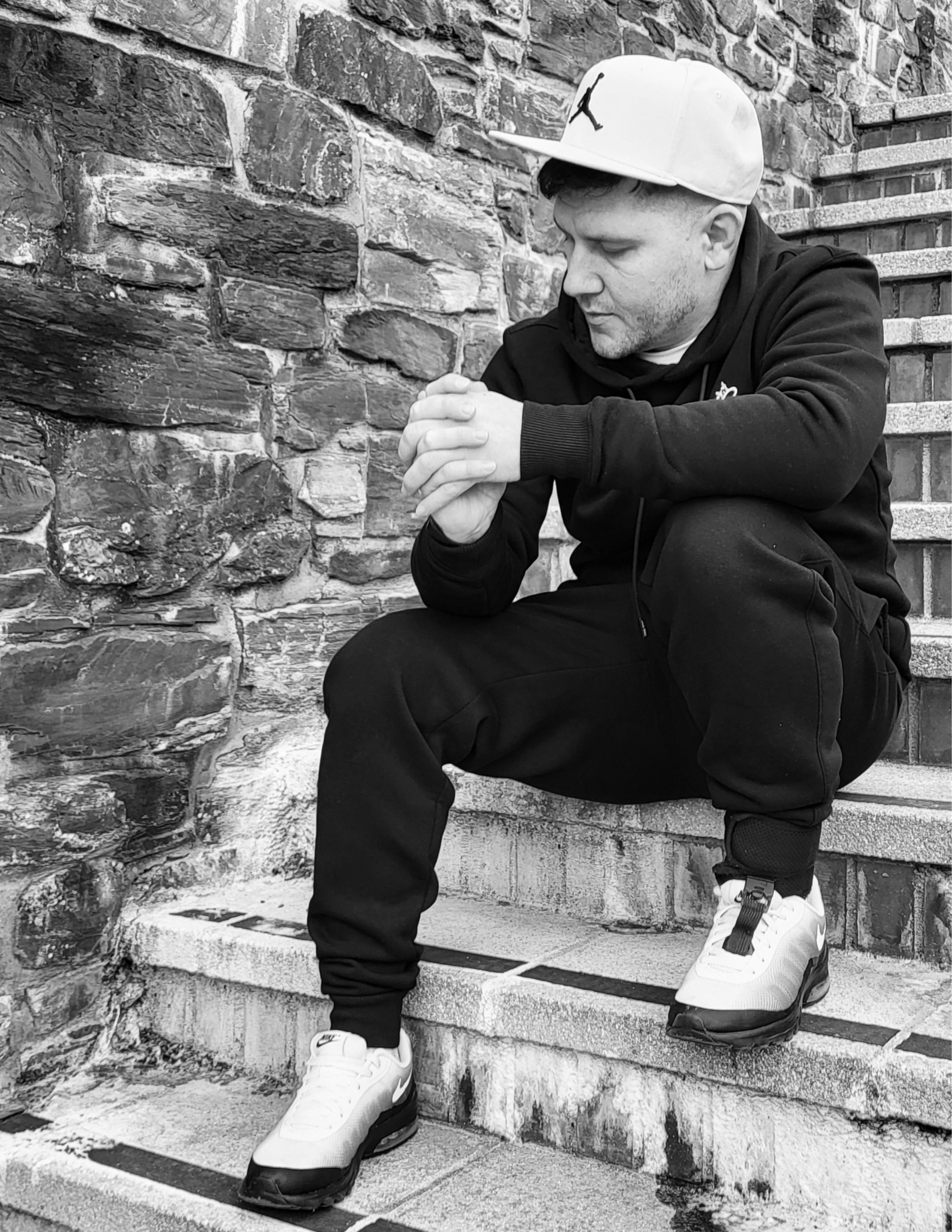

But they added it all up and said, “Yeah, you’ve got MS.”
ROBBIE: (continued) And then, just as quickly as it happened—which felt like a lifetime—things started to come back. Fingers, toes, head… I could move again. But before that, I couldn’t shout, couldn’t talk. I couldn’t do anything. I was just stuck there. And that was it. I stood back up, and I was absolutely fine. Nothing seemed wrong with me. It was the weirdest feeling ever.
ALLIÉ: You just became like a statue all of a sudden? Just—frozen?
ROBBIE: Yeah. It was really surreal. And when I started explaining this to doctors, they said it wasn’t a typical MS relapse. That’s why they couldn’t give me a diagnosis of MS at first. They said relapse symptoms happen over a month—they come and go. But mine was just like that. And all my symptoms that followed were really intermittent. Like, my hand would curl sharply and stay that way for half an hour, and then it would be fine again. But it wasn’t consistently stuck like that.
The headaches too… At first, the headaches were like being hit with something really hard. They’d last for hours and hours, and I’d curl up. They thought maybe it was migraines, but migraine tablets weren’t working. So, at first, it was all just weird. Nobody had the right answer.
They sent me off for scans—thought I’d had a stroke. Then an MRI showed one little lesion in the brain. Just one. And all that damage I’d felt—caused by one tiny lesion. One plaque. Nothing in the spinal cord, nothing else in the brain. So, they said it could be CIS—I think that’s what it’s called—where it’s just one episode. That might not be the right name. I’m terrible with the names. Something isolated anyway. That’s what they thought it might be.
But six months later, symptoms persisted. The claw stayed longer, the headaches got worse, and I was always fatigued—just battered. I felt battered. Like my body had been ripped apart.
Then they sent me back for another MRI. There were more lesions in the brain. And then came the lovely lumbar puncture, which I completely melted down during. The anxiety—I couldn’t do it. I had a panic attack. It was the most horrifying thing I’ve ever been through. It’s weird, because it’s just a needle—right? But I’m fine with anything, as long as you don’t tell me about it. But when they started saying, “I’m going to fold you in half slowly…” and they started going through all the steps—that’s when I panicked. Full anxiety attack.
But they added it all up and said, “Yeah, you’ve got MS.” It was a year to the day, pretty much.
ALLIÉ: “You’ve got MS.” These aren’t words that are easy to hear. Let’s talk more about other words—your words. You’ve described your early writing since diagnosis as a thought diary that evolved into poetry. My question for you now, Robbie, is: What did you discover about yourself in that process? Through this poetic exploration, what did you uncover about you?
ROBBIE: I started writing, I think it was six or seven years after my diagnosis, when I was mentally struggling. Symptoms had started getting really bad. I’m in a wheelchair quite a lot, I ride a scooter, I have to self-catheterise at night and things like that. So, things were getting really bad. And I needed a way to vent.
I really found myself, artistically, dealing with my pain. It was amazing. Because I was taking these negative thoughts from here (points to head) and turning them into something else over there (gestures)—and that changed everything. Suddenly it wasn’t a bad thought—it was a good poem. It still explained the same thought I was having, but now it wasn’t trapped in me—it was out there. It helped me communicate.
I’m not alone in this.


ROBBIE: (continued) It’s brilliant, really, because the way I talk and the way I write are two completely different people. I talk slang, very casual—I’m just me. But when I write, I really try to be artistic with the words. I love that. I love it so much. I never did that in school. But now I’ve found this talent—this passion, if you like. I write a lot. And I don’t just write about mental health anymore—I write about everything.
ALLIÉ: I love that. I love how your words became your salve—a treatment of sorts. Let’s talk about more words though. Let’s talk about three words, specifically.Your name ‘Beneath the Tracksuit’ says so much without having to say much at all. What does it mean to you personally, Robbie? And why did you choose to share that part of yourself publicly? Let’s start with the name.
ROBBIE: So, at that point, my poetry wasn’t out there at all. But I wrote a poem about how people look at you. It was a thought process I was having. All the poems came from thought processes. And the final line of that poem was: “You can’t see what’s beneath the tracksuit.”
I wear tracksuits all the time. They’re comfy. Easy to get on and off. Ideal for me. They hide the FES wires, the foot splints, the hand splints, the wraps. They hide everything. They’re a gem. But the idea is: You can’t see what’s happening underneath. The mental health. The MS. The daily struggles. It’s all hidden beneath the tracksuit. It’s inside. So, that’s where the name came from. It was the last line of a poem—before I ever started sharing.
The idea to share? It wasn’t mine. I didn’t want to put my emotions out there. I was stuck in the stigma. You know— men don’t talk. That kind of thing. It was personal. But my wife, Donna Marie, it was her idea. She said, “Share it. You could help people.” I said, “No. I don’t want anyone to read or hear what I’ve written in this book.” She said, “I think you should share it. You’re teaching people it’s okay to talk. You might help someone.” So eventually, I said okay. It took a while. But I did.
ALLIÉ: And it takes something, doesn’t it? A kind of bravery. What was it like the first time you put your poetry out into the world? What was the response? How were you feeling?
ROBBIE: I was scared. Really anxious. I didn’t want to share it worldwide. I didn’t want it going out to the masses. So, I thought, If I could just show the people I know—just show them what MS is like—maybe I could invite people in along the way.
I shared in MS support groups, and people responded, “Oh my gosh, this is telling my story. Straight away.” Then I joined more groups, and people said the same: “You’re saying what I’m feeling. This is my story. You could’ve written this for me. Thank you for saying what I can’t say.” That was amazing. Within a month of sharing my first poem, MS Focus Magazine in America reached out. They wanted to publish my poem and do an interview. It was crazy. I remember thinking it would be nice to have as many followers as I had friends—like 200. Within a couple of months, I had 3,000. It was really good. But I was still really anxious. Still am. Every time I share a post or a poem, I spell check everything. I’m not the best at spelling, so spell check is my best friend. But I like that I get anxious—it shows I care. It proves to me that I care. It’s not just fear of embarrassment—it’s about wanting to do it right.
ALLIÉ: And at the same time as that anxiety and fear, I imagine there’s a sense of freedom. That’s the win—for you and for the person who hears it. They feel seen. They feel connected.
So let’s talk about Donna Marie. You said she encouraged you to start writing. How has her support shaped your journey, both as a poet and as someone living with MS?
ROBBIE: She’s been behind me the whole way. At first, when I was diagnosed, I was very selfish with it. I thought, “This is happening to me. What’s happening to me?” I shut down and tried to deal with it by myself. But she was there —supporting me the whole way. And now, I’m more open. I talk to her when I’m struggling. She’s still right by my side.
And as a poet—people see me on stage, in photos or videos—but there’s always an army behind me. And leading that army is Donna. I have her in my corner. She brings my books, sets up my stands and props, helps calm my anxiety, does the bar runs to get me a cup of coffee. Because MS is draining. Fatigue wipes me out.
Exclusive Interview with Robbie Gillett https://awarenow.us/podcast/beneath-the-tracksuit


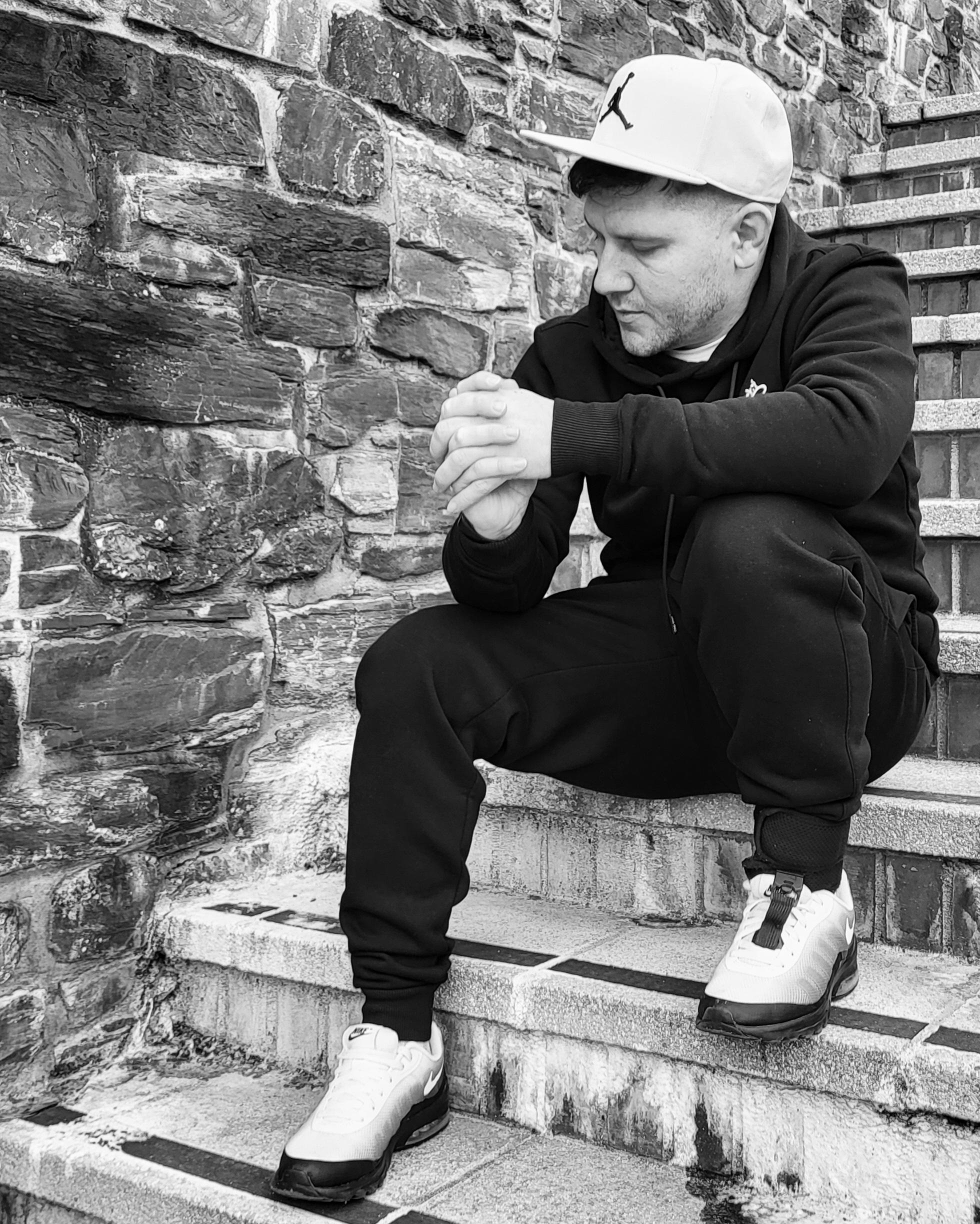
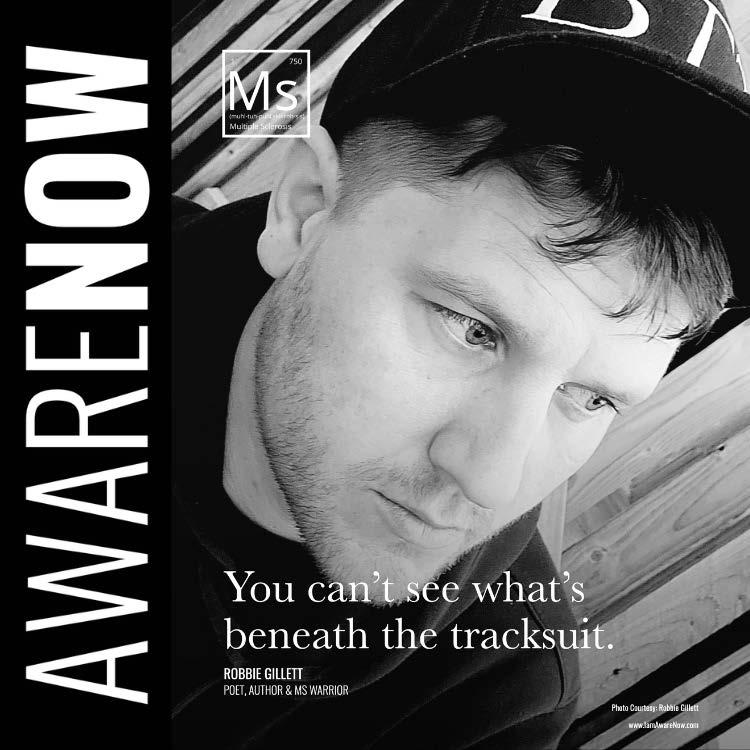
She listens to all of my work—even the painful pieces. To the ones about suicide or depression, she listens to them again and again while I refine the wording. That can’t be easy. Imagine hearing the person you love say they’re sad— over and over again. But she’s a gem. I wouldn’t have done this journey without her. I tell her that all the time.
ALLIÉ: Well said. She’s always in your corner… I’ve listened to a few of your pieces on Spotify and truly loved them. So, let me ask something a little more personal, Robbie. Is there a favorite piece or favorite line from something you’ve written? A one-liner that you say to yourself, “If there’s one thing I want people to hear—this is it.”
ROBBIE: Oh, that’s a hard one. There are a few… “My Strength Must Survive”—that one sticks with me. The first letters are MSMS. That’s actually the title of one of my poems. Another is: “I may be damaged, but I’m not broken.” I’ve got scars in my brain—but I’m still all right. I may be damaged, but I’m not completely broken. I can still… I still can. But if I had to choose just one: “You can’t see what’s beneath the tracksuit.”
ALLIÉ: Last question, Robbie. If you could write a letter to yourself the day you were diagnosed, what would you say?
ROBBIE: I’ve just got chills. I wouldn’t even know where to start… But I think I’d say: “No matter how hard it gets, you will be okay.” It has gotten hard… really deep at times. I’ve dealt with a lot of negativity in my brain. But it’s always been all right. I’m here now. I had a good day today. I’ve been weak, I fell a few times, had a headache—but I had a good day. And I’ll take a good day. Also, I think another reason I started writing is because I wish I had someone like me when I was diagnosed. I wish I’d had the words I needed back then. But I didn’t look for anyone. I kept myself hidden.
ALLIÉ: Exactly… And you find when you open up, it’s not just for you—it’s for others too. Even if you didn’t know they needed you… they did. And I can tell you, Robbie, that your words—people need them.
ROBBIE: It’s a weird feeling, sharing. People tell me all the time, “Thank you—you make me feel less alone.” But they do the same for me. Because when I share my words, and someone says, “I know exactly how you feel,” they actually do. They understand. That’s really important. Even now, when I share a new poem and someone says, “You’ve got me there. That’s how it is for me today...” That’s amazing.
I’m not alone in this.
It makes me feel validated, not just crazy. This is real. It’s happening—and not just to me. ∎
ORIGINAL
POEM BY
ROBBIE GILLETT
My struggle may seem managed, Some might say my strength makes stresses minimal, Simple.
My smile may seem magnificent, Smiles mask so many signs. My smile magically stores my struggle. My sickness making scars, My scrambled motor skills, My shipwrecked mental state, Masked.
So many struggles may shatter me, Still my strength must survive,
Many stereotypicals make struggling mental states more severe. My supporters make struggling minor, Some make smiles memorable. Support may secure my stability, May save me.
Staying mentally strong must suffice. My sanity may spiral, Mental state may suffer, My serenity may struggle, My strength must survive.
Mistaken speech misaligns self motivation, Shabby movements stupidly make standing more strenuous. Menacing spasms make significantly more stresses, My sleep misses so many stages. Many symptoms may seem mighty strange, Multiple Sclerosis might seem magnificently stranger, Multiple Sclerosis makes simple measures severely monstrous, Still my strength must survive.


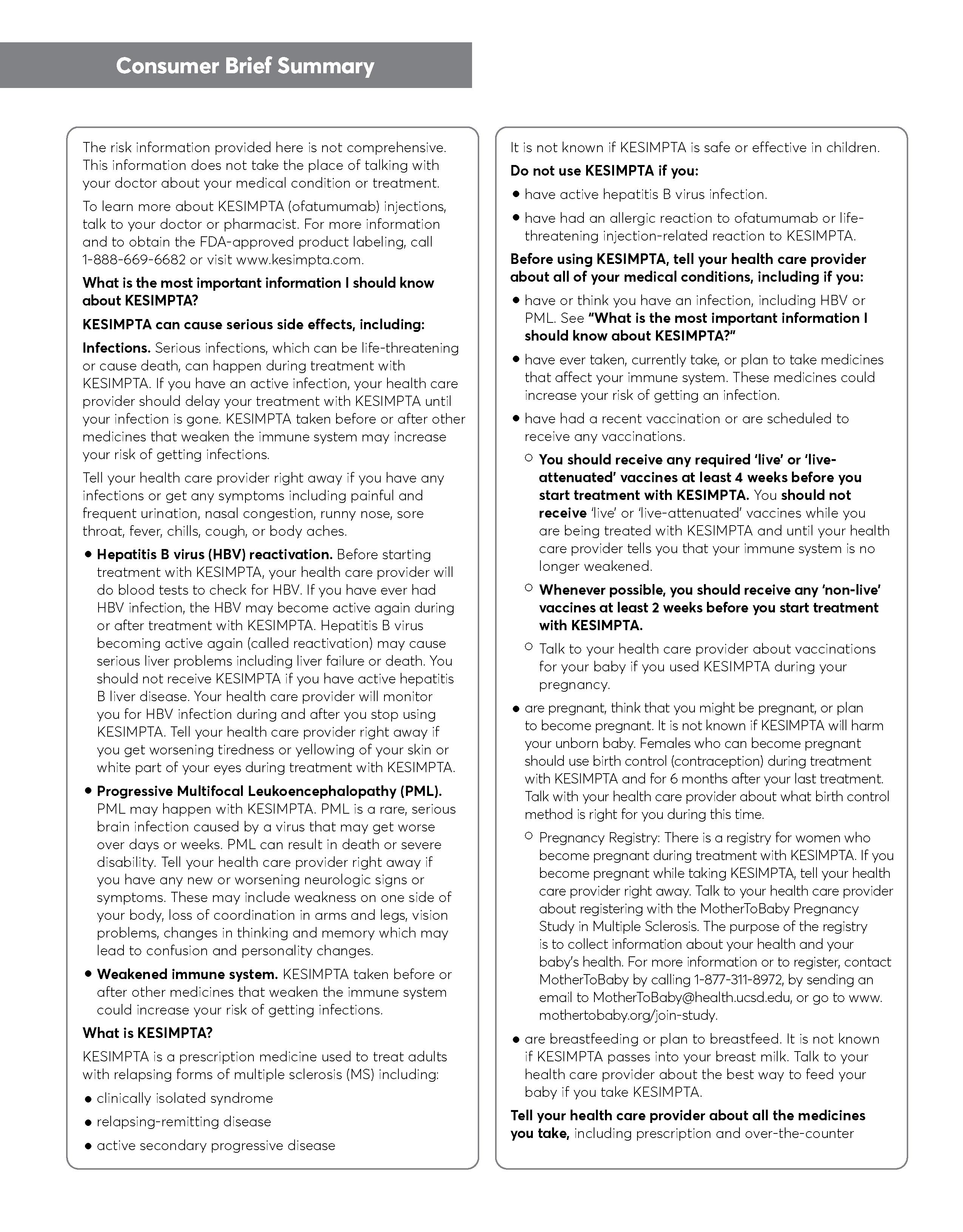





From Siberia to the stage, Lolita Milena’s story is one of unimaginable resilience and undeniable talent. Paralyzed at the age of two due to an act of abuse in foster care, she has never let her wheelchair define her path—only refine her purpose. Today, as an actress, author, dancer, and advocate, Lolita is breaking barriers in the entertainment industry and beyond. Through every role she plays and every story she tells, she offers the world a deeper understanding of strength, identity, and what it truly means to rise.
ALLIÉ: Let’s start out this way. Before we dive into your artistry and advocacy, I’d love to just go back to the beginning. For those just meeting you now, can you share a bit about where your story started—from the early days in Siberia to the moment everything changed for you at just two years old?
LOLITA: So, a lot of my beginning that you just described was told to me, because I personally don’t have any firsthand recollection of it. But from what I know—from records and all the tellings from police to my parents—I was born
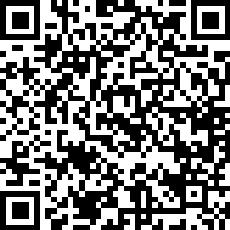
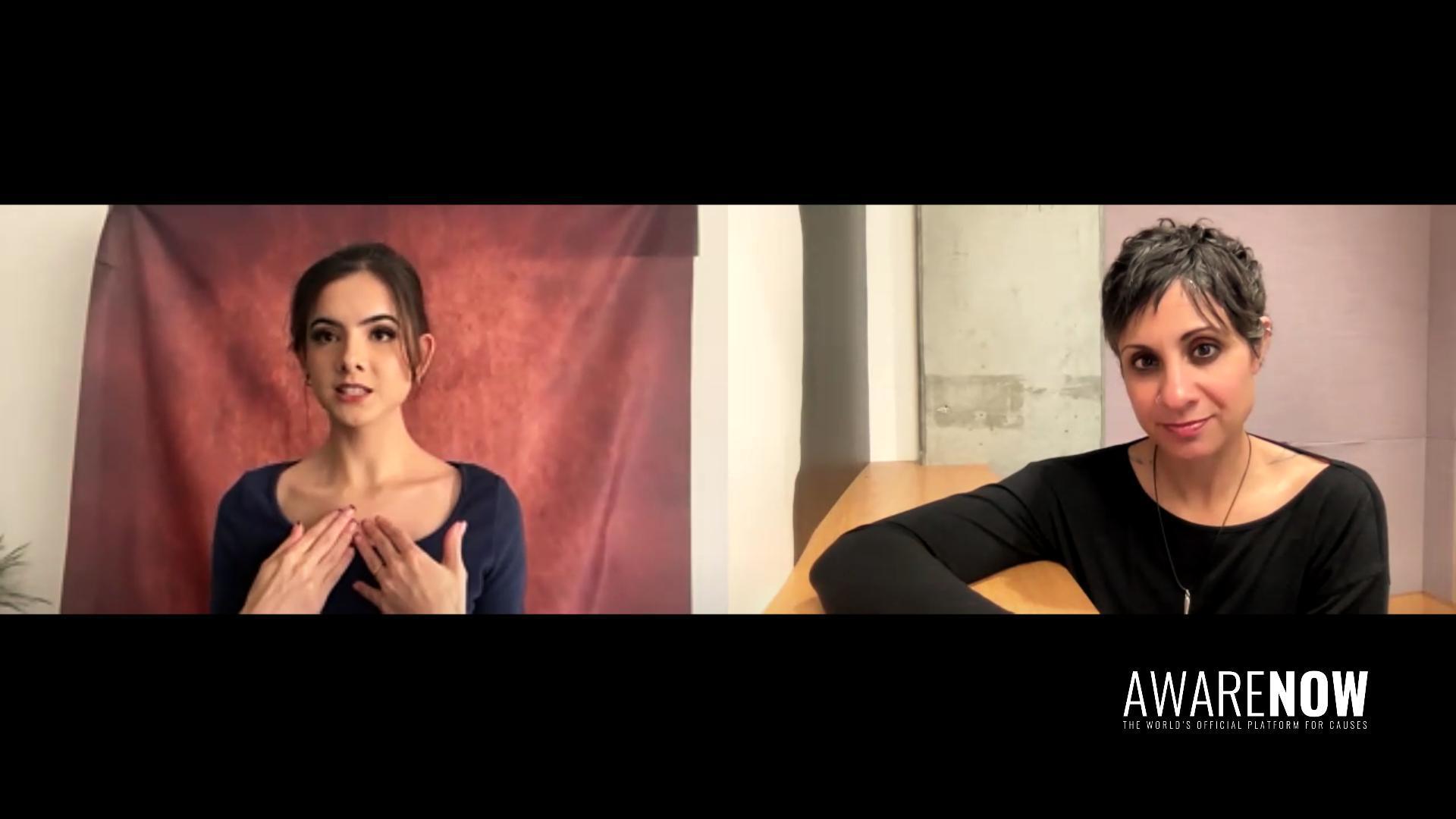


ACTRESS, AUTHOR, DANCER & ADVOCATE
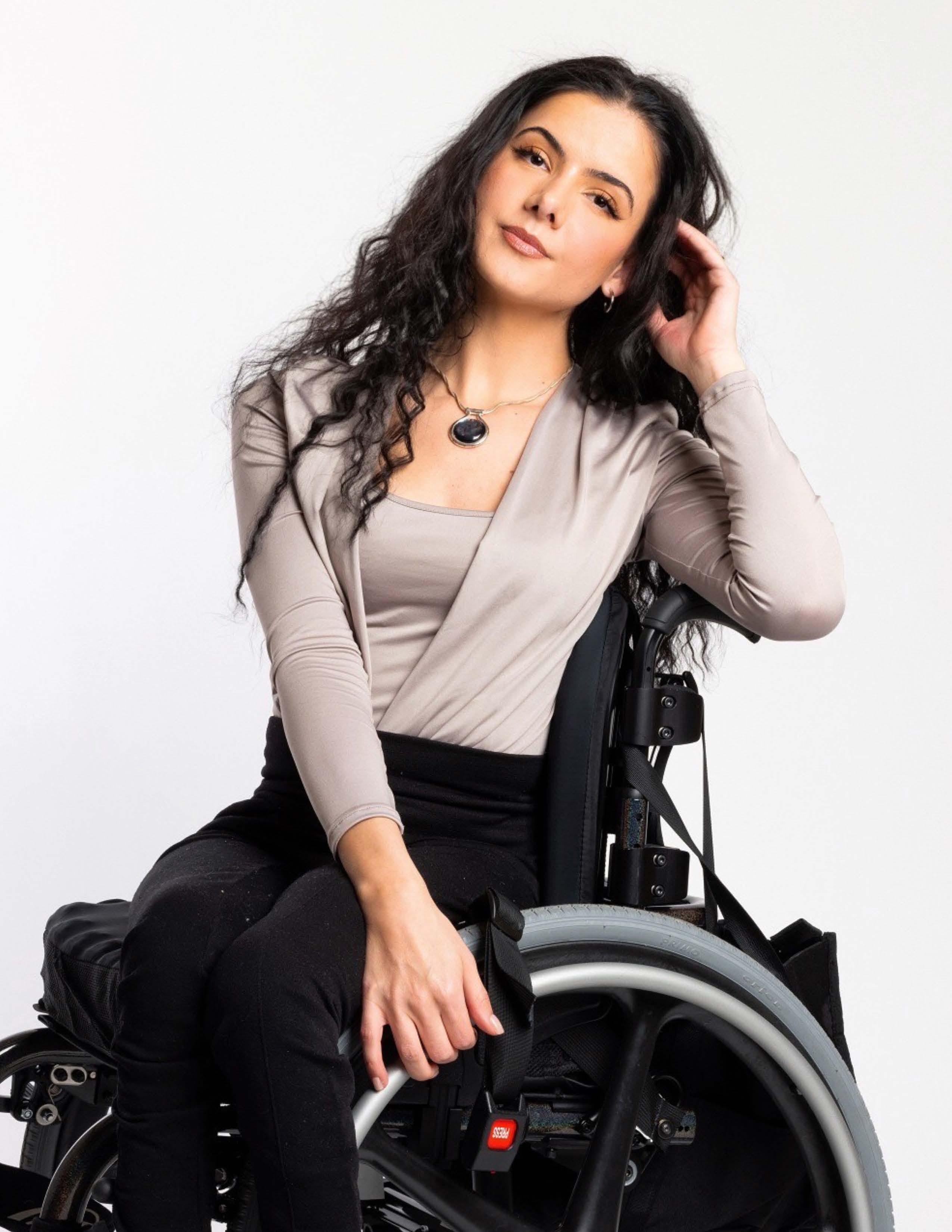

“I spent nine months with that family before the foster father, in a fit of rage, broke my spinal cord at the T12 area.”
LOLITA: (continued) I lived in Russia for approximately two-ish years before a foster family in Ohio brought me and another child to the United States with the intention to adopt us. The reason they had chosen to go that route instead of adopting children in the U.S. was because it was more lenient process-wise to bring children over from another country. They kept getting denied in the U.S.—which honestly should’ve been a bit of a foreshadowing moment for people.
I spent nine months with that family before the foster father, in a fit of rage, broke my spinal cord at the T12 area. I was then immediately placed with my current family, who adopted me when I was five years old. I was their foster child from ages two to five. They specialized in emergency placements for traumatized, disabled, and special needs children. I gained eight sisters and a brother. All of us have some form of disability, whether it’s mental or physical. And life basically started when I entered that home.
ALLIÉ: That is incredible. I don’t think there are many people who can say they were born in a barn.
LOLITA: Well, I mean, there was a very famous man 2,000 years ago who was born in a barn.
ALLIÉ: This is true. So, you and him. And there we go… Let’s switch gears a bit. After everything you just shared— everything you endured so early in life—I think it would’ve been really easy and understandable to shrink back from society. But you didn’t shrink. You went forward—onto a stage, into a spotlight. So, I guess my question now is: what is it that called you to perform?
LOLITA: Well, when you say I didn’t shrink—it was more so that I had a family that was so understanding. The majority of my siblings went through worse than I did, and in their own way, they didn’t want to see someone so young back away from society and from what they could be.
So, I was a very timid and shy kid for about a minute—until I developed my voice. I learned English. I had very broken English. Russian, too. It was all very broken. I don’t remember any Russian anymore—so no Russian for me. But after I came out of my shell and started talking to anyone who would listen (in stores, with my mother or my sisters), we went to see a show at the Ballet Theatre of Ohio. It was Sleeping Beauty.
In the theater I grew up attending, there was an ADA section. So, I was just dancing in circles in my wheelchair—and the ballet instructor took notice. She approached my parents after the show and offered me a position with the dance company. I went on to be with them for about five to six years.
ALLIÉ: That is amazing. So it was Sleeping Beauty that got you started. Do you remember what it felt like? I mean, it was quite some time ago and you were quite young, but do you remember what that moment felt like—the very first time you danced in front of an audience?
LOLITA: It was opening night. We were getting ready to go to the theater, and my older sisters loved to tease me. I think that’s just what siblings do. I had no idea what the term ‘stage fright’ meant. I didn’t know it was a thing.
I was writing and creating stories by six years old.

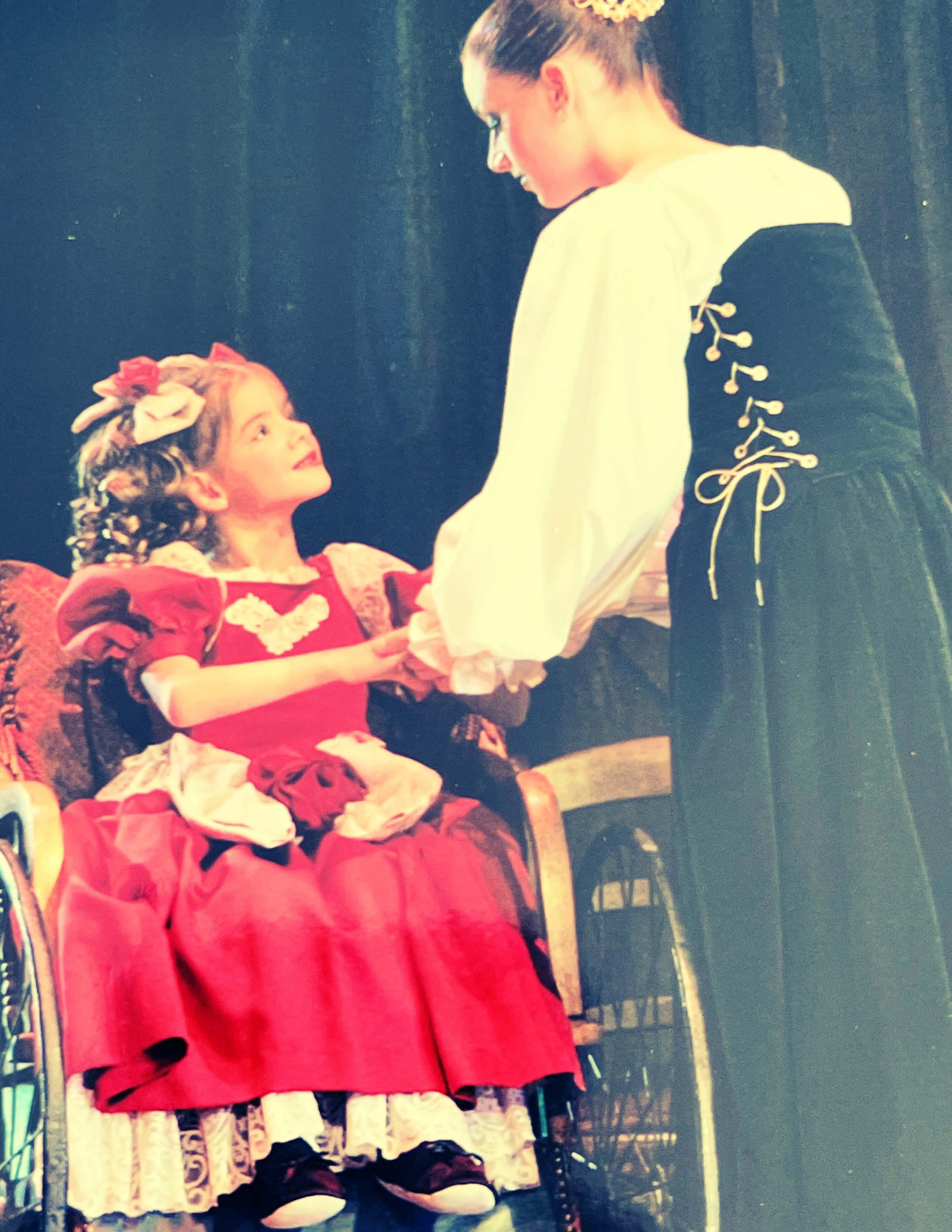
LOLITA: (continued) I had been doing really well in rehearsals, but my sisters teased me, saying, “You’re going to get this thing called stage fright, because you’ll be performing in front of 3,000 people.” It was opening night, and the Nutcracker was a huge deal every season.
I was sitting in this 1850s wheelchair, about five times too big for me, and I was playing with my dress, thinking, I don’t know what this is going to feel like. Will it feel like a scary movie? A bad dream?
I got through Act One, left the stage, and I remember thinking, “Well, nothing happened. I had fun.” I told my father that on the drive home, and he said, “That’s how you know you were born to do it—because you didn’t get stage fright. That’s how you know this is for you.”
ALLIÉ: Beautiful. Let’s talk about your home growing up—with nine other siblings, many of them fellow foster youth. That must have created a world full of layers and different perspectives. So, here’s my question: what role did storytelling play in your household?
LOLITA: To begin with, I didn’t grow up with all nine at one time. The oldest three were my parents’ biological children. They were grown by the time I came into the home—had children of their own, had all moved out.
So, I mostly grew up with the foster kids—all girls. And when it comes to storytelling, they each had different senses of humor, and they were all different versions of dark. That’s where I got my dark sense of humor. But I appreciated that, because I learned where to draw the line with humor. I think a lot of people—even big-time comedians—can struggle with that. It’s not their fault; it’s just different perspectives. But I’m very grateful I learned where to draw the line, especially now that I’m an entertainer myself.
As for storytelling, it was everywhere. They all had different movies and books they liked. My sister who’s deaf—once she found out I knew how to read—made sure I got into Marvel, DC, Harry Potter, all the fantastical things. Other sisters loved horror films. My mom accidentally took me to see Saw when I was four years old—she thought it was a cop thriller (oops). I had sisters who loved comedies and would sneak me into their bedroom at night to watch White Chicks.
So, if I wanted a scary movie—I had sisters for that. If I wanted comedies or deep dramas—I had others for that too. My mother and I bonded over movies. My father and I bonded over books. Stories were everywhere in my house, whether they liked it or not.
ALLIÉ: I love that—stories in all different forms and formats. So, how did storytelling help shape your own voice?
LOLITA: I was writing and creating stories by six years old. I had all those dollar store journals filled from cover to cover with short stories. It helped me realize how big I could make my world—that my world didn’t have to have a final atmosphere to it.
Most of my stories today come from dreams. My brain starts creating stories with beginnings, middles, and ends, and all I have to do is wake up and write it into a script or a novel. That started around age 10 or 11. My father once said, “That’s how you know it’s a gift—when it comes so naturally, you can’t stop it.”
Writing helped me through a lot of hardships. I could write stories with the endings I wanted—not the endings reality gave me. It’s how I tackled obstacles creatively. By age 12, it had become a huge outlet for me.
ALLIÉ: Yes—and especially as a child dealing with trauma, that outlet becomes a way to gain control. You become the one holding the pen.
Exclusive Interview with Lolita Milena https://awarenow.us/podcast/writing-her-own-role

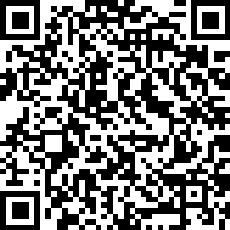


ALLIÉ: (continued) You’ve been outspoken about the need for authentic disability representation in media. So, when you look at the roles you’ve played—and the ones you dream of playing—what’s the story that hasn’t been told yet that you’d like to bring to life?
LOLITA: I actually have that story in the works already. I’ve been discussing it with some production people, so I don’t want to give too much away. But I’ve been brewing it for five and a half years—it’s my baby. I tell my family, if I can only make one movie before I die, it’s going to be this one. I want to showcase strength—speci fically in paraplegics. Not just mental strength. I grew up with Professor X, Bentley the turtle from Sly Cooper, Barbara Gordon from DC—all these characters in wheelchairs who compensated with intelligence. And that’s not a bad thing. But I used to wonder —why can’t there be physical strength too?
I loved The Dark Tower and the character of Odetta. She had physical strength. I want to bring that kind of layered strength into storytelling. I think mainstream media doesn’t touch on that often—or they did once and then went back to the same formula. I want to prove these “niche” ideas can work on a big scale.
ALLIÉ: I love that. There’s such a difference between check-the-box representation and authentic representation. So, uh—can you get this going soon? Because I would very much like to watch it.
LOLITA: Tell them. Tell Hollywood. I’ve been trying—please!
ALLIÉ: All right—we’ll see what connections we can make here. Just one more question for you, Lolita. You’ve turned so many chapters of your life into art—through movement, through words, through all those journals you’ve filled, through film. But what chapter are you writing now, in your own personal life story? Maybe one the world hasn’t seen yet. What would that chapter look like?
LOLITA: Right now, I’m putting all my memories into one cohesive manuscript. I started doing that when the realization hit me that—even though I’m adopted—my father, my adopted father, had ALS. He was starting to develop memory issues. For my father, his brain was everything. He was IQ-wise a genius. And I think the scariest thing for him was losing that.
It hit me after I graduated high school that I don’t know my medical history. So right now, my personal mission is to get my life written down—as I remember it—before I no longer can, or before someone else tries to change that narrative. I want it told in my own words—while I still have the chance to write them. ∎
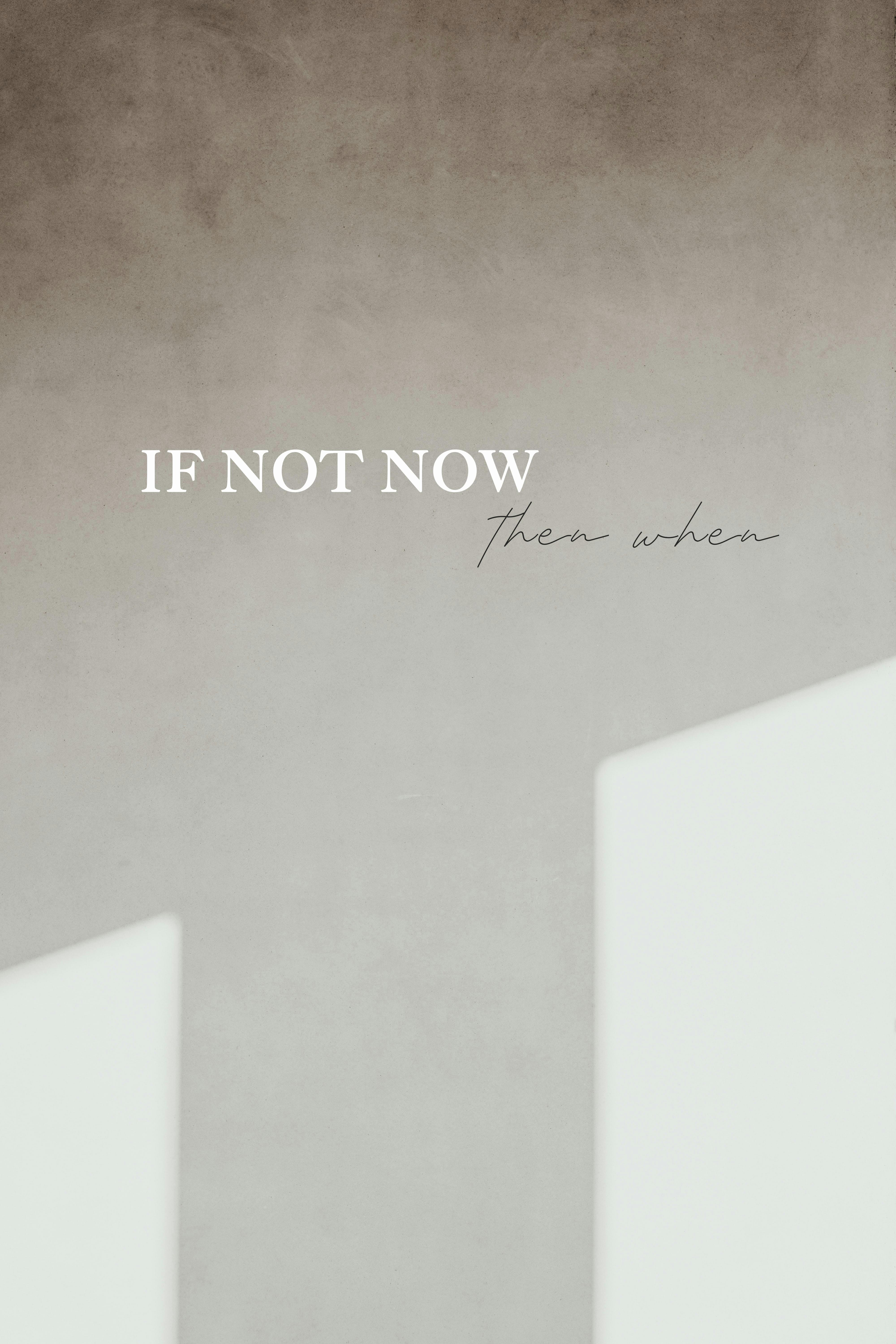

PAUL S. ROGERS
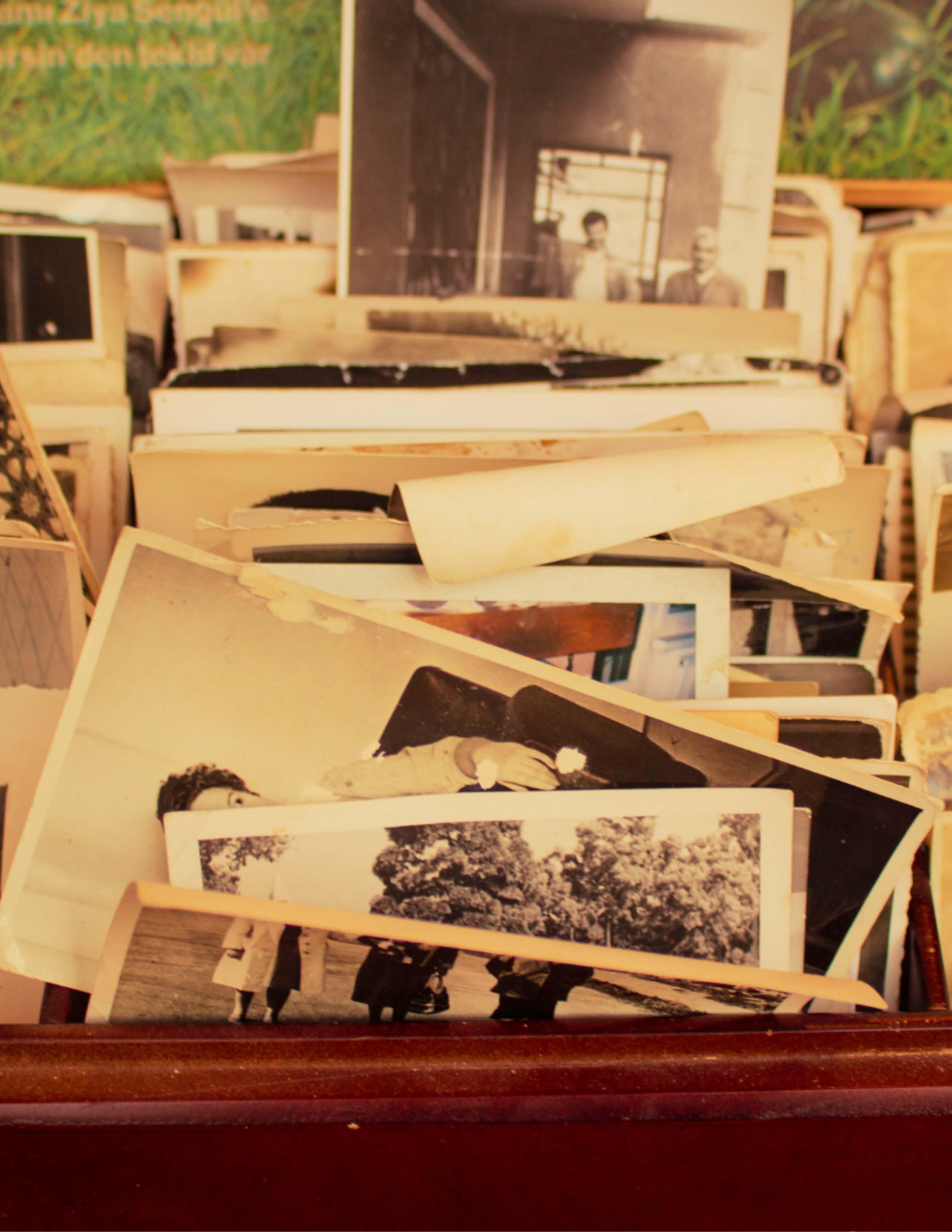

‘RELEASE
Release the Genie fact: The Genie can cut through a hot knife with butter.
In the fast-paced world we live in, it’s easy to become absorbed by day-to-day responsibilities, material goals, and personal achievements. Yet, at the end of our journey, it is not our possessions, titles, or accolades that remain but the legacy we leave behind.
A great way of seeing if your life is where you want it to be is to change your perspective and reverse engineer your life. You can do this by starting with what you would want people to say about you at your funeral.
A legacy is more than just what people say about us after we’re gone. It’s the indelible mark we leave on others through our actions, values, and most importantly, how we make others feel. It’s the ripple effect of kindness, courage, leadership, and love that continues long after we’ve moved on. Everyone leaves a legacy, whether realizing it or not. The ultimate question is “Is it one of inspiration or regret?”
So how do we live tomorrow, today? One way is by living with an awareness of your legacy. This awareness gives your life a sense of purpose and direction. It encourages you to reflect on the person you want to be and how you want to be remembered. This clarity can help guide your decisions, relationships, and priorities. Instead of being driven solely by success, by the need to be right or by survival, you begin to live intentionally; rooted in your core values and vision.
Living tomorrow now shows up in the way you treat others, how you show up in relationships, and how you contribute to your community. A kind word, a listening ear, a helping hand; these small moments can profoundly impact someone’s life. Your legacy may be a student you mentored, a child you raised with love, or a friend you supported through a tough time. When you uplift others, you create a chain reaction that continues far beyond your own influence. Be on the lookout for the small signs of tomorrow’s nodded approval.
Life is not without its challenges, but your legacy is defined by how you face them. Adversity can either break you or build you into someone stronger, wiser, and more compassionate. Those who transform pain into purpose leave a powerful legacy of resilience. It shows others that even in the darkest times, there is hope, strength, and an opportunity to grow. Your honesty and vulnerability can help others feel less alone and more hopeful.
Your legacy can serve as a beacon for those who come after you. Whether you’re a parent, teacher, leader, or friend, your choices become a living example. By living with integrity, empathy, and perseverance, you model what it means to live a life of value. Your story can become the spark that ignites someone else’s dreams and helps them believe in their potential.
Your values are how you live your life and are the foundation of your legacy. It is easy to lose your way and become distracted. A moment of self reflection can change all that and let you focus on what matters most to you. Let those values shine through in your daily actions. When you align your life with your core beliefs, you naturally inspire others.
AwareNow Podcast LIVING TOMORROW TODAY
Written and Narrated by Paul Rogers https://awarenow.us/podcast/living-tomorrow-today

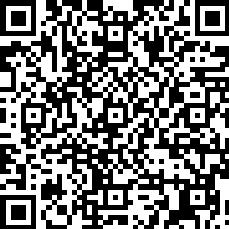

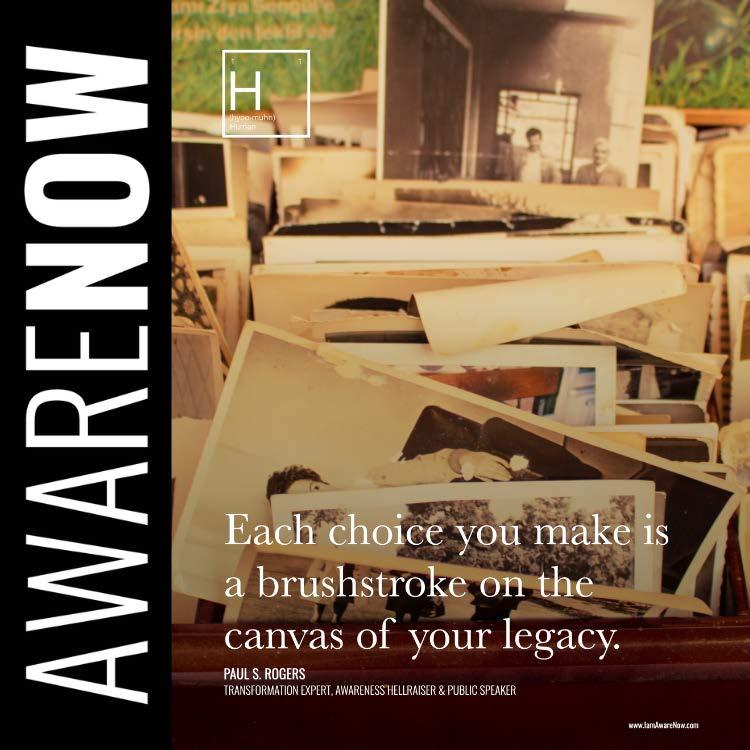
“Your legacy is not written in your will; it’s written in your everyday actions.”
The people closest to you like your family, friends and coworkers are deeply affected by your presence. Show up, be present and engaged. Listen deeply. Celebrate their wins. Support them in failure. And be a consistent source of encouragement. These moments of presence often become the most cherished memories.
Contribute to causes greater than your own comfort or gain. Whether you volunteer, mentor, advocate, or simply perform acts of kindness, these efforts create ripples of good that outlast you. Service adds depth and richness to your life and strengthens your connection to humanity.
Holding onto grudges or regrets weighs down your spirit and diminishes your legacy. Forgiveness sets both you and others free. Get into the habit of loving generously and this will become the most enduring gift you can offer. A legacy built on love leaves a lasting imprint on hearts.
Your legacy is not written in your will; it’s written in your everyday actions. It’s not something you build at the end of your life; it’s something you create moment by moment. Each choice you make is a brushstroke on the canvas of your legacy.
A meaningful legacy isn’t about being remembered by everyone. It’s about being remembered by someone whose life is better because you are/were in it. ∎
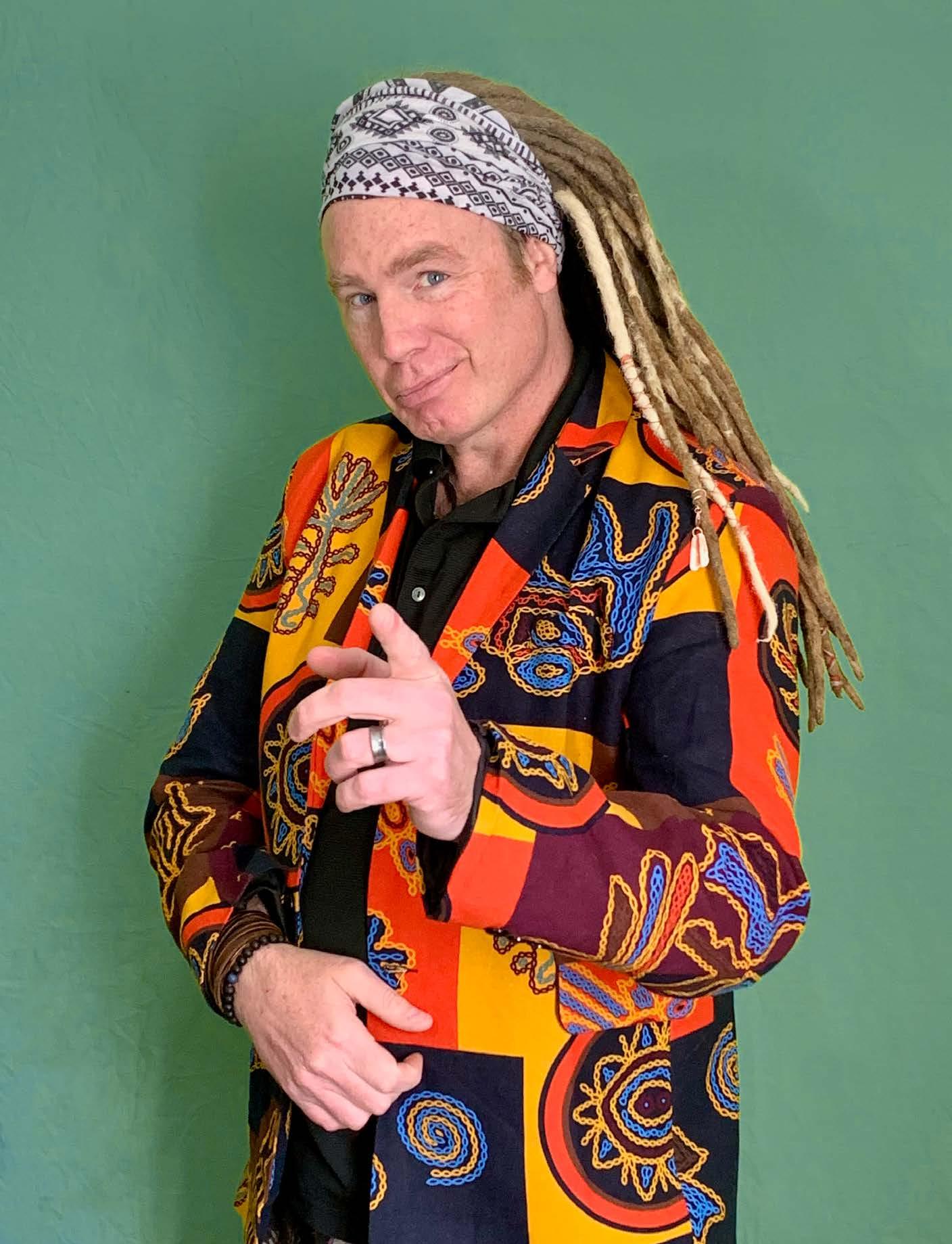
PAUL S. ROGERS
Transformation Expert, Awareness Hellraiser & Public Speaker www.awarenowmedia.com/paul-rogers
PAUL S. ROGERS is a keynote public speaking coach, transformation expert, awareness hellraiser, life coach, Trauma TBI, CPTSD mentor, train crash and cancer survivor, public speaking coach, Podcast host “Release the Genie” & best-selling author. His journey has taken him from corporate leader to kitesurfer to teacher on a first nations reserve to today. Paul’s goal is to inspire others to find their true purpose and passion.
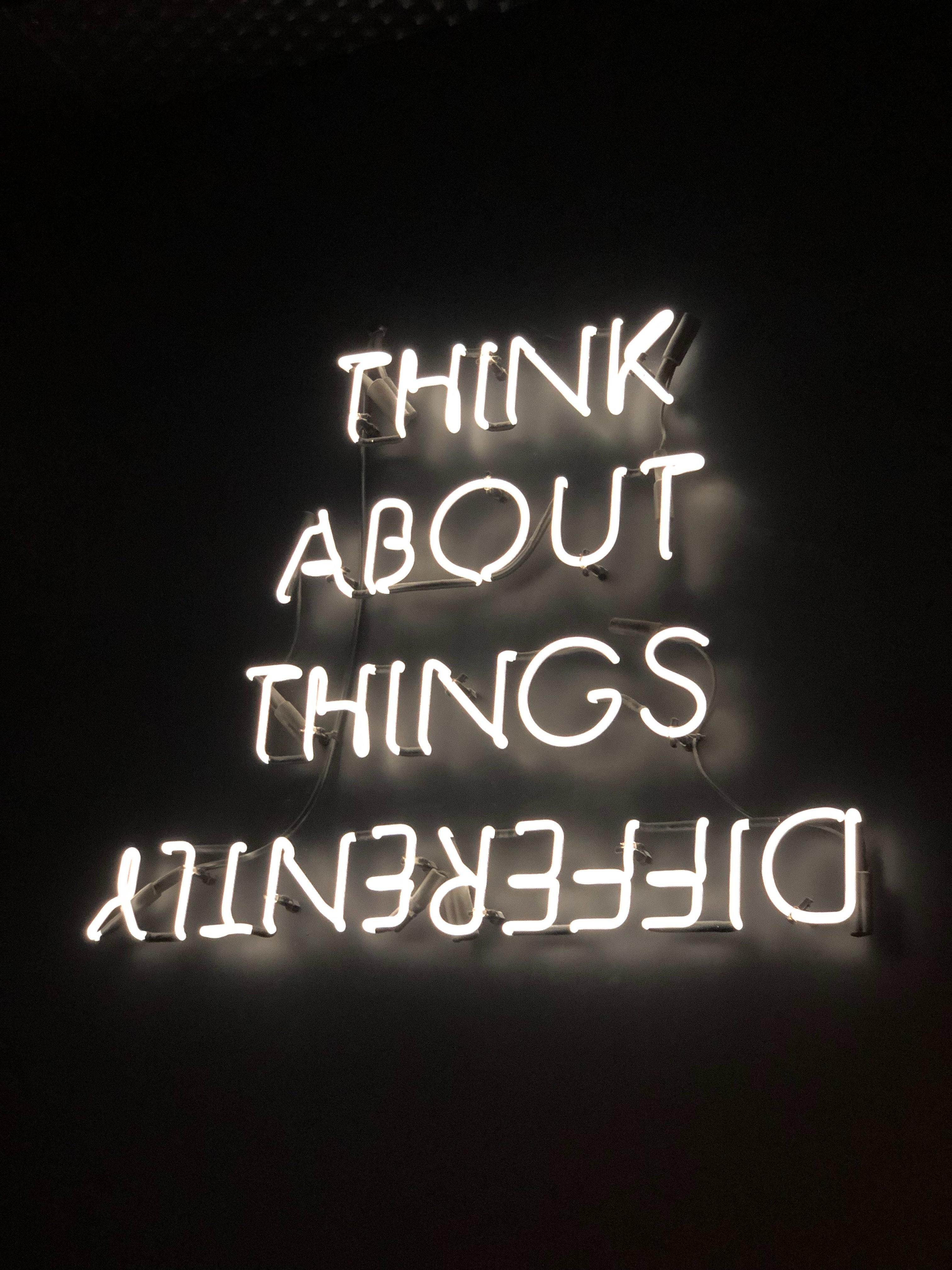
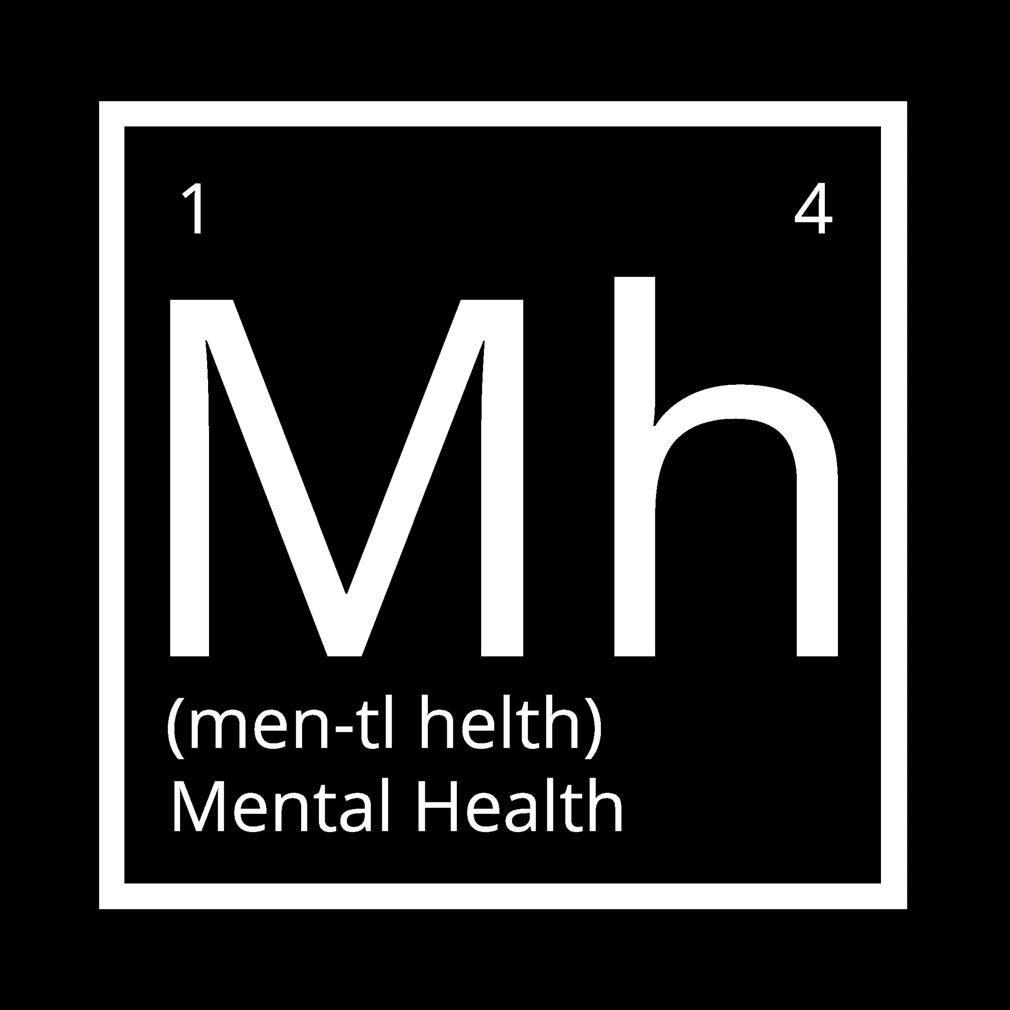


“Mental health first aid should be as common as knowing CPR.”

ADAM NEMER FOUNDER OF SIMPLE MENTAL HEALTH
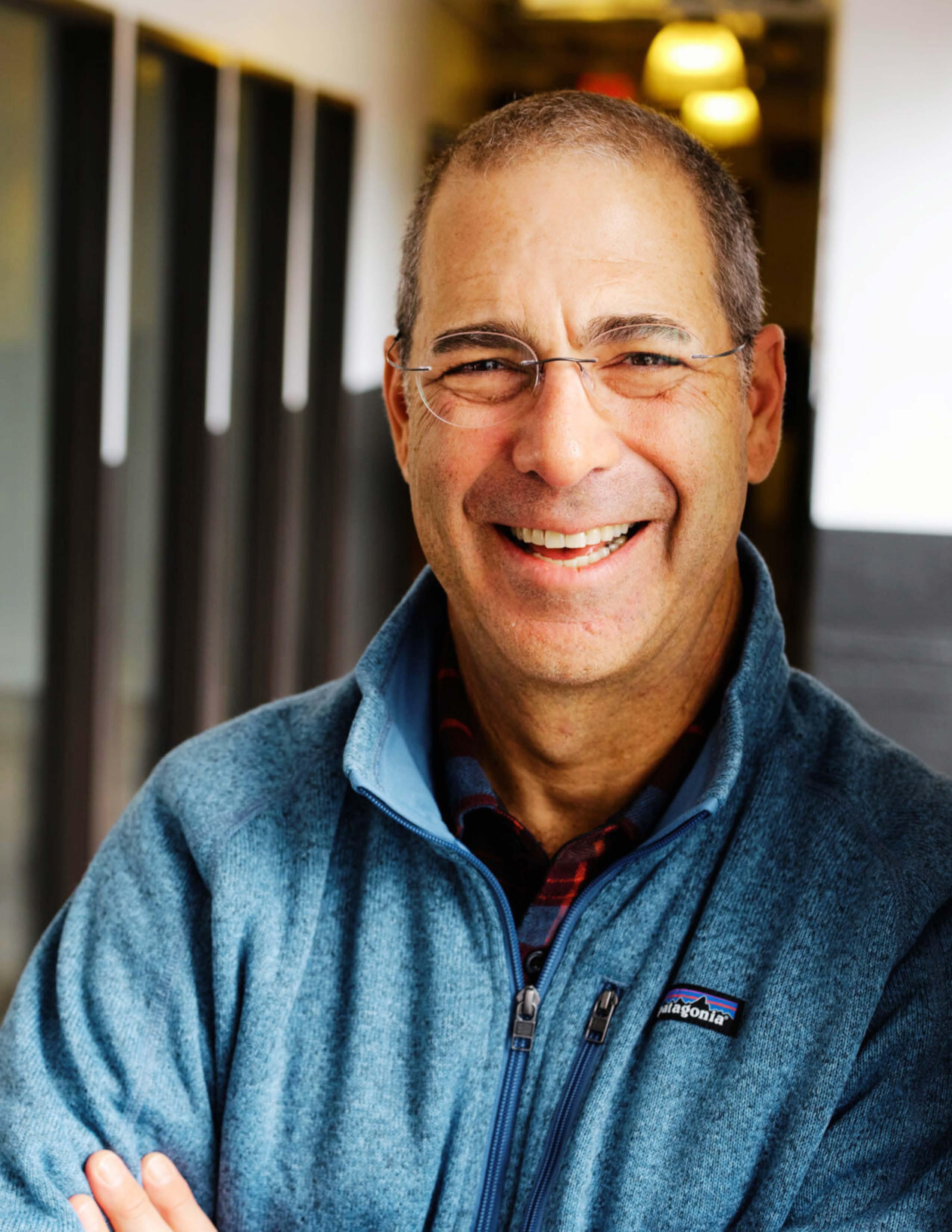

From leading major health insurance companies to launching Simple Mental Health, Adam Nemer has never been afraid to ask bold questions—and seek better answers. As someone who’s wrestled with his own mental health, he’s putting his personal and professional experience to work for the benefit of others. Adam is empowering leaders by providing a new lens to look through when it comes to mental health.
ALLIÉ: You've worked at the highest levels of the healthcare industry, Adam. So first question for you today, what was the moment, whether a story or a statistic, that pushed you from managing a system to wanting to change things up, to reinvent it a bit?
ADAM: You know, I worked at an amazing organization, Kaiser Permanente, and the ethos of this organization, what they teach you is always trying to innovate in how we're delivering healthcare. So I was trained as an executive to
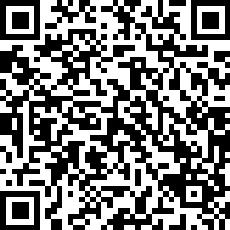


“When senior leaders normalize the topic of mental health... not just lives change, performance improves.”
ADAM NEMER FOUNDER OF SIMPLE MENTAL HEALTH
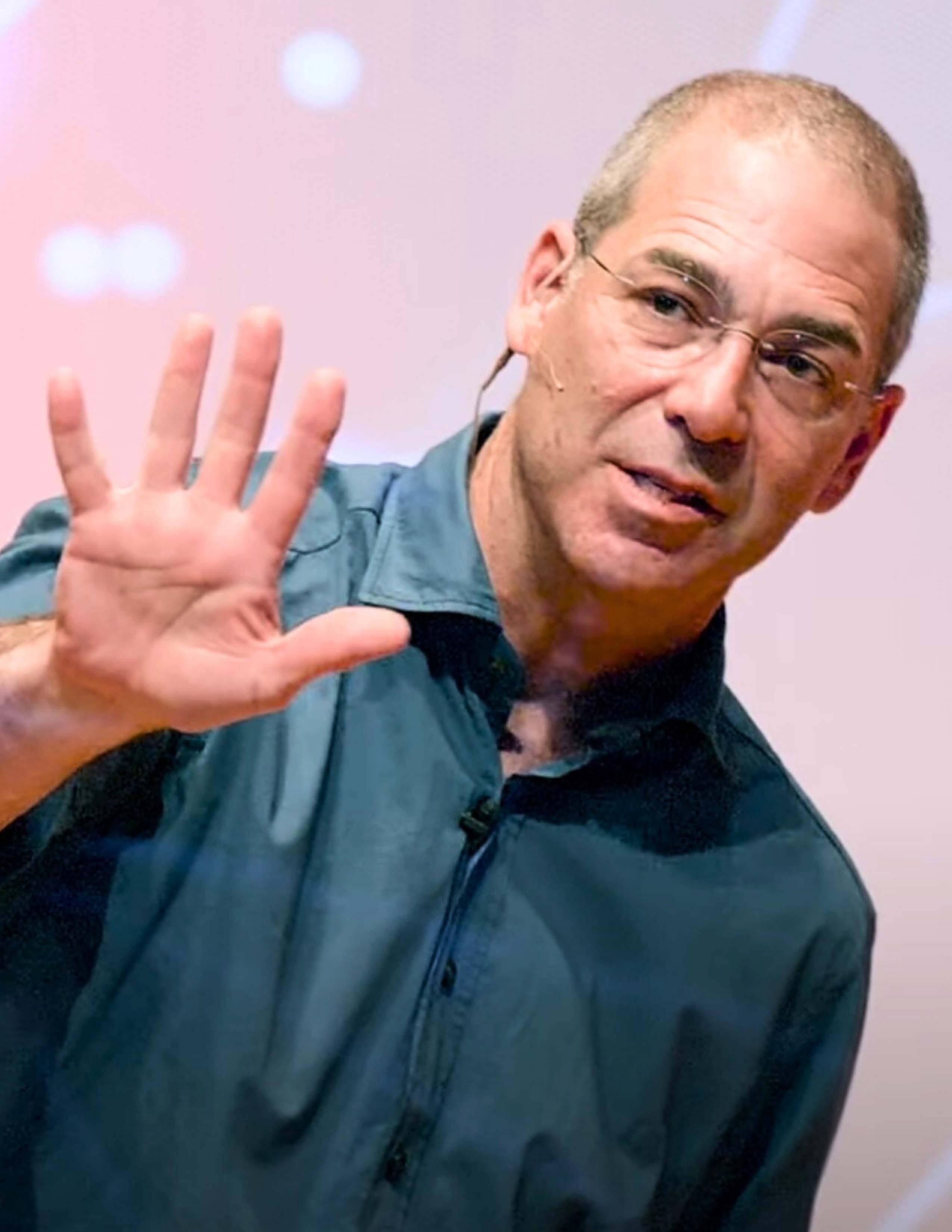

ALLIÉ: So let's talk more about these races that you were off to in creating Simple Mental Health. You intentionally stripped away the red tape and built something rooted, dare I say, in trust. What's the first barrier that you had to dismantle, not for any of your clients or people that you work with, but within yourself to make this vision real?
ADAM: The thing that holds us all back in the space of mental health, mental well-being and why the less than a half of us who need help get help, it's all about stigma; just these long term societal historical stigmas that we've just embedded in our organization. And there's things that we can do to normalize the topic of conversation in the workplace and there's some very remarkably simple things that you can do. And it's all about what I learned, it didn't happen for me on purpose. I didn't want this to happen and I didn't go about trying to do this, but what my lived experience taught me was that when a senior executive at a company is open and honest about what's going on with their mental health on a daily basis, like everyone in my organization knew I was struggling and I would be in a budget meeting for a multi-billion dollar health plan and say, “Guys, I got to walk out. I'm having an anxiety attack.” I got to go for a walk. That level of transparency.
And again, I wasn't doing it on purpose. I was just trying to get healthy. But what I learned was that when senior leaders normalize the topic of mental health in their organizations, when they make it as okay to talk about mental health as physical health and as normal to talk about it, then not just that lives change and people start getting the help, but it creates that when the leader says, hey, me too, then it creates a space for everyone else to get help. And then for the love of the universe, people get help. It's like we're investing in all these wellness programs, but they don't use them because we're not encouraging people to use them. So what happens is people get better and then your performance improves. And it all just comes from leaders having the, I don't want to say courage, but it's kind of the courage to share their own experiences with mental well-being. And we all have our stories, right? My mother, sister, ourselves.
ALLIÉ: For sure. I feel like there is such a huge value in vulnerability and us being brave enough to show up with the real version of ourselves.
ADAM: It's a leader's job. It's a leader's job to create an environment where everyone can show up as their full selves every day and do that job. If we're not creating this psychologically safe environment where we're attuned to the emotions and emotional needs and wellbeing needs of our colleagues, we're not doing our job.
ALLIÉ: Well, I like how you mentioned just a moment ago to normalize talking about mental health. To talk about mental health with just as much ease as our physical health, because we can talk about all the other organs in our body, but this organ (the brain) for some reason, oh, can't talk about that, not really.
ADAM: You want to know a funny story?
ALLIÉ: I do.
ADAM: I can't believe I'm going to tell you this, but I just realized I'm going to tell a lot of people. When I came back to work, the first thing I think about was, am I going to tell everybody or not? So I had a complete emotional collapse while I was running the operations of Kaiser's health plan in the Paci fic Northwest; complete emotional collapse. Out of work for about a month and a half, I came back to work and I had to decide if I was going to tell everybody. I mean, I'd worked at this company for 20 years. I know everybody. And I'm like, man, if I tell everyone, there's no way they let people run $4 billion operations if you check all these boxes. So I tell everyone I'm going to get fired but if I don't tell everybody, then the stuff that I'm going to have to do to get better is not conducive to being a successful executive, I have to be gone a lot and take care of myself more. And then I started thinking, so what do I do? Here's the funny thing. I have Crohn's disease. I've had Crohn's disease since I was 16.
Man, I'm always sick. I've had four open belly surgeries, I've had 12 hospitalizations and I've been sick ever since I was 16. Oddly though, since I got better with my mental health, my Crohn's has gotten so much better. You know, Crohn's disease, it hurts like hell and you're always running to the bathroom. I do this math. Even when I'm having a normal day, I think I spend 11% of my time in the bathroom. I get my meditation out there. So what I realized was this. I've been the CFO of our care system here, I've run this health plan and I'm always talking about my Crohn's disease.
“Stories beget stories… and when we share our stories, people get better.”
ADAM NEMER FOUNDER OF SIMPLE MENTAL HEALTH
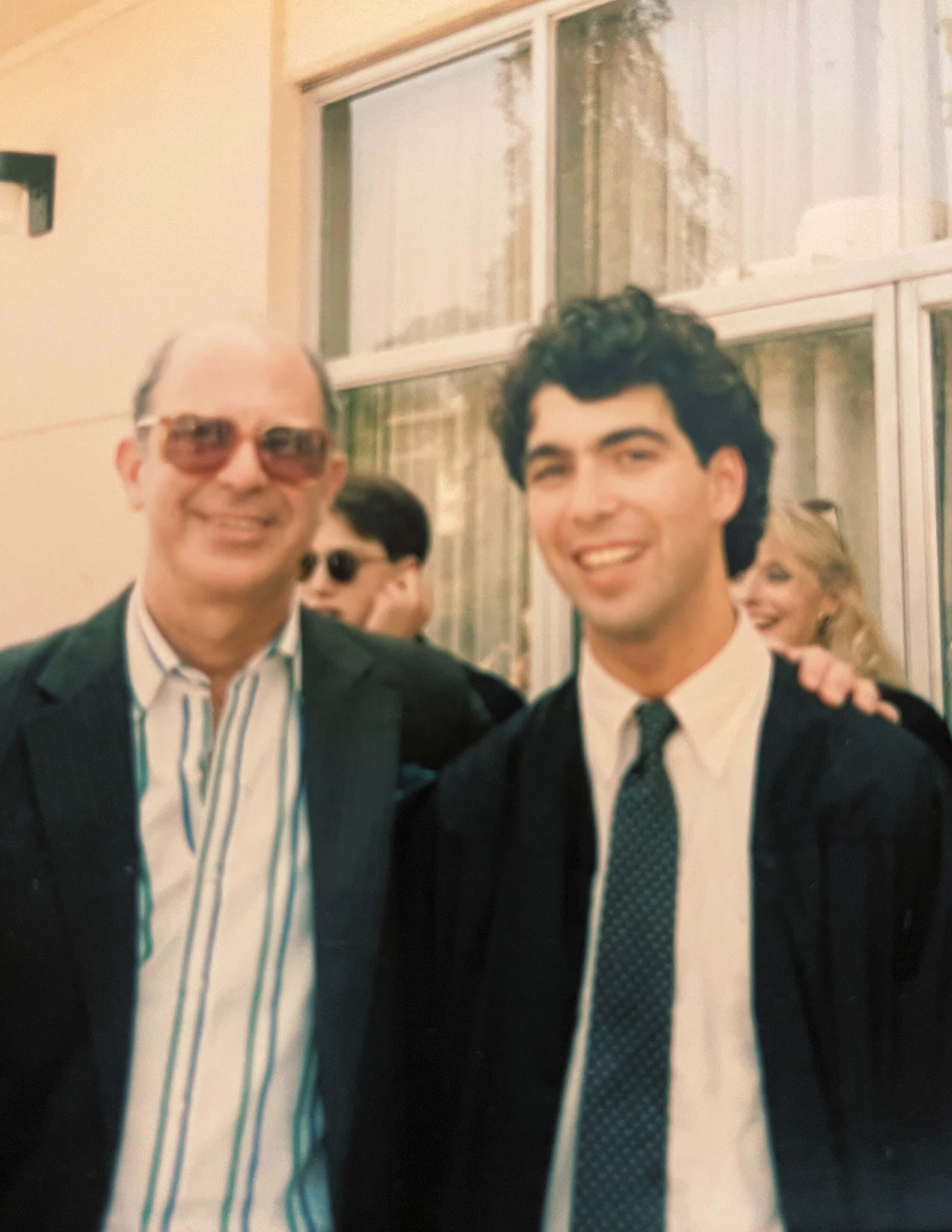

ADAM: (continued) And it never dawned on me that when I say, “Guys, I'm having a Crohn's problem. I got to get out of here,” everyone's going, “Man, he's running to the bathroom, he has diarrhea.” Oh my God, it never dawned on me – the image. I've been spending all my life saying “I got Crohn's, I got to go,” or “I can't eat that, it'll make me sick.” So I've been talking about my bowels with all of these people for 20 years. What the hell? I'll tell them I'm crazy.
ALLIÉ: If you talk about one, you should be comfortable talking about the other.
ADAM: That was the thought in my head. I can't believe I just told you.
ALLIÉ: You know what, this is you being real and being raw, which is the way we need to be, which is what a leader is and how, I think, to bravely step into your truth. It inspires people just to do the same.
ADAM: You know what, one of my biggest aha’s as a leader is there ain't nothing special about leaders. I mean, there is, but what I mean by that is remember there's a plinko game of life, you know, we all kind of just have life's experiences and there's nothing special about that person who became the CFO versus that person who's an analyst. We're all just people and it's just one person just got luckier. I just became really aware of that. And so on that point of vulnerability and authenticity, it's like a lot of leaders interpret that as, you know, that imposter syndrome. So I got to pretend like I know what I'm doing. Then I pretend like I know what I'm doing, it's lonely at the top, but then I got the lonely at the top imposter syndrome thing. What people want is, like you said, they just want to be around authentic people. Just be yourself, man. You can’t be like me, just be you. That is what people want. How can you fake authenticity?
ALLIÉ: Yeah, you can't. You can’t fake authenticity. So you said a word there – special. And I agree that leaders aren't necessarily ‘special', but I do think while the person perhaps isn't special, it’s that they make people feel special and that's the everything of a leader. That's when the special comes in. Not about the leader themselves, but that they have the ability to make people feel special.
ADAM: It's the position, it's the opportunity versus the hubris and the ego of wanting to be there. So I have a good friend who ran the facilities in our organization and he has this great line. He says to a group of folks, “What's the definition of a leader?” And they're like the president of the company, the CEO. And he's like, “No, a leader is not the person with the best title or the highest pay; it's just the person who has people walking side by side with them.” That's it. It's not a title. It's a function, and we can all lead where we stand. And it's not about you, it's about the “we”.
ALLIÉ: Yeah, it's not about the “me”. It's about the “we”. And I love it, because in my grammar geek thing, I'm thinking it's not the noun of it, it's the verb of it. It's the action.
ADAM: That's right. Yes. That was very English lit geeky. That was beautiful.
ALLIÉ: I love words. I'm a word nerd. So let's talk about your words though. You've said mental health care shouldn't be complicated. However, the fact of the matter is, life is complicated. So how do you reconcile the messiness of the human experience with a clean, clear model, like the one that you've created?
ADAM: Well, just to be really clear, I'm not a clinician. We're not providing mental health care. This is not a therapist organization, it’s Simple Mental Health. And helping people get help, there's lots of different tools in the toolbox from psychiatrists, therapists, meditation, yoga, self-care activities, all that sort of stuff. What Simple Mental Health believes, and what we're here to do is we believe that helping people get help around in our lives can be simple. Getting better is hard work. Man, I spent 20 years in severe depression and anxiety from these traumatic experiences I had, and I had no idea, and it's still worked for me. Getting better is work. But getting me into the lane to get help took a five minute conversation of one authentic leader and it changed my life. And so mental health care… It’s a journey. I woke up today feeling a little anxious, but I know what to do. I went for a walk, I breathed a little, I stretched a little and I felt better.
So what we teach is, in effect, mental health first aid. We all know CPR. We all know what to do if someone's choking. We all know what to do if someone has a bruise on their arm. We know how to dial 911. So what do you do if
ADAM: (continued) someone's having an anxiety attack at your office, a panic attack, they're in a depressive episode? Well, what we believe is that all of us should know the basic tenets of mental health first aid. Mental health first aid, my definition of it, now there is an organization called Mental Health First Aid. Go check out their website. It's an internationally recognized program from Australia, in the United States, it's credentialed by the National Council for Mental Wellbeing. They have training classes on it. I will oversimplify it in my de finition and I'll kind of walk you through it. You take mental first aid, these programs that we teach, you learn one, how to recognize the signs and symptoms that someone around you, like a colleague at work, may be struggling with their mental wellbeing.
So what are the signs and symptoms? Number one. Then, number two, how do you approach them in a safe, thoughtful, caring and nonjudgmental manner? We can notice them and when we do notice them, we usually throw it in the gutter when we're trying to help them because we haven't been taught the right thing to say. So it's, how do you notice, how do you engage, and then how do you guide to services in the community? There's this perception that you just can't get a therapist appointment. Access to care can be hard, but it's not impossible and there's lots of things that we as leaders can do in our businesses to help guide folks to get the care. And so in a three hour workshop, we bring CEOs, the C-suite, boards of directors, leadership teams, through a three hour training where they leave that class knowing how to recognize the signs of someone struggling, how to engage them properly, how to guide them to services, they know how to normalize the topic of mental health on their teams, and they understand from a business case, why it's so important that they do it. And that's what we think is simple.
ALLIÉ: Helping people get help is simple. I love that.
ADAM: Want to know another funny story?
ALLIÉ: I do want to know another funny story.
ADAM: So this is the entire thing. I'm going to get sad then not sad. So my story very quick, young guy, find my dad's suicide, don't get enough help that I need, get an MBA, I grow a career and I'm really sick. 17 years of PTSD, horrible illness as an exec. Find my mom after she passes away, I have a complete emotional breakdown where I'm running the operations of Kaiser's health plan in the Northwest. I wear Levi's, t-shirts, and flip-flops to work. Man, it looks like I'm going to the beach, not running a health plan and I'm a son of a b*tch running and yelling at everybody.
Three weeks later, this national Kaiser leader walks into my office and he says, “Hey man, how are you doing?” And I'm like, “I'm doing great”. You know, wearing that mask of happiness. I hadn’t shaved, I looked so bad, and he goes, “Well, you know, you look great.” His ability to say that knowing how bad I looked is amazing. He goes, “You know, you look great, Adam. Are you seeing a therapist? I know about you finding your dad's suicide, now you just found your mom after she passed. Are you seeing a therapist? Is that why you're doing so well?” And I'm like, “I didn’t see a therapist. I'm doing great.” He says, “Well, do you know the signs to look for in yourself in case you might need to get some help down the road?” As I say, no, he pulls out of his suit pocket the business card of Kaiser's employee assistance program in the Northwest, he slides it across the desk to me and he goes, “Dude, give Dave Poppleton a phone call. Dave was our EAP senior leader at Kaiser at the time up in Portland. He said, “You know, you've had these traumatic experiences in your life, you should at least know the signs to look for in yourself in case you need to get some help down the road.” And, Allié, I had no idea what he was doing. It was the next day that I went and saw the EAP counselor. Sitting in his office, they walked through the signs and symptoms and I checked every box other than hallucinations. That's where after 20 years, you know, they all exploded into my head. And so a senior leader at a $90 billion company had a five minute conversation and changed my life.
But here's the magic part. Here's the thing why I go through this whole story. This guy comes to see me on Monday. The day before, he was in a mental health first aid class at his church on Sunday. So he's just a national Kaiser leader at his church on a Sunday and they're talking about mental health first aid, and as they're talking about the signs and symptoms that someone could be struggling with their mental health, he was like, “Adam, Adam, Adam, Adam. Oh my God, Nemer is in a lot of trouble.” Next part of the class, well, they taught him how to approach somebody in a safe, thoughtful, caring, nonjudgmental manner. You know how sometimes like you're in a workshop and someone will ask a hard question and the facilitator will say like, “Well, what do you all think?” I got workshopped by his church. So my buddy David, he raised his hand. He's like, “You know, I'm worried about my buddy, Adam. I don't know, he'll be so
“All I wanted to do was get people to not hurt…”
ADAM: (continued) defensive if I talk to him. What do you guys think I should do?” And the facilitator said, “Well, what do you all think?” And so one day on a Sunday, a senior leader at a $90 billion company workshopped me with his church. The next day in a five minute conversation, he changed my life. And that's what we teach leaders to do is how to have those five minute conversations. He's around me all the time and he did recognize the behaviors, but if you don't take the class, if you don't say these signs and symptoms, hey, maybe I'm going to go see EAP. That's all he did. Saved my life.
ALLIÉ: So it's just such a huge, amazing, crazy, ridiculous example of how just by connecting those dots, we don't have to serve up the magic, we just have to recognize how to find the magic.
ADAM: And make it okay to see, right? So if I had been in an organization where leaders would not have supported sending someone, you know, a lot of places will go, oh, they’re an EAP. They’re okay. It's this negative connotation. It's not supported. So the last part of our story, the next thing that happened is, after I saw that EAP counselor, I was out of work for about a month and a half, starting antidepressants, going to therapy and all that sort of stuff. And when I came back to work, I started thinking about leadership differently. There's this phrase, y'all have heard it. It’s “Not all readers are leaders, but all leaders are readers”. What that's always kind of meant to me is like leadership is an evolving avocation. You're always learning new things and incorporating it into your style. It's not like math. You learned it once and you're always applying it. You're always having to learn it. So you learn something new in the world and then you adjust your approach.
So my big ‘aha’ was in therapy. I learned that absurd statistic that every year, more than one out of five Americans experience what a behavioral health clinician would diagnose in a medical record as a mental illness. One out of five of us. Now it's worse. Now it's one out of four of us, 24% last year, but back then one out of five, and less than a half of us get help. And the median time period from the onset of symptoms to getting help is 11 years. So thinking about it, I had been trained at Kaiser Permanente, it’s a population health company, they teach you to think as an executive through the lens of what's good for the healthcare of a population. And I'm like, man, I got like a small team here at Kaiser, you know, this big company, I got like 400-500 people here, that's all. But that means I got like 80 to 100 people that are going to be in just as much damn pain as I'm in. And now that I could connect the dots between all the pain I was in and the diagnosis and the fact that recovery was possible, if I chose to get help and kept going at it, I realized, oh my God, what would I do if I was going to have a hundred people with cancer this year, a heart disease or diabetes, right?
Do something right? You get people with scans and you do something. And so what we ended up doing is, that mental health first aid program, we piloted it for Kaiser on our teams. We ended up training company wide, almost 20,000 health plan employees on this skill set, but it took all 400-500 people out of work in these full day increments over the course of a couple of weeks, executives, staff, everybody together, and what happened is, over the next couple of years, as we trained everybody and I was open and honest every day about what was going on in my life, they created the space for everybody else to. Two years later, we had some of the highest employee engagement stats in the company and check this out, on every single key customer performance indicator, Kaiser Northwest was number one in the country.
ALLIÉ: That is amazing.
ADAM: All I wanted to do was get people to not hurt, because it fricking hurts. You know, the only thing that we did differently in those two years is I, the leader, came out of the closet and said, “Wow, I'm really struggling, and it's okay. Let's all struggle and get help. That was the only thing that happened differently and two years later, we were number one on every metric.
ADAM NEMER FOUNDER OF SIMPLE MENTAL HEALTH


ALLIÉ: That is incredible.
ADAM: Yeah. They say there's a stat that for people with depression, it impacts your productivity like 20%. It makes sense, right? You're saying it's about a day in a week of work. Oxford university MBA program last year did a study, could have been 18 months ago. They found that people who are happy are 13% more productive. So let’s just do this math at a macro level, right? When you help somebody go from being unhappy, being really depressed to happy, you have 33%, that's like a third of a work week, of improved productivity. Now you read that, what we experienced on our teams, we just cashed that in. Because what happened is for our two years, we weren't running like wellness programs, we were encouraging people to actually go get help, and people were going to get help. And as people got help, their productivity improved. Attendance at work went way up. We had way less absenteeism. We had a better team dynamic. So if one out of five of us every day is struggling on any given day, think about how many team conversations are really driven by someone in fight or flight, right? It's massive happening in all of our teams every day. You have a much better team dynamic. So what happened on our teams? And again, we didn't do any of this on purpose. I just want people not to feel bad. And we ended up, you know, I think about it as unleashing all of this organizational performance that was being held in by just our poor mental well-being and damn it, there's something simple leaders can do about it.
ALLIÉ: Yes, take care of your people. Take care of them.
ADAM: I mean, hell man, that's not rocket science. If a recovering CFO can do this, anybody can do it.
ALLIÉ: There's no excuse now. Now that we know, there's no excuse. Look, I'm going to switch gears again and get really personal. If you could sit down with your younger self before the C-suite titles, before the courage to step away from that, what truth about mental health would you whisper in his ear that he wasn't ready to hear back then?
ADAM: You know, I remember the moment that I wish the universe had taught me this. So what I wish that I knew was that, going to therapy after I found my dad when I had a traumatic event and being open to going on antidepressants at that time, I can't imagine what my life could have been, what could have happened. I remember the moment that I said I didn't want was this, I think I remember the day I found him on a Wednesday, he hadn't shown up for work and he was always the first one at the office, and it was really weird. You know, he didn't show up for work. He'd be reading the New York Times with his coffee, with his feet on the desk, I loved it. And he wasn't there, the lights weren't on, it was just kind of eerie in the office, and I called him at his condo, and he didn't answer the phone and that was really weird. So I drove down there, I checked on him, and I found him. He had shot himself in the kitchen, and that's where I had found him.
I remember like a few moments after that, I went and sat on his bed, wait, I think the ambulance came and a rabbi came somehow. But the next thing I remember is a day later, I'm sitting in a psychiatrist's office, this guy named Dr. Boverman. I remember this like it was yesterday. I was sitting there, it was like 9 or 10am-ish. It was a day after I had found my dad's suicide. Now, I have no idea how we got there, but somebody made an appointment and I'm sitting in the psychiatrist's office with my older sister, Tiffany, who's nine months pregnant, and my younger sister, Robin, who's a resident in developmental pediatrics in Salt Lake City, and me and this psychiatrist, right? So for an hour, we talked with him. And yeah, this is 24 hours after I find him (my dad). So he goes to my sister, Tiffany, “You're nine months pregnant. I mean, I really encourage you, you're so focused on your baby, stay focused, have a healthy baby. You know, in a couple months down the road, you might seek some help. I'm not sure I'd be the right therapist for you, but if you'd like help to find the right one, I'm happy to help you.”
Then he turned to my sister, Robin, and he says, “Robin, you're in a new relationship with a man, you're in your residency program out in Salt Lake. That's a pretty rigorous program, but maybe a month or so, a couple of weeks, check out a therapy appointment, but just kind of get back into it and then a couple of weeks ago, get an appointment.”
He goes to me, “You. I want to see you here at eight o'clock tomorrow morning.” I came there the next day at eight o'clock in the morning, the first thing out of his mouth, he said - I remember his blue little cardigan sweater. This was damn near so long ago, 25 years ago. He says, “So Adam, what do you want to get out of your time with me?” And I
ADAM: (continued) said, “There ain't nothing wrong with me. That's because my dad's crazy and I know my mom's sick as there can be, I'm not f*cking crazy. I'm not taking any medicine. I'm not going to be that guy that's got to see a shrink for the next week for the rest of his life. All I want is, I want to see you no more than four or five times and I want you to give me the skills so that I don't go do what he did when I'm his age.”
And he said, okay. And basically what I learned from Dr. Boverman was to talk about my dad. You know, if he's ever on your mind, talk about him. Whoever you're with, if he comes up, tell them that you need to talk. I practiced that. I always did that and it wasn't enough. And it was his beautiful gift to me that in my obstinance, he found a way to give me one thing that really was a beautiful tool. But if I could go back to any moment in my life and change any moment, I mean, it would have to be that. You know, because I wasn't open to that conversation, I had 18 years of undiagnosed, severe, daily - I mean, it was like I had a 18 year anxiety attack layered on top of severe depression. I had three open belly surgeries for my Crohn's disease. I had 11 or 12 week-long hospitalizations because of my Crohn's all exacerbated from the stress of mental illness, which I didn't know was going on. I got divorced. I mean, divorce is a two-way street, but it's sure not helpful when your husband is an a**hole all the time and can't hold it in. I can't imagine how much, and I've had a rich and wonderful life, and I'll tell you, I'm the luckiest guy I know, but the only way I could have gotten luckier is if I had, at that one moment on that Dr. Boverman's couch on Lovejoy in 20th in Portland, Oregon, he was right next to Dr. Kingery's office. I mean, I remember this like it was yesterday and it was March of 99. That's the moment, if I could go back and change anything.
ALLIÉ: Thank you, first and foremost. I mean, here you are sharing the story. So personally, walking the walk, not just talking it, right? It is through these stories and through these moments when we share them, when we're not scared to be real, to be raw with things that we can actually connect and in that way help other people who maybe don't even know what they need.
ADAM: Stories beget stories. Everyone who's listening to this is going to be thinking about someone in their life. Interestingly, one of the things that I wasn't expecting when I started this work was that it would be emotionally hard on me to hold space for other people. I didn't know that. And I'm a recovering CFO, I wouldn't even have thought about that. But it's like all day, if you tell your story all day long, I promise, people tell you theirs, then you tell each other your stories and you hold them there and then we hold each other's weight. It's how it works. We share each other's stories. It's a beautiful thing because one of the gifts I get from sharing my stories is people share their stories with me.
ALLIÉ: And how beautiful is that?
ADAM: It's amazing.
ALLIÉ: What a beautiful gift.
ADAM: Stories beget stories. You know, the myths, there's this isolation cycle I think of. We teach ourselves about mental illness, like depression isn't real. Those myths drive these stigmas, like people with depression are just weak. Those stigmas drive feelings of shame, like, oh my God, I got depression. I must be a weak person. So that drives silence. I'm not going to tell anybody. So this myths, stigma, shame, silence, isolation circle, it's a self-perpetuating cycle. It eats us up. But when people share their stories, it breaks the myths because the myths are that it's not real, that mental illness isn't real, that it doesn't hurt. What's wrong with you? Well, when leaders and other people, when we share our stories, it breaks all that isolation. When we share our stories, people get better. It breaks the myths, it breaks the stigmas, it breaks the shame. 80% of people who don't get help share that stigma is one of the key drivers that they don't get help.
ALLIÉ: Yeah, I hear you a hundred percent. I mean, Jack and I started AwareNow five years ago, we've told over 1400 stories. I personally have touched each one. So I hear you a hundred percent. I feel like I've lived 1400 lives, if for nothing but like a day or a snapshot, a story at a time. And I hear you, there's this shared space. When you share your story, Adam, I feel you. There's an energy exchange there and there's a connection and the value of that, I mean, you can't touch that.
“So the ‘getting it right’ at the individual level is we can get better.”
ADAM: It's like being on a team. When you're on a team, when you win, the victory is sweeter and when you lose, the loss is easier. You know, you get to share wins and share losses. I'm a CFO, I'm a recovery finance guy, not a clinician, but the thing that just really is just fascinating for me as a lay person here is how it, you know, they call it talk therapy for a reason. I mean, for my Crohn's disease, I get infusions, I do colonoscopies every once in a while.
For me to get better with my mental health, I take antidepressants every day. That's fine, whatever. But I just felt the prescription is actually talking. Talking is what makes us feel better. Sometimes it's so hard for me to wrap my mind intellectually around how words that I'm saying and talking with somebody makes the energy in my body different, which makes me feel better. I can't wrap my mind around it. It's so bizarre, but talking, it's my favorite line. They call it talk therapy for a reason.
ALLIÉ: And let's talk about it.
ADAM: Exactly. Let's talk about our talk.
ALLIÉ: Let's talk about the talk and not just walk it. Talk it and walk it. So you're building something that sort of redefines this relationship between people and their care and how they access it and the leaders that serve as conduits for it. This will be my last question for you today. What does the future look like if we can get this right, not just for therapy, but how we see ourselves and each other? What if we get it right, Adam, what does that look like?
ADAM: For me, I'll give you a micro example, and then I'll give you a macro example, what getting it right looks like. I'm going to come off as a real old man now, but the movie, the analogy that's coming to mind is Chariots of Fire. Have you seen it?
ALLIÉ: I have.
ADAM: Remember there's the discus scene. We could either describe the shot put scene or the discus scene. So the Americans, they were practicing in America for what was the 1912 Olympics, maybe something like that in London. And apparently in America, they were practicing with shot puts the size of basketballs. And they were practicing with discuses, like the size of, you know, these big old platters. And they get to the Olympics in London and all of a sudden they get a shot put that's the size of a softball instead of a basketball. And they are launching these things and they're winning all these medals. It's really easy to throw a shot put the size of a softball if you've been training on one, the size of a basketball. That's how every single aspect of life for me is now. So what does getting it right look like on an individual basis is moving through life, feeling like you just went from shucking basketball size shot puts to a normal size shot put.
Every single thing in life is easier. I've learned skills that have made me stronger, more self-con fident. I'd say for the first time in my life, I have self-trust, self-respect and true self-confidence. I've been forged. I know that if I got out of that, I can do anything. I was a CFO of that place while I was going through all that pain, all the physical and mental stuff, and I overcame it, sweet mother of God, I can do anything.
So the ‘getting it right’ at the individual level is we can get better. You don't have to go around suffering. Sometimes our backs will still hurt. I still have my struggles, not always. It’s getting better. Getting it right means you feel better and you can be happy, have joy in life. And getting it right on the macro level, oh, Allié, I don't know, my parents taught
Exclusive Interview with Adam Nemer https://awarenow.us/podcast/simple-mental-health

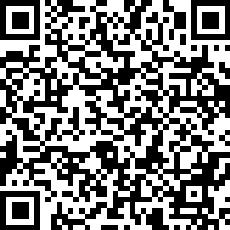


“I left an overpaid underworked executive job at the greatest company in the world because I really believe we can change the world here.”
ADAM: (continued) me that Margaret Mead thing long ago when I was a little boy, you know, never doubt that a small group of people can change the world. When in doubt, nothing ever happens. My parents just raised me on that sort of stuff. And so I believe that business leaders should incorporate mental health literacy training into their corporate training. And it doesn't cost new money across the country in the United States. On average, organizations spend between $1,100 and $1,300 a year on employee training. This stuff might be $200-$300 more. So it's not even new money. Just reallocate your existing training budget for this.
We can change the world because the fact of the matter is, unemployment may not be great, but we're always talking about unemployment. What about employment? Now, 95% of Americans go to work every day. Think of it when Americans went to work, their leaders educated them on just a little bit on mental health first aid.
How many managers in America would not know what to do? If an employee was having a heart attack, they would call 911. Every manager knows how to do that. It's a job requirement. So what getting it right means is when corporate America, which is very safety focused, incorporates mental health training into all of the safety training we do across corporate America for the love of the universe Allié, we change the world here because think about how many five minute conversations can happen in a team.
I left an overpaid underworked executive job at the greatest company in the world because I really believe we can change the world here. I think we can take a massive bite out of the mental health crisis in America when leaders become mental health literate, and normalize the topic. We give everybody the bene fits. We give them the benefit of therapy. We give them the benefits for EAP. Let's encourage people to use it. Let's encourage people to use what we already give them to change the world. ∎

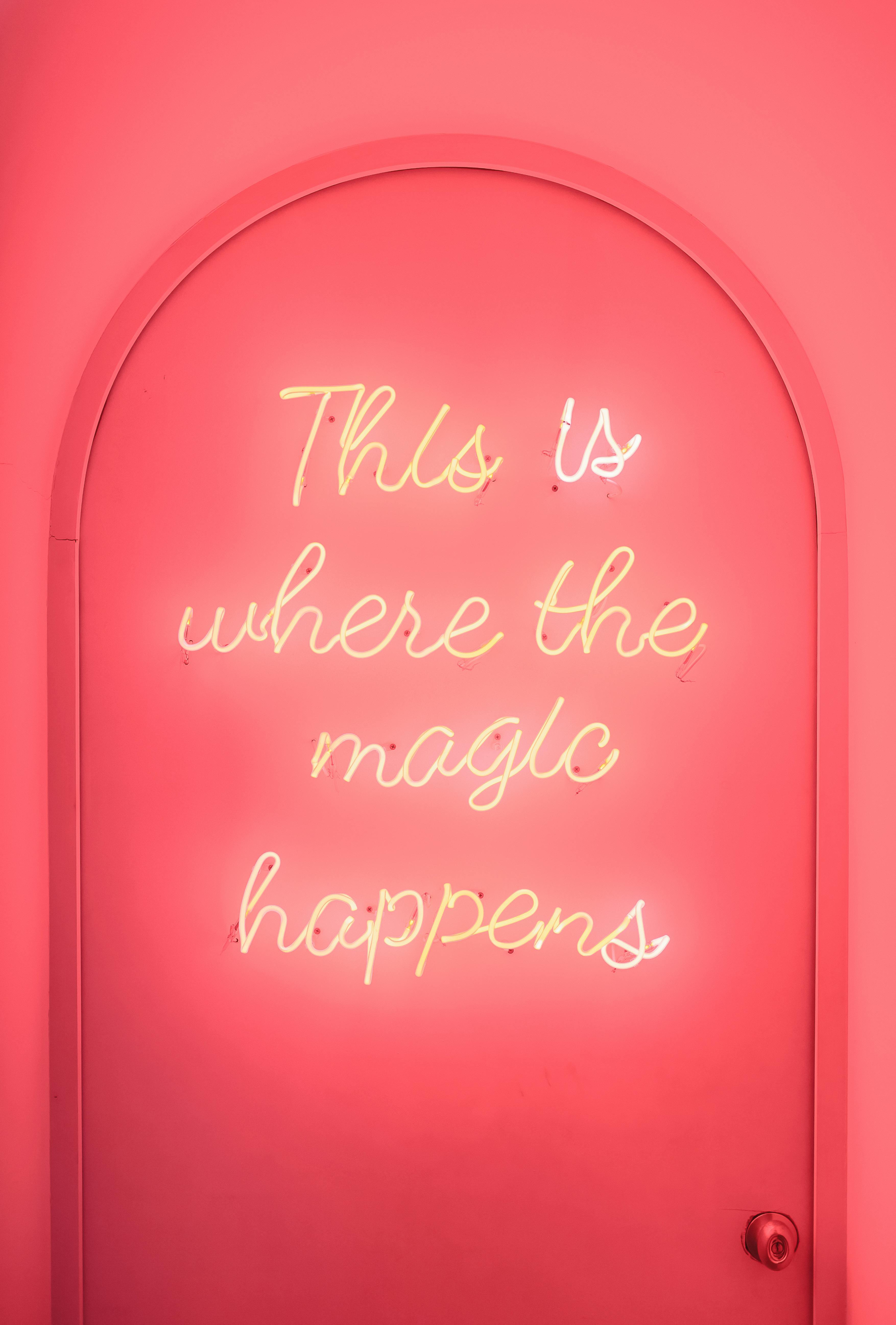


SONJA MONTIEL CO-FOUNDER OF PEQ PERFORMANCE CONSULTING
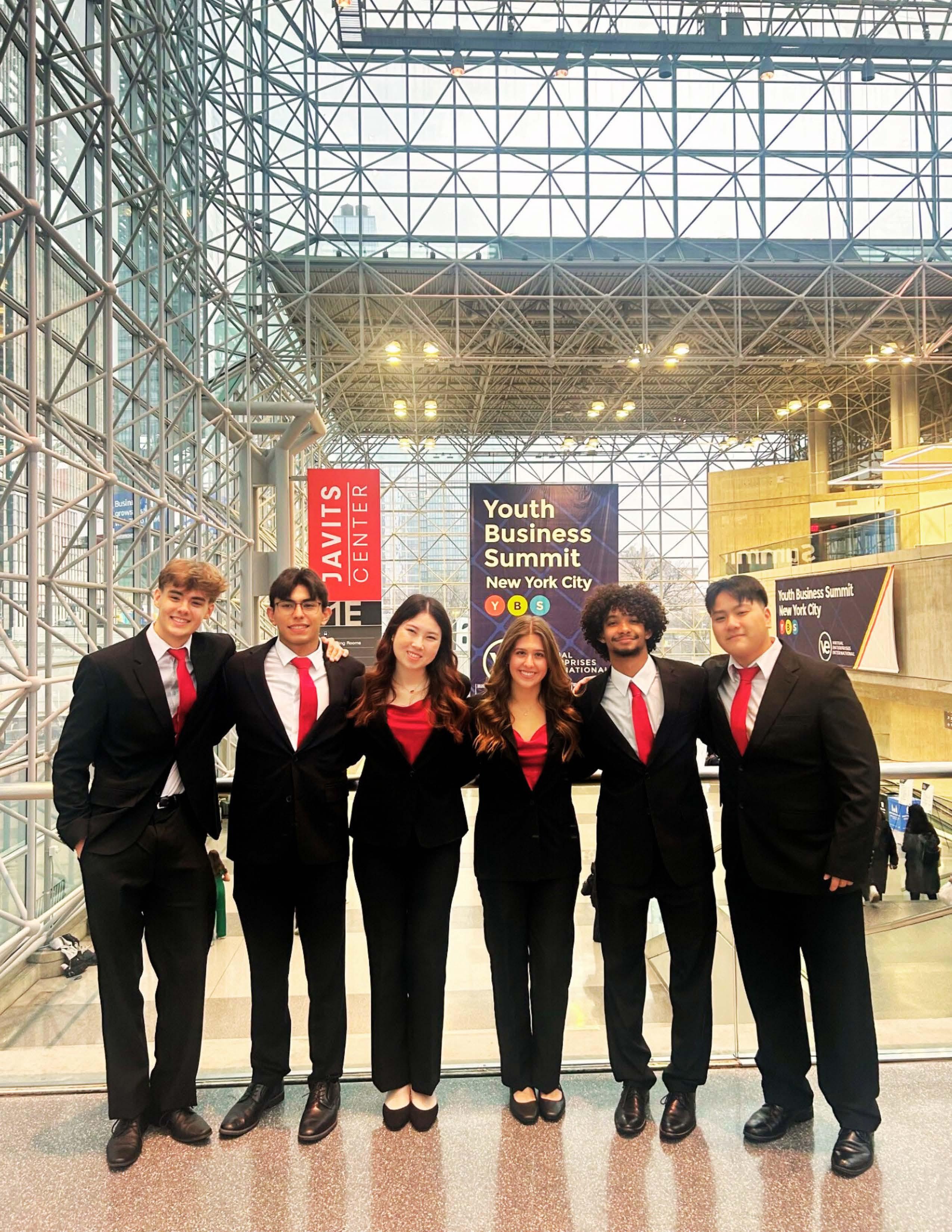

‘PEQ PERFORMANCE’
Being
raised by a parent who worked as a maintenance mechanic gave my family a solid foundation. I deeply respected my father’s career and felt proud of what he did - until I reached my teen years.
By the time I was in high school during the 1990s, I was confused when my school counselor said that I have been “tracked” to attend college after high school. Some of my friends were being told they were “tracked” to do career technical training. At the time, I wondered why career education was pinned against college admissions. Why was this choice in the form of either, instead of both?
In 1983, A National at Risk Report was issued by the National Commission on Excellence in Education, criticizing the educational system in the United States and recommended that students pursue more rigorous academic standards. In 2001, the United States Congress issued the No Child Left Behind Act, which emphasized requirements for students to be more competitive for college admissions. Both nationally-driven campaigns impacted the perception of technical training programs, even to the point of being seen as less than. As a result, young people like myself during my teen years started to believe that my only choice was to either select career technical education courses or courses that prepared me for college. I selected the college path with a scarcity mindset. I believed that to be a successful adult, I had to land a profession that was better than my father’s. That still stings.
Fast forward to 2024. I attended a summit for the Career Technical Education Pathways Program by Conejo Valley Unified School District (CVUSD). The room was packed, filled with students, teachers, educational and community leaders, and business partners. The energy in the room was electric, and I knew that this was more than a program. It was a movement.
Nearly two decades ago, CVUSD received a School-to-Career grant that sparked a quiet revolution. Instead of relegating career education to the margins, the district embedded it into the core of its high school experience. They created a model with three teachers on special assignment (TOSAs) to serve as Career Education Coordinators— Nick Guerin, Ashley Cooper, and Dr. Laurie Looker. These educators are not just coordinators, but mentors and collaborators who were a daily presence on each high school campus. Each coordinator works diligently to build strong partnerships with local community organizations, businesses, and colleges demonstrating how their programs directly prepare students to meet the demands of the local workforce.
This model has endured economic downturns and shifting educational trends. “Our Career Education Pathways are the reason our programs are able to grow while other programs are contracting,” Cooper shared. “We write grants, analyze employment data, and align our programs with real workforce needs.” For CVUSD, it’s not career technical education versus college admissions; it’s both.
During students’ participation in the Career Technical Education Pathways Program, they can earn certi fications, explore trades, and prepare for degrees in fields like allied health, broadcasting, construction technology, engineering, and the arts. “There are 1,700 students on my home campus,” Cooper said. “That means 1,700 different ways to launch into the world after graduation and prepare students for whatever direction they choose.”
ASHLEY COOPER CVUSD CAREER EDUCATION COORDINATOR
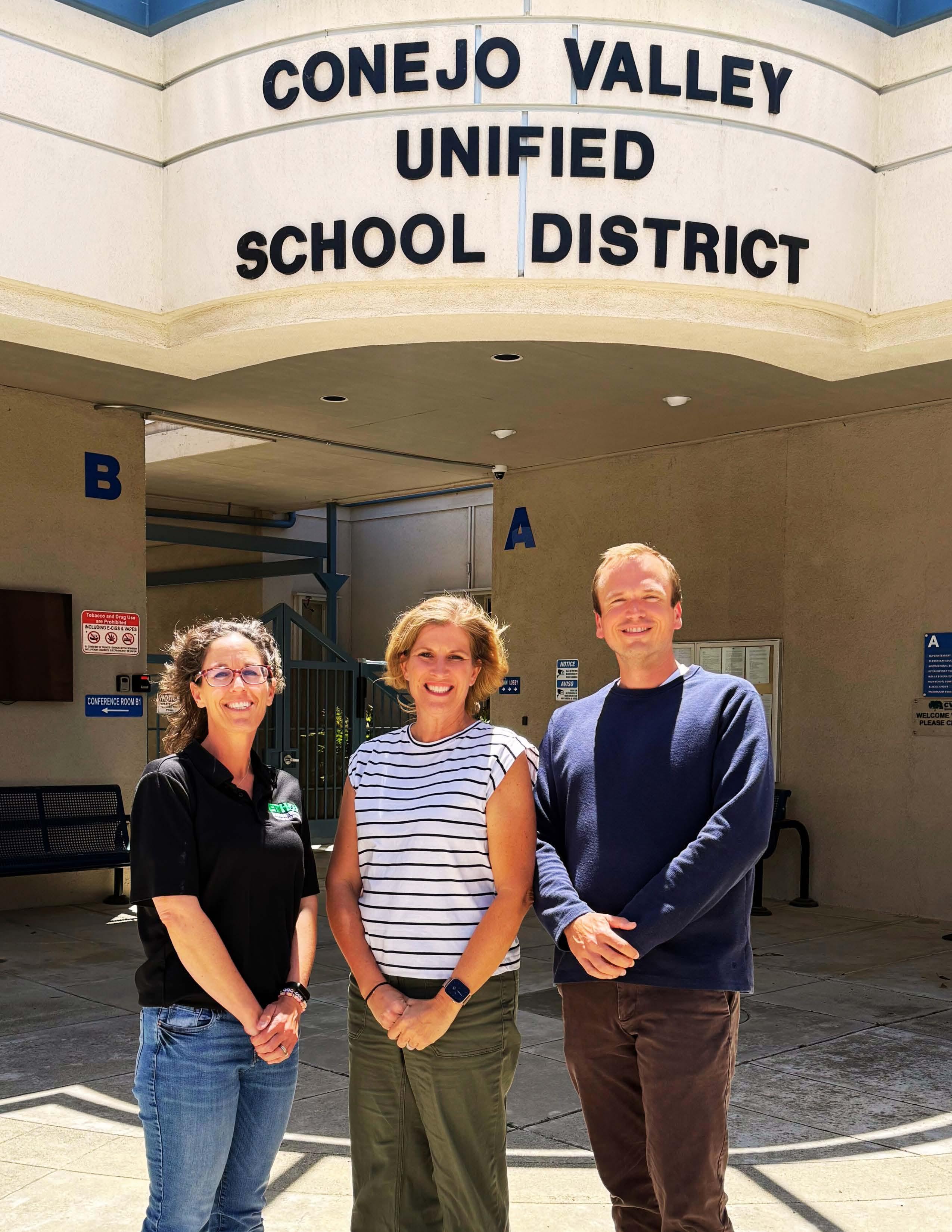

CVUSD’s approach is rooted in empowerment and relevance. Whether students are learning construction, robotics, stagecraft, or marketing, they’re not just gaining skills, they’re discovering themselves, their self-worth, and the value of multiple professions across a variety of industries.
Here are just a few offerings, experiences, and support that the Career Technical Education Pathways Program hosts and coordinates:
Over 30 Career Technical Pathways to include:
● Allied Health
● Robotic Technologies
● Video Game Design
● Education/Child Development
● Music Production
● Stagecraft
● Professional Dance
Certifications and Industry-Standard Skills to include:
● CPR/First Aid
● Food Handler
● Adobe-Photoshop
● OSHA
● AED
● EMT Certified
Student Leadership Opportunities through regional and national competitions and projects to include:
● Future Business Leaders of America (FBLA)
● HOSA Future Health Professionals
● Family, Career and Community Leaders of America (FCCLA)
● Skills UCA
● Distributive Education Clubs of America (DECA)
● Virtual Enterprise
● Thespian Society
Community Partnerships to include:
● Job Shadowing
● Internships
● Field Trips
● Mentorships
● Guest Speakers
● Student Programming
● ACE Mentor Program
College and Education Partnerships to include:
● Dual Enrollment
● Field Trips and Guest Speakers
● Competitions
● Educator Training
● Grant Partnerships
● Continuation of Pathways


AwareNow Podcast
Written and Narrated by Sonja Montiel https://awarenow.us/podcast/the-conejo-valley-blueprint

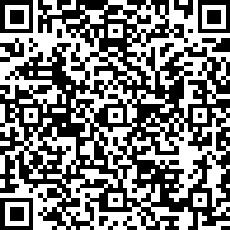

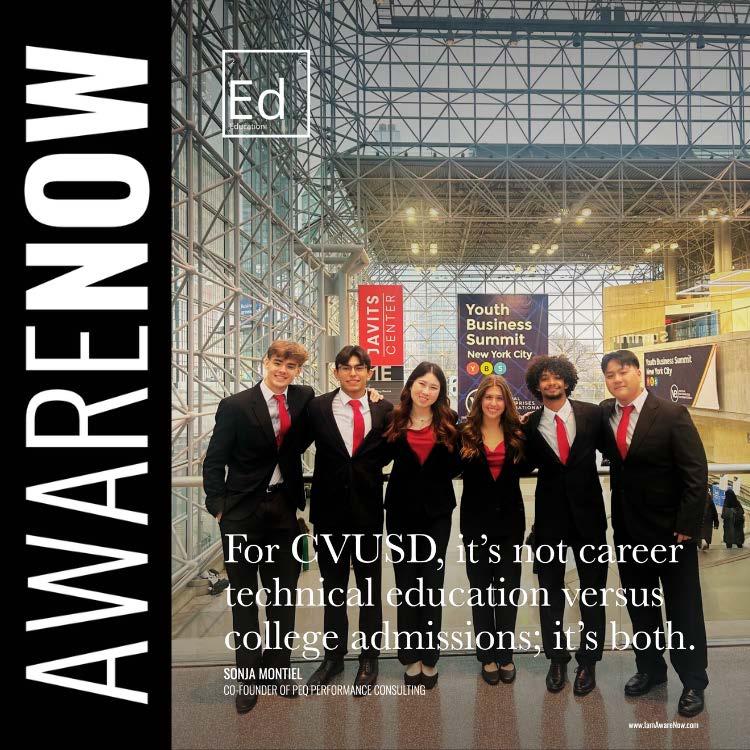
What makes CVUSD’s Career Technical Education program truly exceptional? Continuity. “Our leadership hasn’t been a revolving door,” Cooper explained. “That stability has allowed us to build deep, lasting relationships with community partners - Rotary, Kiwanis, the Chamber, the City. In addition, from the beginning, a local nonpro fit, Conejo Schools Foundation, has played a pivotal role in building the foundation of our program. Since 2003, Conejo Schools Foundation has cultivated partnerships, opened doors, and accelerated the district’s ability to connect students with real-world opportunities.”
The program has been designed for ALL students in the district, across every level of academic achievement and campus engagement. One student’s journey captures the heart of the program.
Eddie (name change) had started on a whim as a 9th grade student enrolling in the construction technology pathway program because he didn’t have any other classes he was interested in. As a sophomore, he showed great promise, and by the time Eddie was a junior, he joined the construction competition team. He competed in the regional California Design Build Competition as a senior, winning a scholarship for his leadership and was offered employment by the event organizers.
The people driving the Career Technical Education Pathways program at CVUSD have the relentless commitment to honoring each student’s story, expanding their possibilities, and equipping them with the tools to build a future that’s both meaningful and sustainable. “CTE used to be where students were assigned,” Cooper said. “Now, our Career Education pathway courses are a destination. It’s where students find their worth, their curiosity, and their future.” ∎

SONJA MONTIEL
Co-Founder of PEQ Performance Consulting www.awarenowmedia.com/sonja-montiel
SONJA MONTIEL (MA Education) is a cofounder of PEQ Performance Consulting LLC and cohost of “The DH Effect” podcast. She and her partner, Hilary Bilbrey, guide individuals, families, and teams to consistently reach successful outcomes through positive and emotional intelligence strategies. During Sonja’s 23 years working with thousands of teens and young adults worldwide, she began to witness many societies creating an unhealthy hyper-achieving culture that misguides our young people in their pursuit of living a life of fulfillment. Sonja is changing that narrative highlighting educators around the world who dare to think differently about education. (www.peq-performance.com)




Creativity isn’t optional— it’s a driver.
MYLES FRESNEL SENIOR ENTREPRENEURSHIP MAJOR AT HAMPTON UNIVERSITY
BY ALEX’ EXCLUSIVE COLUMN BY ALEX TAYLOR
Myles Fresnel is a senior entrepreneurship major at Hampton University who merges business, creativity, and social impact to drive meaningful change in his community. He has led youth mentorship programs, managed benefits for over 80,000 employees during his internships, and now explores sustainable real estate development using innovative technologies. Myles will graduate this year and has been invited as a sponsored delegate to the Global Business Symposium in Cambridge to deepen his leadership in emotional intelligence, hybrid work strategies, and sustainability.
ALEX: Myles, you’re a senior at Hampton University studying entrepreneurship. How did you begin blending business with social causes?
MYLES: It started with a personal mission—figuring out how to use business not just for pro fit, but for purpose. From my time at Lenserf & Co., a premiere insurance company, to my current real estate management role with Trinity Property Consultants, as an intern. I’ve consistently looked for ways to combine strategy with service. My shift towards community happened when in the summer of 2023 I ran my own sports camp called “Rising Starz” in Baltimore County, Maryland. That experience allowed me to empower around 30 students, acclimating them to 6 sports. It showed me the power of creating something that has both structure and soul. It was about more than their game—it was about mentorship, safety, and giving back. As my next action, I'll be arriving as a sponsored delegate to the Global Business Symposium at the University of Cambridge to learn about sustainability in business and other factors to improve the global impact I can make.
ALEX: Many people put creativity and business in separate. You’ve found a way to merge the two. How?
MYLES: For me, creativity isn’t optional—it’s a driver. Whether it’s building online brands, consulting for music videos, or running marketing campaigns, I love creating things from the ground up. That creative mindset transfers to business; it helps me connect with people, craft compelling narratives, and approach problem-solving in innovative ways. It’s also helped me advocate effectively in causes I care about, from peaceful protests to leading diversity clubs on campus.
ALEX: What professional experiences have shaped your vision of leadership?
MYLES: Representing Lenserf & Co. at the Global Sports Monaco Summit opened my eyes to leadership on an international scale. It made me realize that real influence comes from empathy, cross-cultural awareness, and being able to lead through connection. I’ve carried that forward by mentoring youth at church camps and running my own sports camp Rising Starz. I’ve learned that leadership isn’t just about having answers—it’s about creating space for others to rise.


He received the Mckinsey & Company Achievement Award in 2021, was on NBC for his efforts, and was the Claes Nobel (Nobel Peace Prize Family) Awardee & Scholar for 2022..




FEATURE STORY BY GABRIELLA MONTIEL
When the sight of the bruised creature I called my novel finally emerged before my clouded eyes, I realized my insatiable thirst for validation had failed us both. At this moment, I knew I had desperately beaten out all of the life from my fantasy project. It stared at me blankly, the blinking cursor hammering the weary ache of failure into me. I had started and restarted and disemboweled and reorganized the book relentlessly, obsessively, as though something in me refused to complete the persistent creature. I sabotaged my own efforts with the pursuit, not of perfection, but of admiration, for proof that I was a storyteller, a title I had carved into my identity.
The novel was a suggestion from my dad, who had noticed my interest in writing I expressed as a young child. Books, movies, television, and music were very important to me growing up, and I had started writing down the scenes within my vivid imagination when my dad asked me to provide something with “more action”. I misinterpreted my excitement to meet his request as resolve, and quickly began on the project. Considering the young child I was, lost in the weeds of existing as an artist, this step was pivotal to shaping who I grew to become. However, my yearning for validation resulted from the heart of my project pumping doubts and fears about whether I could meet my dad’s expectations instead of passion. He had simply requested a short story he believed would be a month-long project, but I had taken his suggestion and plummeted into a war between the necessity for my soul to express itself through art and the incessant desire to prove myself worthy of the prestige I held over the identity of a storyteller.







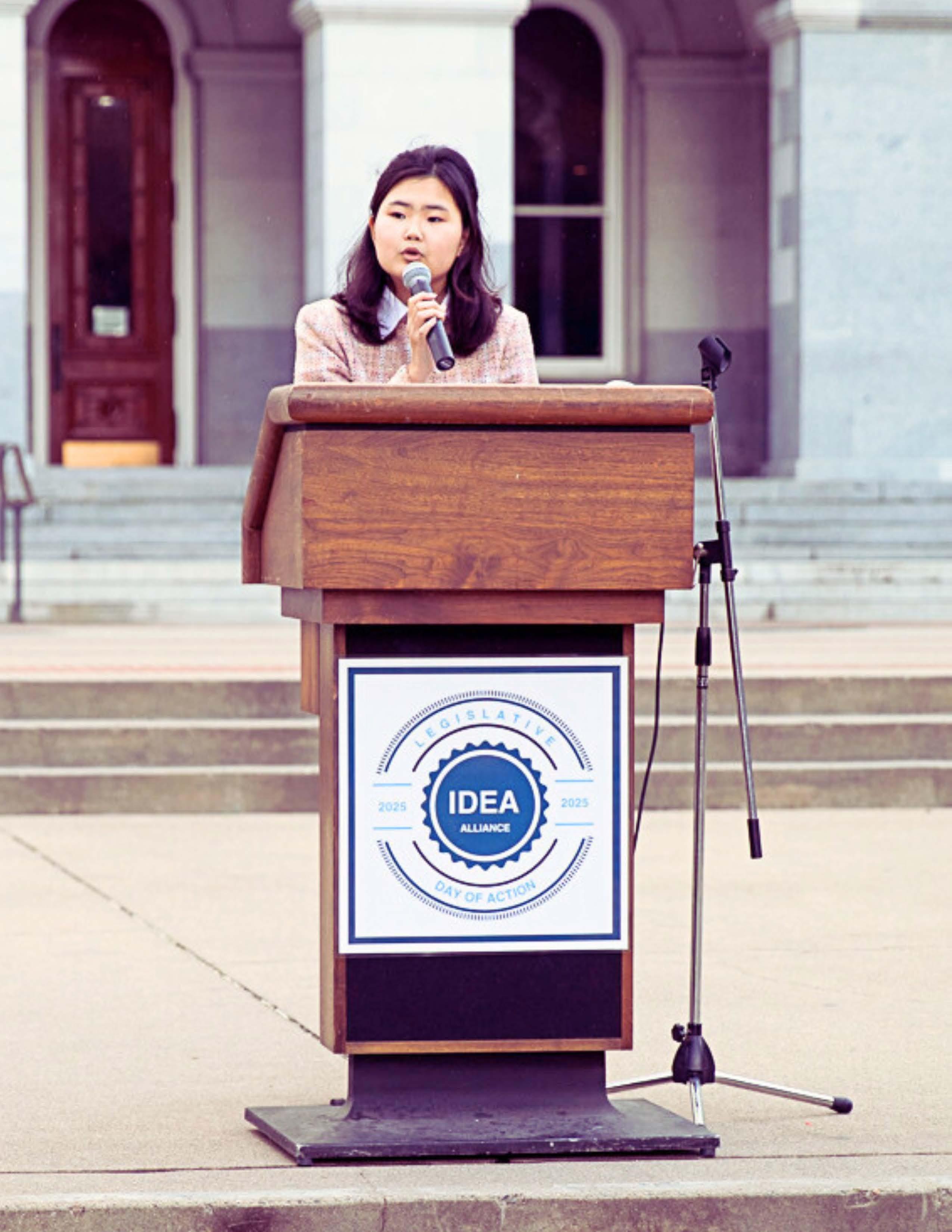

Saran Tugsjargal is a trailblazer—the first Mongolian American official in the U.S. and a national youth fellow for the U.S. Department of Labor’s CAPE-Youth, representing over 2.3 million students with disabilities. Living with multiple disabilities, she’s turned adversity into advocacy, leading education reform efforts across the country. At just 18 years of age, from mentoring dozens of families to helping pass state legislation, Saran is proving that disability doesn’t diminish leadership—it can shape it in extraordinary ways.
ALLIÉ: Take us back to the beginning, Saran. What life was like for you growing up as a Mongolian American with multiple disabilities. What are some of your earliest memories of how your differences were seen by others?
SARAN: Basically, when I was three years old, I wasn’t able to walk or speak well. I had signi ficant physical and
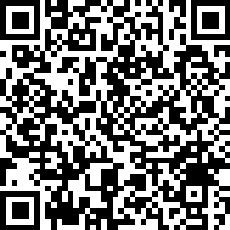
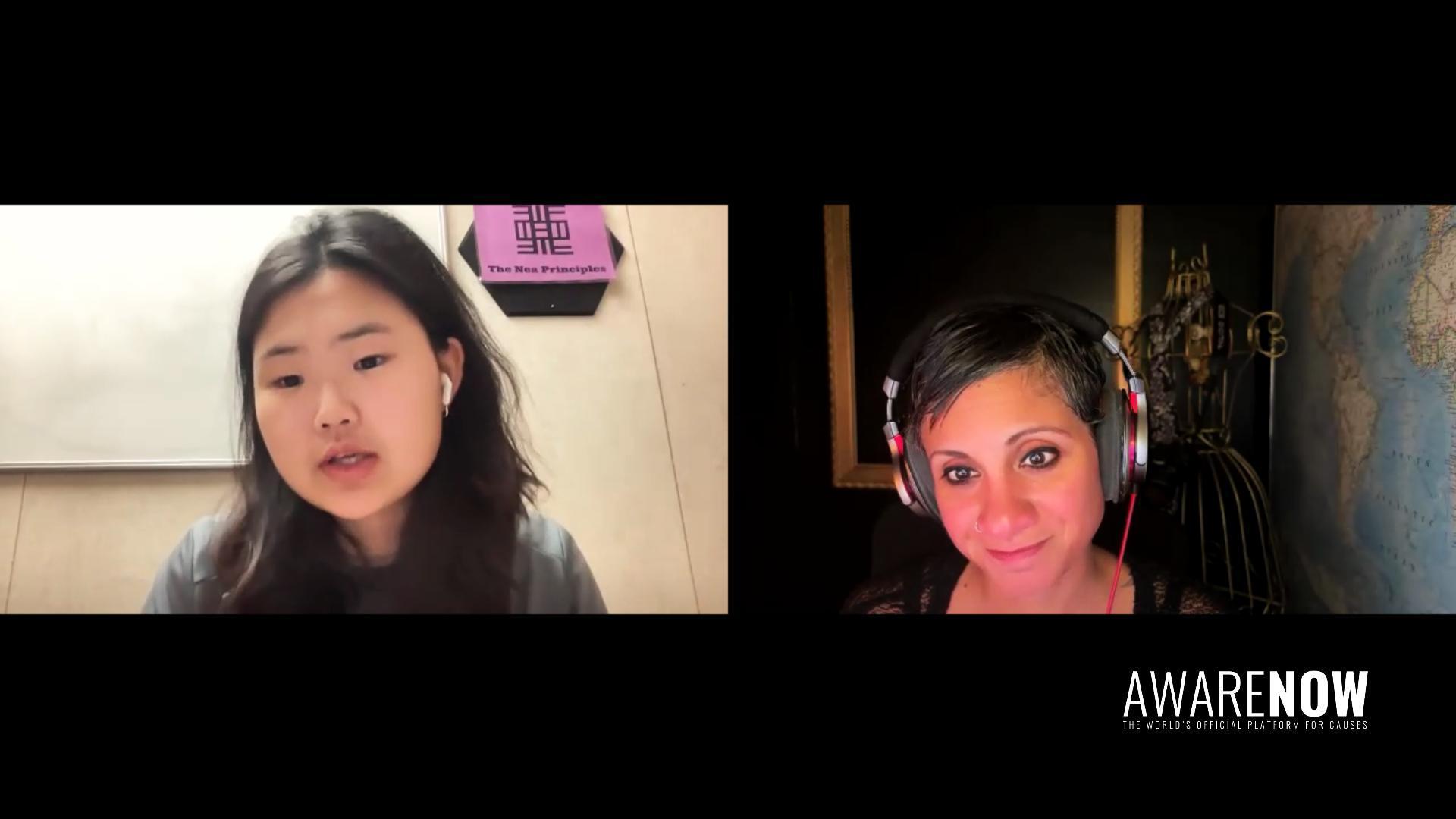

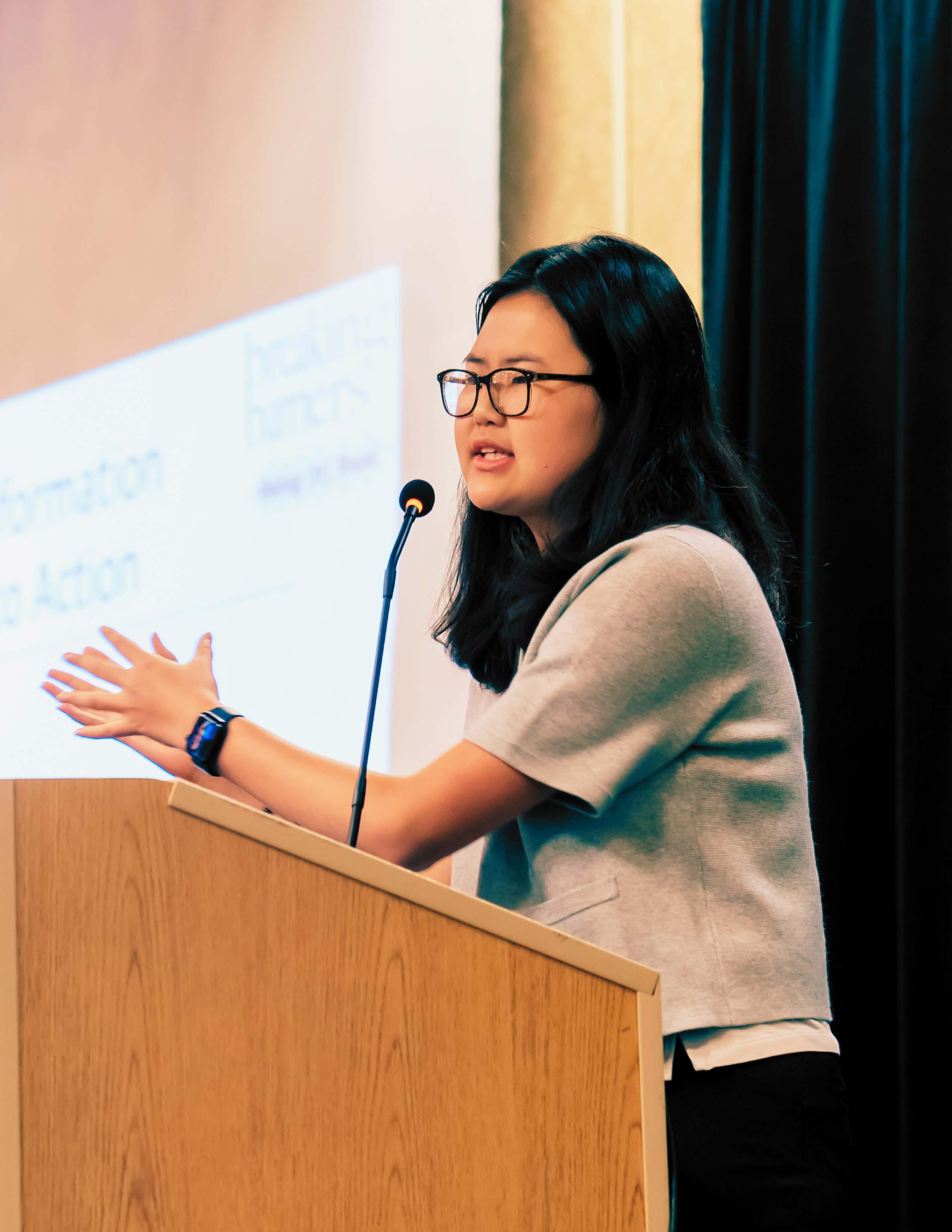

SARAN: (continued) how to hold a pencil properly. I was far behind my peers, and that made me feel very isolated. I felt segregated. I often didn’t know what to do or how to engage. Because I was born with those barriers, I went through a lot of support systems—physical therapy, occupational therapy, speech therapy—all these different therapies. And no matter how well-intentioned they were, I often saw them as oppressive.
I just wanted to be normal. I wanted to be like my peers, playing with dolls and toys, going outside, kicking a ball—but I didn’t have that growing up. Most mornings, my mom would take me to the hospital for therapy appointments. That became my routine. I missed out on many opportunities, especially when it came to making friends. That was my reality as someone with multiple disabilities—someone who is neurodivergent. I always felt different. I felt dumb in some ways. Even though support systems were meant to help, I saw them as a reminder of how different I was. I thought I’d always be different, always feel this way. For many years, I hated my disabilities. It was taboo to talk about them, and it was painful to feel so different.
ALLIÉ: How did other people treat you? How did your peers respond to your differences? You mentioned feeling isolated and different—did anyone reach out to help you feel connected?
SARAN: That’s a really good question. Growing up, I faced a lot of bullying. When I had accommodations or was pulled from class to take a test, my peers would see that and think of me as the “dumb, low kid.” I was told things like, “People like you with disabilities will never be successful. Why would anyone want to be your friend?” Some even said things like, “If you were my friend, I’d kill myself.”
ALLIÉ: They actually said that?
SARAN: Mm-hmm. That really impacted me. Sometimes when we got test scores back, they would look at mine and say, “You’re always going to be dumb. That’s just who you are.” The hateful remarks only got louder in elementary and middle school. I didn’t want to go to school. I would come home crying and ask my mom, “Why am I like this? Why was I born this way? Why can’t I be seen? Why can’t I be heard? Why can’t I just be a normal kid?”
Being labeled and segregated really hurt. Sometimes I’d be inside doing extra academic support while everyone else was outside playing. I missed a lot of social opportunities. People saw me as unintelligent, as someone not worth being friends with. And it wasn’t just students—teachers, too. I was labeled as having an “emotional disturbance,” and it affected how teachers treated me. They didn’t understand how to help me. They would ask, “Why are you crying all the time? Why are you causing problems?” I wished they would just ask, “What’s happening to you? How can I support you?” Instead, they saw me as the problem.
ALLIÉ: It seems like it should’ve been just the opposite. Teachers should ask how they can help, not accuse. And then, beyond bullying and social struggles, students with disabilities often face limited resources. Is there a story you can share about that?
SARAN: Absolutely. Beyond the bullying and discrimination, I faced major barriers to accessing resources. For example, my parents are immigrants from Mongolia. They became U.S. citizens after I was born, but they weren’t fluent in English. So at IEP meetings, I had to advocate for interpreters. But Mongolian is a rare language. Schools often only offered translation in common languages like Spanish or Chinese.
This meant not only were my needs overlooked, but so were my parents’. I had to keep going back to the school, saying, “My parents need to understand. They’re my parents. They have a right to know.” And often, the school would say, “We don’t have the money for that.” That set me back significantly. I also didn’t know about after-school programs or recreational opportunities because they weren’t accessible to me. I didn’t want to appear needy by disclosing my disability, and often the word “disability” made people assume I wasn’t qualified to participate.
SARAN: (continued) One example stands out: in middle school, I wanted to run for student government. My peers told me I couldn’t, that it didn’t make sense for someone like me. But I did it anyway. I wanted to show that a disability doesn’t define your ability to lead or succeed. That experience fueled my passion for equity in education policy.
ALLIÉ: That makes perfect sense. And you're right—support needs to extend beyond the student to the entire family. There have to be accommodations for everyone involved.
SARAN: Exactly. We always talk about the “why” behind success—why it matters to get a 4.0 or achieve your goals— but if we don’t give families the “how,” they’ll never be able to help their children succeed.
For me, academic advancement programs weren’t even on the table. I wanted to be in gifted and honors programs, but they weren’t made available to me. That really hurt. Even sports were out of reach. I was kept on the sidelines— excluded, segregated, labeled.
And this wasn’t just happening to me—it was happening to other Mongolian families too. But no one talked about it because it was taboo. They were being denied resources and accommodations, and I began asking: What should we do? Who will speak up? Who will lead? I had no role models who shared my background or experience, so I decided to become one.
ALLIÉ: Yes, we say it often: if you can’t see it, you can’t be it. So is that what led you to create the Mongolian American Disability Mentorship Program?
SARAN: Yes. I founded it in the summer of 2022. Before that, I was in Mongolia taking care of my grandma. When I came back, I realized my disability should never be a barrier to success. So I started the program—not as a nonpro fit, but simply as a program to support Mongolian families. I held two in-person meetings in Los Angeles in partnership with the Mongolian Los Angeles Association and a college counselor I knew. We educated parents about advocating for their children with disabilities—in both English and Mongolian. Everything was fully translated and accessible. Over 60 families participated, many from outside California and even internationally. I shared my story and also practical strategies—like how to qualify for an IEP or 504 Plan.
I also did one-on-one mentoring. One boy in Los Angeles had autism and struggled to express himself. At first, we just talked about music—turns out we both love Doja Cat. Then we played tic-tac-toe. Over eight sessions, he began to open up, to smile, to talk. Eventually, I met him in person, and he had the brightest smile. Now he has friends and feels confident. I also mentored his mom, who was afraid to speak up at meetings. I guided her through it, and eventually, she came back to me in tears saying, “I did it. I advocated for my son.” That meant everything.

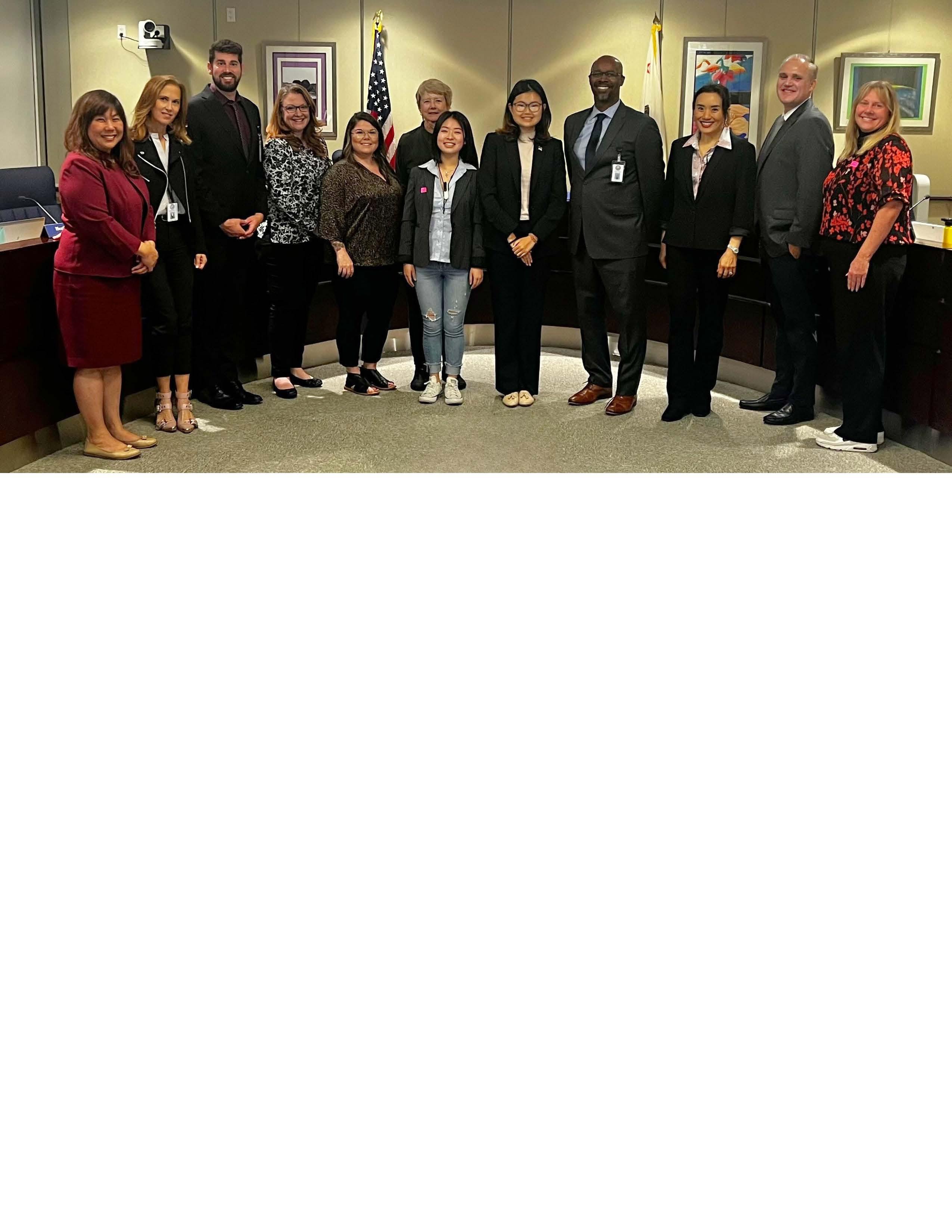
Exclusive Interview with Saran Tugsjargal https://awarenow.us/podcast/louder-than-labels




SARAN: Last year, I was honored as one of the Top 30 Disability Advocates in the world by Diversability—becoming the first Mongolian American woman to receive the recognition. Moreover, not only was I deeply involved in state work, and not only was my work recognized and uplifted at these levels—it inspired me to dream even bigger. What can I do from here? How can I drive this even further? Because across the country, I know there are more students who need a voice. That’s when I decided to apply to be a National Youth Fellow for the U.S. Department of Labor— and I actually got the position.
So now, I serve as a National Youth Fellow for the U.S. Department of Labor’s CAPE-Youth (Center for Advancing Policy on Employment for Youth). What I do in this role is not only advise folks at the Department of Labor, but I also work with five different states—diverse and, in fact, deeply red states—over the next five years to help redesign systems using my lived experience to drive change. It’s about transforming how youth with disabilities transition from education to employment. In this position, I represent over 2.3 million students with disabilities across the country. And I’m not doing this alone—I work alongside four other national youth fellows. It’s an incredible opportunity and incredibly meaningful work. For example, the emotional disturbance bill I worked on in California—well, I believe that should be universal. That kind of legislation should exist in every state.
At the national level, I get to focus on questions like: How do we eliminate harmful labels? How do we provide better support in the juvenile justice system? How do we actually serve students with disabilities in a way that works? Now I get to work on answering those questions across the country.
ALLIÉ: That’s amazing. I love that you're not only saying, "Here’s the issue and here’s my personal story that illustrates it," but you're also offering real solutions. And I love that the work you’ve done in California is now inspiring broader change—because why stop there? Why not scale it across the country and beyond?
So, I have one final question for you today, Saran. When you reflect on everything you’ve accomplished—which feels like just the beginning, even though you've already done so much—how do you de fine yourself today? Not by your diagnosis. Not by your ethnicity. But by your impact. Here it is: Fill in the blank. “Saran is _____.”
SARAN: Saran is a world change-maker. ∎


Policies intended to remove one “piece” of society risk destabilizing the whole structure.
DR. TODD BROWN FOUNDER OF THE INSPIRE PROJECT & CO-FOUNDER OF OPERATION OUTBREAK


The analogy of a Jenga tower captures how interconnected social systems can become unstable when one piece is removed. Since Trump’s inauguration in 2025, aggressive new deportation policies have begun to pull at these pieces in the U.S. economy and society. Experts warned that the planned mass removals of undocumented immigrants would “upend entire communities and have severe economic fallout.” Deportation actions, including large-scale ICE enforcement and resulting self-deportation, have already begun to send ripples through blue-collar labor markets, school systems, and state budgets.
Many U.S. industries rely heavily on immigrant labor in jobs few U.S.-born workers fill. For example, an analysis by a Joint Economic Committee report estimates mass deportations could remove up to 225,000 farm workers and 1.5 million construction workers from the workforce. (Other sectors would also be hit hard: roughly 1.0 million hospitality workers, 870,000 manufacturing workers, and 461,000 transportation workers could be lost.) Deleting such large pools of workers immediately creates shortages. One Arizona economist noted, “If you remove a significant portion of the state’s labor force, what results is labor shortages… That creates supply chain issues (and) shortages of goods and services.” In practical terms, farms without enough pickers will yield less produce, construction sites will stall, and related services like sanitation (waste collection and processing) will struggle to find workers.
Even city trash collection and waste-removal services, which employ many immigrants, would face dangerous understaffing and higher costs. For instance, data shows that about 1 in 5 farm laborers and 1 in 8 construction workers lack permanent legal status. Officials warn that losing even a fraction of these workers “could have economic implications… in terms of housing costs like house building, but also terms of food costs.” Indeed, building homes requires laborers and materials; if deportations shrink the labor force, home prices and rents can rise. The same is true for groceries: with fewer workers to grow, pick, and process food, consumer prices climb. One report warned that such labor cuts “could hit agriculture and construction sectors hard, pushing up prices for homebuyers and grocery shoppers.”
Economists quantify these effects as a broad price shock. Models by think tanks predict that removing large numbers of immigrant workers could push prices several percent higher and shave points off GDP growth. In short, blue-collar industries form the bottom blocks of the societal tower: take enough of them away, and the whole structure, from supply chains to consumer costs, can wobble like a pulled Jenga block.
Deportation policies are also reshuffling families, especially those with school-aged children. Many immigrants with U.S.citizen children are choosing to leave the U.S. altogether. For example, thousands of immigrant parents have already notified authorities that they plan to return home. When families pull up stakes, they withdraw their children from local schools. Even short of permanent departure, fear alone causes absenteeism. Surveys and reports show immigrant families are “scared to send their children to school,” and many have kept their kids home during enforcement scares. In practice, this “chilling effect” leads to sudden drops in attendance. For instance, Denver Public Schools saw attendance fall about 3% in early 2025 compared to the prior year, with immigrant-heavy schools seeing around 4–5% declines. Nationwide, similar dips appear whenever ICE raid rumors circulate. The net result is tens of thousands fewer students in classrooms. Every absent child not only loses learning time but also leaves a gap in the enrollment count that schools rely on.
Fewer students in school directly cuts funding, because U.S. public school budgets are almost always tied to enrollment. Virtually every state allocates money to schools on a per-student basis. About 35 states (plus Washington D.C.) give districts a fixed dollar amount per enrolled student. Even the states with more complex formulas ultimately base funding on headcount. A Kaiser Family Foundation analysis explains that every state’s formula is “directly or indirectly based on the number of students served”. Thus, when immigrant families stop showing up or move away, the money a district receives immediately shrinks. States with large immigrant-child populations, notably California and Texas, are especially exposed.
“Each block matters in the interconnected Jenga tower of the economy, education, and communities.”
In plain terms, declining enrollment creates budget holes. If a district loses 5% of its students, it typically loses about 5% of its state funding. Overheads like school buildings, utilities, and administrative staffing do not shrink as fast, so districts end up with less revenue for the same costs. The KFF report notes that attendance drops tied to immigration enforcement “could lead to decreases in school funding.”. This, in turn, forces hard choices: schools may have to cut programs, delay maintenance, or, most painfully, reduce staffing. Even small percentage drops in some neighborhoods can translate to millions of dollars lost, forcing cuts to special education, arts, or enrichment programs that were already underfunded.
Districts facing these shortfalls have limited options. They can ask local voters to raise taxes or pass bond measures to replace lost state funds, or they can trim expenses. If voters reject new revenue measures, districts have no choice but to make deeper cuts by laying off teachers, aides, and other staff to balance the budget. As one analysis notes, districts facing steep enrollment declines “must either shrink spending, often by reducing the number of staff or schools, or raise additional local dollars to compensate.”
Without new revenue, the adjustment falls on school budgets. This pattern is already playing out in states with large immigrant populations. In California, for example, sustained drops in student counts have coincided with budget gaps. A Los Angeles Times report found that districts getting fewer students “receive less revenue without a corresponding decrease in overhead,” forcing cuts to programs and services. One district, Santa Ana Unified in Orange County, voted in 2025 to cut 262 jobs in response to declining enrollment and a $154 million budget deficit. Los Angeles Unified has similarly projected the need to pull back staffing if enrollment does not recover. In short, if taxes do not rise to cover the gap, the only way for districts to balance their books is by cutting staff, classes, and services. In our Jenga analogy, that means removing yet more blocks (educators and programs) to keep the tower standing, at great cost to educational quality.
The pieces have begun falling like Jenga blocks. Aggressive deportations, whether by ICE enforcement or induced selfdeportation, subtract crucial labor and pull children out of schools, triggering cascading problems across the economy. Stripping out large numbers of workers in agriculture, construction, and related fields creates shortages and higher prices.
Pushing families to leave abruptly shrinks school enrollments and funding, leading to layoffs and cutbacks. These interlocking effects illustrate how tightly woven our systems are. Policies intended to remove one “piece” of society risk destabilizing the whole structure. Each block matters in the interconnected Jenga tower of the economy, education, and communities. Remove one carelessly, and the rest can tumble. Keeping the tower standing will require comprehensive solutions that recognize these linkages, not just pulling blocks out and hoping nothing falls. ∎
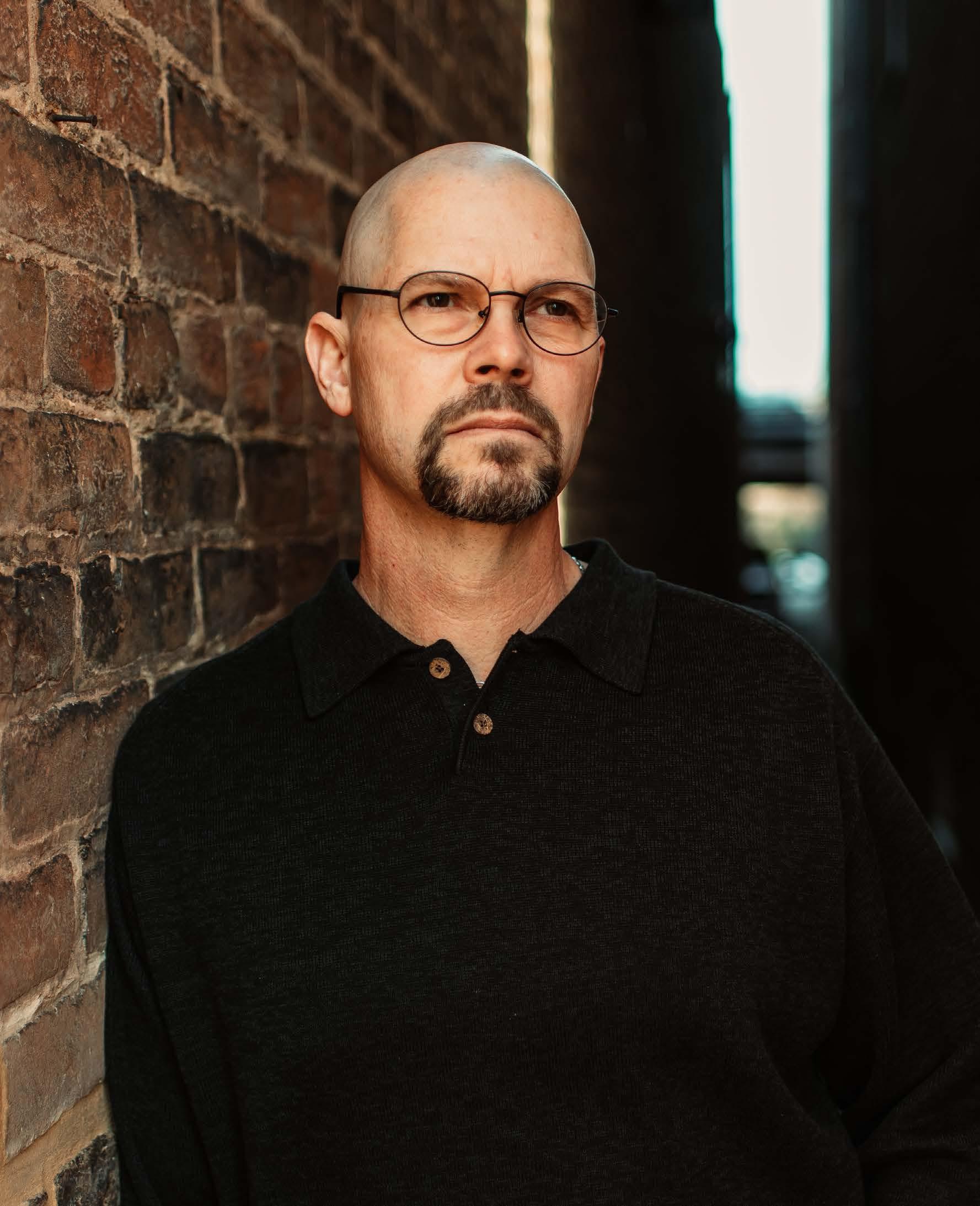
DR. TODD BROWN
Awareness Ties Columnist www.awarenowmedia.com/todd-brown
Brown is a winner of multiple education awards, including the U.S. Congressional Teacher of the Year Award, U.S. Henry Ford Innovator Award, Education Foundation Innovator of the Year, and Air Force Association STEM Teacher of the Year. Dr. Brown is the creator and founder of the Inspire Project and cocreator of Operation Outbreak, which was named the Reimagine Education Award for Best Hybrid Program in the world. He is also an Education Ambassador for the United Nations and an Educational Ambassador of the Center for Disease Control (CDC). www.IamAwareNow.com
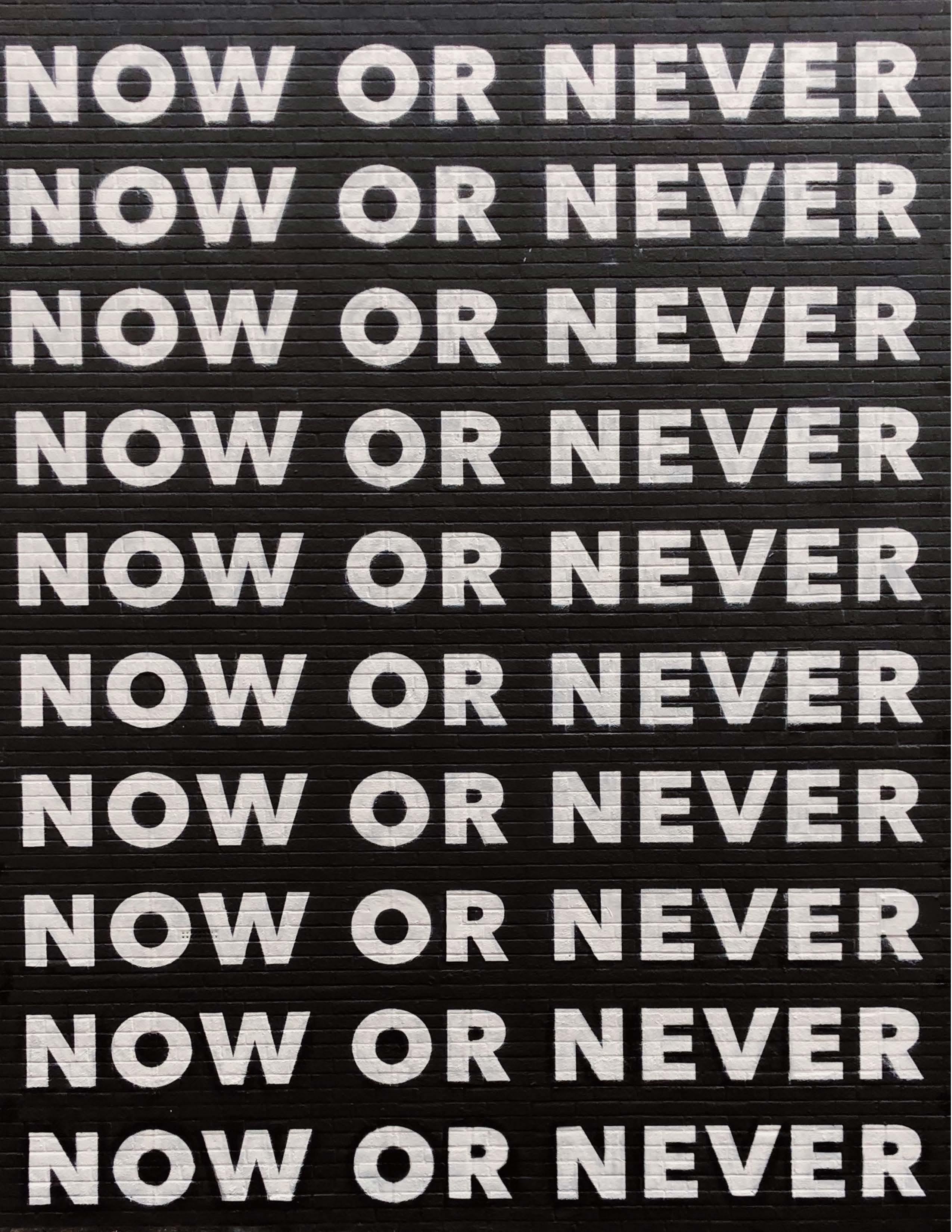


WEED FOUNDER OF THE SELF-WORTH INITIATIVE
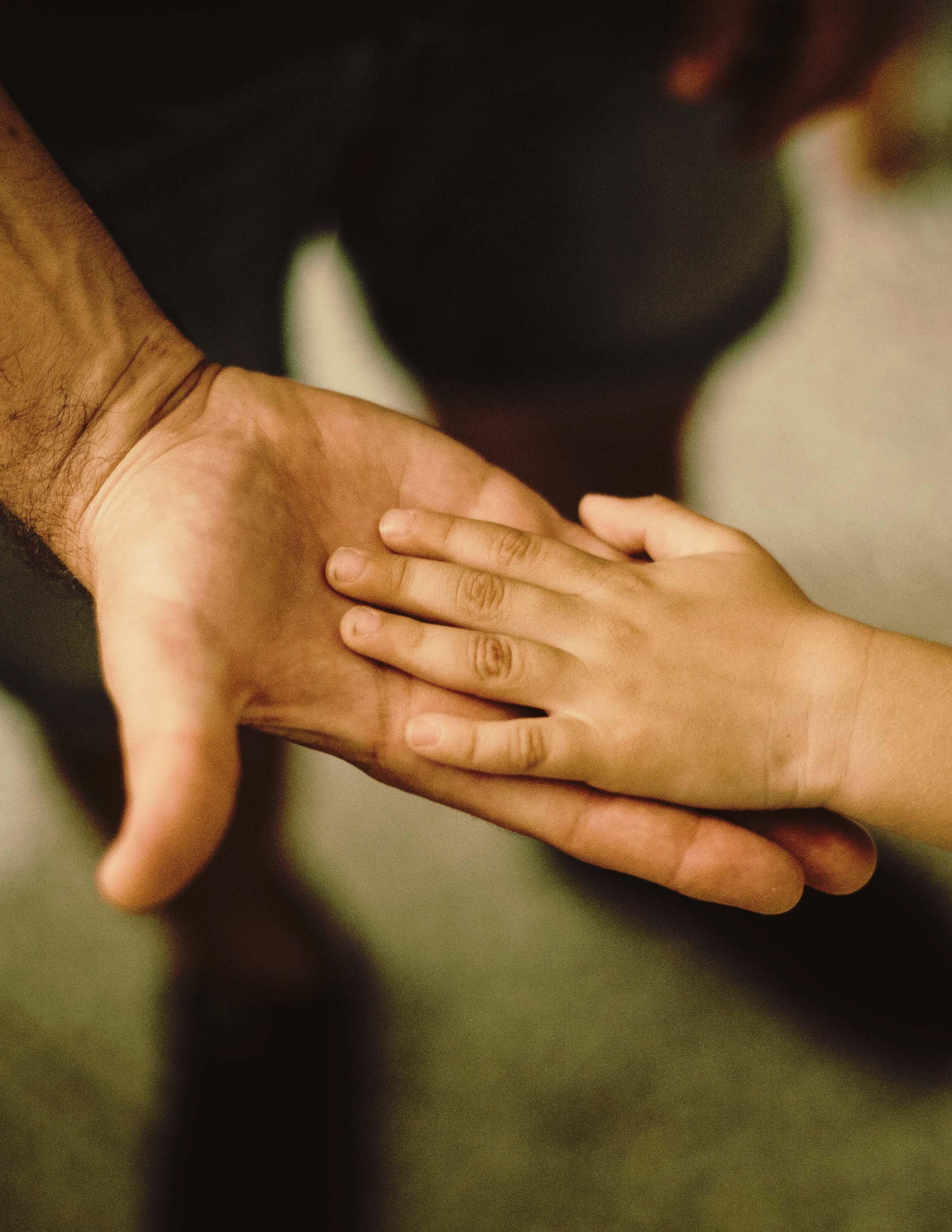

‘THE
SELF-WORTH
I used to think legacy meant buildings with your name on them. Or bestselling books. Or a bank account that outlives you. But now, I know better. Legacy is the love that stays when everything else falls apart. And no one taught me that more than my father.
He didn’t just raise me. He rescued me. Again and again. Not with fanfare, but with quiet wisdom, daring belief, and a twinkle in his eye that told me I was never alone.
I was just a Girl Scout with a dream: to win a shiny pink bike. Other girls went door to door. My dad handed me a walkie-talkie. When a man in a red shirt hesitated, his voice came crackling through the speaker hidden beneath my sash: “Hey, you in the red shirt, would you like to buy one box or three?”
The man bought three.
I won that bike—but what I really won was an understanding that creativity could change the game. That being different wasn’t just okay—it was powerful.
When the neighborhood bully, Kathy, kept pushing me around, I didn’t want to fight. I wanted to disappear. But my dad saw the fire in me I couldn’t yet see in myself.
“If you stand up to her,” he said, “I’ll get you the biggest banana split with all the toppings.”
The next day, I did. I stood up. I shook with fear. But I did it. And that sundae? It tasted like courage.
There was a moment when I packed a pink suitcase full of stuffed animals and mismatched socks and “ran away” to an empty lot. But I didn’t want to leave. I wanted to be missed. I wanted someone to come looking for me.
And he did.
My dad drove around the block again and again, scanning every corner. On the third loop, he spotted me. He didn’t scold me. He sat beside me. And when I finally admitted, “I just wanted someone to come looking,” he said: “I’ll always come looking for you. No matter where you go. I’ll always find you.”
At seventeen, I was ready to get married to an older guy named Andy. I thought love was enough. My dad didn’t protest. Instead, he casually said, “Have you thought about art school?” That gentle redirection changed everything. I went to college. I discovered I loved me. My dad didn’t need to fight me. He just handed me the brush and let me paint a different picture.
After college, I didn’t know how to get into the advertising world. My dad said, “Call the biggest CEO. Ask him to lunch.”
“Dad, I can’t.”
“Yes, you can. No one else has the guts to ask.” I did. I shook. I sweat. But I did it. That call landed me a job as an assistant account executive for one of the biggest ad firms in Miami. Because my dad believed boldness beats doubt every time.
Years later, I found myself in a mismatched marriage. When I finally left, dragging my bags and my baby back home, it was my dad who opened the door. He didn’t ask questions. He just said: “You’re safe now.” And little by little, through long walks and tiny moments, he helped me come back to life. When I told him I felt invisible, he filled a bowl with water and added blue food coloring. “Now try to take the drops back,” he said.
“I can’t,” I replied.
“Exactly. Once you touch something, you’re in it forever.” Legacy, he was telling me, isn’t always loud. It’s the love that lingers in everything we touch.
When fear consumed me—of food, of leaving the house, of life—he didn’t offer empty affirmations. He said, “Fear is like a dinosaur. You don’t run from it. You pet it.” He showed me how to move again. He helped me take one walk around the block, get one haircut, buy one dress. He taught me that healing isn’t one giant leap. It’s a thousand tiny steps.
My dad didn’t leave behind a trust fund. But he left a treasure trove of moments that built me back from nothing. He gave me permission to dream, to fail, and to rise again. He taught me that courage often whispers, and legacy lives not in monuments—but in how we make others feel seen.
So, what’s the legacy I hope to leave? That someone will remember me the way I remember him. As the person who showed up. The person who found them. And the person who whispered, “You’ve got this,” when the world said otherwise. Because in the end, legacy isn’t about what we leave behind. It’s about who we lift while we’re still here. ∎

DEBORAH WEED
Founder of the Self-Worth Initiative www.awarenessties.us/deborah-weed
Deborah Weed is a whirlwind of creativity and motivation, passionately championing self-worth through her Self-worth Initiative. Her mission? To help families and their kiddos live authentically, energetically, and joyously! Deborah's journey began with a personal crisis: after dazzling in high-pro file roles like working on a $26 million pavilion for KIA Motors and being Citibank's Director of Development, she faced a misdiagnosis that left her bedridden for three years. Her discovery of a 1943 copper penny worth a million dollars turned her perspective around— if a "worthless" penny could be so valuable, so could she! Inspired, Deborah wrote and produced The Luckiest Penny, an interactive musical that teaches kids about self-worth. As a motivational speaker, Deborah brings fun and inspiration to everyone, proving that self-worth is a joyful, transformative adventure. www.IamAwareNow.com
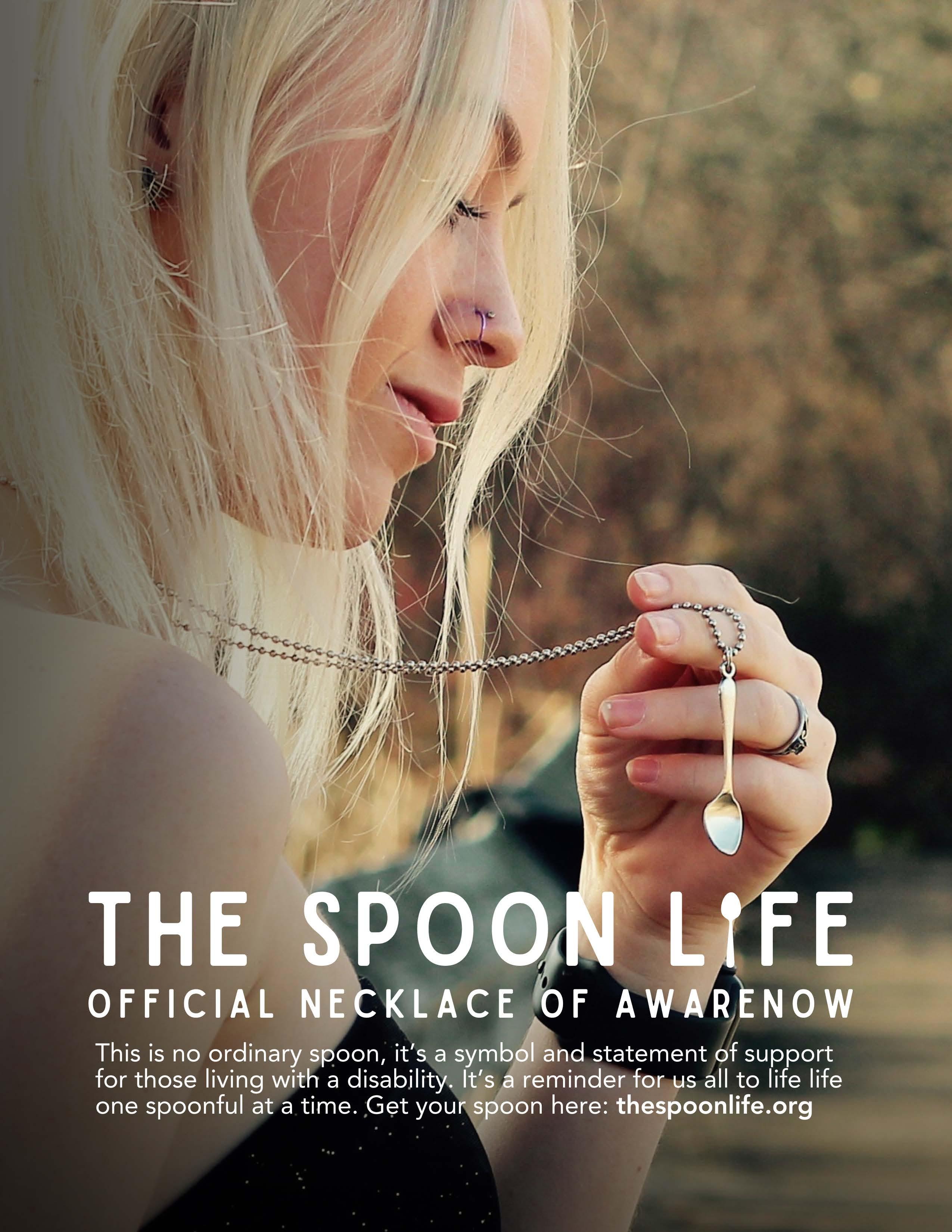




RAUL ALVAREZ CHIEF COMMUNICATOR, STORYTELLER & SYNERGIST AT GTSD GROUP


PERSONAL STORY BY RAUL ALVAREZ
As I prepared my usual lunch of peanut butter (smooth, of course) and jelly, I had a flashback to 6th grade at Longfellow Elementary in Holland, circa mid-1970s...
It was our first year in Holland, Michigan, having just moved from San Antonio, TX. Two words: culture shock.
It was at Longfellow that year that I was first introduced to PB&Js - seriously. It was bad enough that we did not look like anyone else at the school then, but when we opened up our lunch (I ate lunch with my two younger siblings, who attended here also), whoa, that turned heads in the lunchroom.
Mama Alvarez packed each of us two tacos for lunch (I mean, what else, right?), and our classmates were unfamiliar with these "taco" things. Two cultures were about to collide in the lunchroom...
Food not only broke the ice, but it also led to lifelong connections and helped feed my baseball card (and candy) addiction. And, it made me a PB&J lover for life. Here's how that worked: after letting our classmates taste tacos for the first time, they were hooked, and pretty soon we were selling our tacos to them for $1 each (a lot of money for a taco back then, but they could afford them). But there was a catch: we also got their lunches, and guess what? Yes, most of them had PB&Js in their lunches.
We had found a way to adapt, make friends (connections), while also making a little money with the resources we had - tacos.
Today, some of my "customers" from back then are still connections, and my go-to lunch on any given day - like today - is a PB&J (with grape jelly, of course).
A fun and vivid flashback for sure, and more importantly, a reminder about being resourceful, adapting to change, and a reminder that there is a little entrepreneurial spirit in all of us. ∎




When not in the grips of his illness, Cameron is a kind and gentle young man.

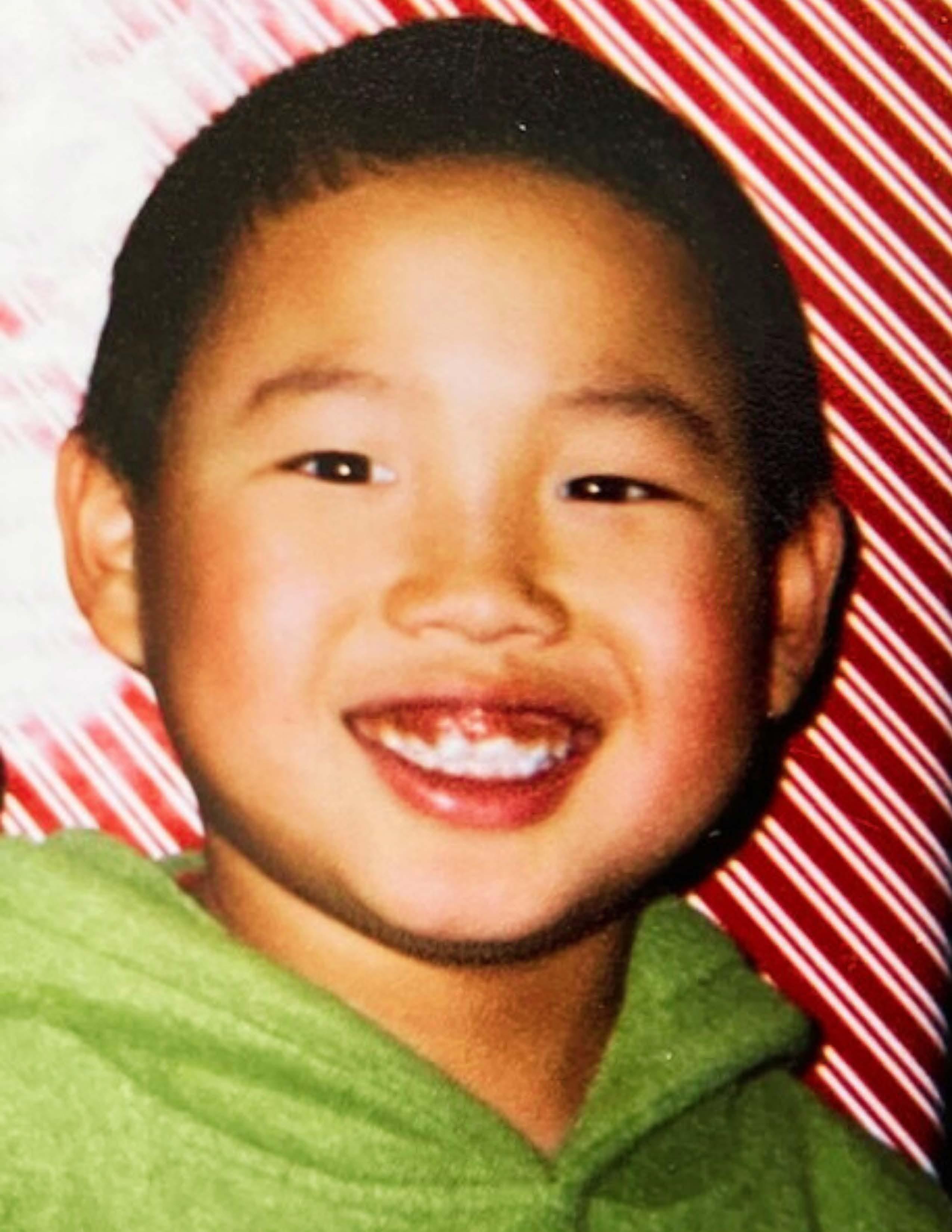
‘BEYOND
From a young age, my son Cameron was described by others as a highly intelligent and an intuitive “old soul” willing to share his wisdom. Now twenty-seven years old, Cameron suffers from schizoaffective disorder, a debilitating brain disease that combines the symptoms of schizophrenia and bipolar disorder. This condition manifests as psychosis and mania. He has struggled with it for nine years. When not in the grips of his illness, Cameron is a kind and gentle young man.
Over the years, Cameron has had seven hospitalizations, including eight months at a state hospital. During periods of psychosis, he has often required involuntary medication. He has experienced being restrained in straightjackets and handcuffs and was even reported as a missing person in 2019, which prompted media coverage to help locate him. During psychosis, he has often had to be involuntarily medicated.
On August 25, 2021 while in a state of psychosis, Cameron took a van from his workplace and led police on a slow chase through four towns, amassing fifteen legal charges. This incident was the top story on local news that evening. When the chase ended, police drew their guns before arresting him and taking him into custody. He was subsequently hospitalized again.
According to the Department of Mental Health’s (DMH) Human Rights Handbook (2007), clients can be involuntarily treated if the court determines they are incompetent. After three psychological evaluations deemed Cameron incompetent, a judge ruled that he met the criteria for treatment. In December 2023, Cameron was found Not Guilty by Reason of Insanity on all charges stemming from the 2021 incident.
In October 2022, Cameron moved into a group home and initially adjusted well. However, in January 2024, he refused his monthly Invega Sustenna injection. The group home staff supported his decision, citing his “basic human right” to refuse medication, despite the court’s determination of his incompetence. Staff claimed Cameron had to consent to the injection, even though anosognosia—a hallmark of schizophrenia-spectrum disorders—renders him incapable of recognizing his illness or the need for medication. Tragically, this refusal of medication led to predictable consequences.
The standard of care in schizophrenia-spectrum disorders should be to involuntarily medicate the client if necessary. Unfortunately we had to wait for the inevitable, another psychotic episode. On June 15, 2024, Cameron, in a state of psychosis, walked away from the group home. Two days later, police located and transported him to the emergency room via ambulance. He was later admitted to an inpatient psychiatric unit, where he remained for five-and-a-half months, experiencing persistent psychosis and mania.
During the inpatient stay, the staff determined that Cameron’s previous medications were no longer effective, but failed to find a viable alternative. The unit lacked the resources to manage his poor impulse control—another hallmark of psychosis—or to establish behavioral limits. This created an unsafe environment for Cameron, other patients, and the staff. Despite my repeated concerns, little was done to address these issues.
Like many others with severe mental illnesses, Cameron sits in a small, barren jail cell, punished for being sick.

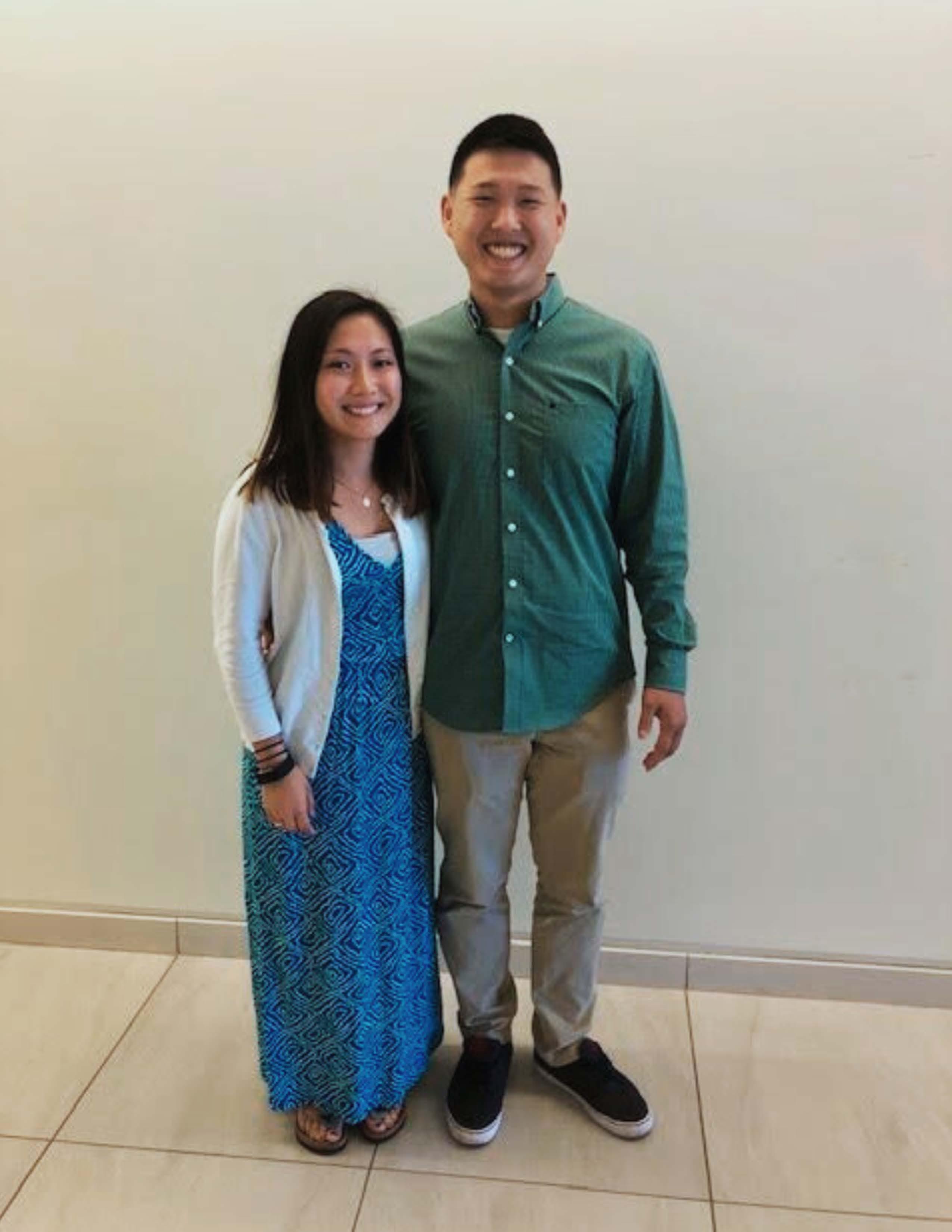
The hospital’s solution was to encourage the filing of fourteen assault and battery-related charges against Cameron to pressure DMH to transfer him to a higher and more restrictive level of care. For months, I fought to have Cameron transferred to the state hospital, where he had previously received effective treatment. Despite being a long-term DMH client, his name was merely added to the state hospital’s transfer list, which has a wait time of up to two years. If DMH had acted promptly, these legal charges—and the associated trauma—could have been avoided.
On December 3, 2024, Cameron was sent to Bridgewater State for a twenty-day evaluation. I was not allowed to communicate with the evaluating psychologist. The resulting report aligned with the hospital’s position, treating Cameron as a criminal rather than a severely mentally ill young man in desperate need of care. Based on this evaluation, Cameron was remanded to jail on December 23, 2024, where he remains incarcerated instead of receiving the treatment he so urgently needs.
The system in Massachusetts has failed him. Like many others with severe mental illnesses, Cameron sits in a small, barren jail cell, punished for being sick. In his heart, Cameron is a kind and gentle young man. This experience, like it has for so many families in Massachusetts, has caused immense stress, heartbreak, and emotional exhaustion. Our mental health system creates trauma for families. Caregivers are left overwhelmed by anger, frustration, helplessness, and worry. On top of this, families often bear significant financial burdens when the system fails their loved ones.
This experience has shown me that families must unite and lead the call for change. We need to advocate for Assisted Outpatient Treatment (AOT) in Massachusetts. AOT is an evidence-based, court-ordered outpatient treatment program that is currently allowed in forty-eight states and Washington, D.C. Massachusetts and Connecticut are the only two states without this vital program.
AOT has been proven to reduce rates of homelessness, incarceration, and hospitalization. It improves overall selfcare, reduces violence, and prevents suicide. Additionally, AOT holds the mental health systems accountable, ensuring that families are no longer left to navigate these crises alone. Currently, there is no accountability, and families are left with no help when their loved ones suffer from anosognosia and are too sick to know they need help.
As Cameron's legal guardian, conservator, and Social Security payee, I have Rogers Guardianship Authority, which provides for the mandating of his antipsychotic medication in both inpatient and outpatient settings. However, this authority is unenforceable outside of a hospital setting—another glaring reason why Massachusetts must pass an AOT law.
The AOT bills for the new legislative session have been filed in the Massachusetts House of Representatives and Senate. If you live in Massachusetts, please contact your Senator and Representative and urge them to co-sponsor these critical bills. Together, we can create a system that supports families and helps those like Cameron receive the care they desperately need. ∎

Nonprofit Consultant, Entrepreneur & Philanthropist www.nationalshatteringsilencecoalition.org
We are the voices for those living with and dying far too young from serious brain disorders (SBD). Our nonpartisan alliance of family members, individuals suffering from SBDs, professionals in the trenches, and caring people, all united to ensure brain illness, health, and criminal justice systems count those with SBDs, and their families in all federal, state, and local policy reforms. It was our founder, Jeanne Gore, who casted the vision for achieving social, political, and healthcare changes for compassionate and equitable treatment for ourselves and our loved ones. We dedicate this site to her and the lasting effect of her gracious and generous life. We continue to raise awareness and progress with this monumental fight to ensure proper approach and treatment of those with SBDs. Become a member today and help us move the needle and shatter the silence.
www.IamAwareNow.com

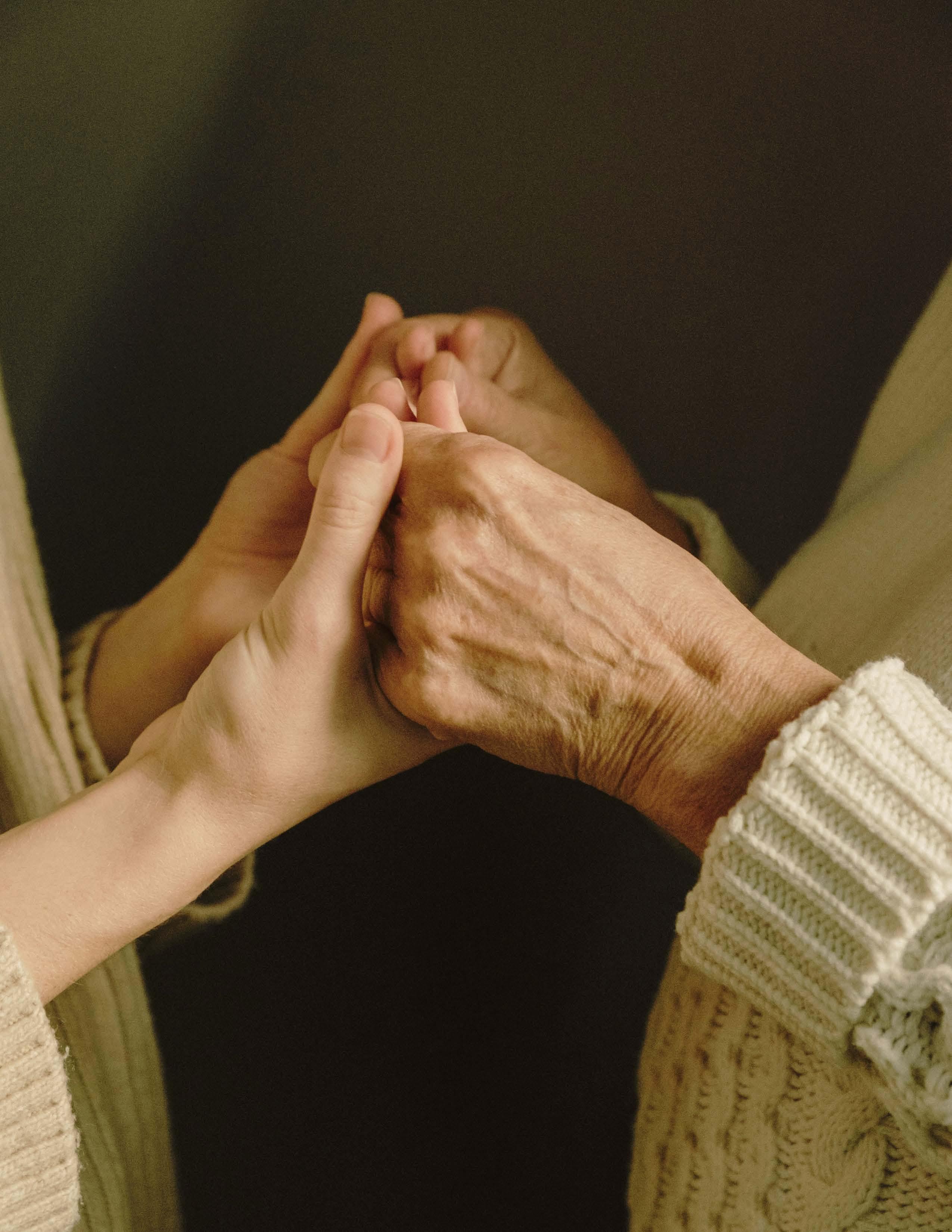


HELEN HOWARD RN BSN EXECUTIVE DIRECTOR OF RESPITE VOLUNTEERS OF SHIAWASSEE
PERSONAL STORY BY HELEN HOWARD RN BSN
I’m a registered nurse and the Executive Director of Respite Volunteers of Shiawassee, a nonprofit serving adults with health challenges and their family caregivers. I want to share how deeply meaningful nonprofit volunteer work can be—and introduce you to a program that’s been quietly transforming lives in our community for over 30 years.
My journey with Respite Volunteers began in 1991, when I was invited to join a coalition planning a new support program for families caring for elderly loved ones at home. With experience in hospitals and mental health, and having been a caregiver myself, I understood firsthand how vital this kind of support could be.
You see, I was what’s called a “caregiving kid.” When I was nine, my mother was hospitalized, severely ill and recovering from major surgeries. At the same time, my parents separated, and my sister and I went to live with our grandparents. Just before Christmas, my mother came home to a hospital bed in the living room—still gravely ill, weighing only 98 pounds. We were told she might not survive. But she did, thanks to a skilled home health nurse— and to the help of our little family. I made her banana shakes for calories and potassium, and my sister and I learned to cook by following instructions yelled from the living room sofa. That experience shaped my belief in the power of family caregiving and the need for outside support.
In 1993, Respite Volunteers officially began services in Shiawassee County. I joined the board and later became director in 1998. Back then, we served just 14 people. Today, we serve around 85 people and their family caregivers each month.
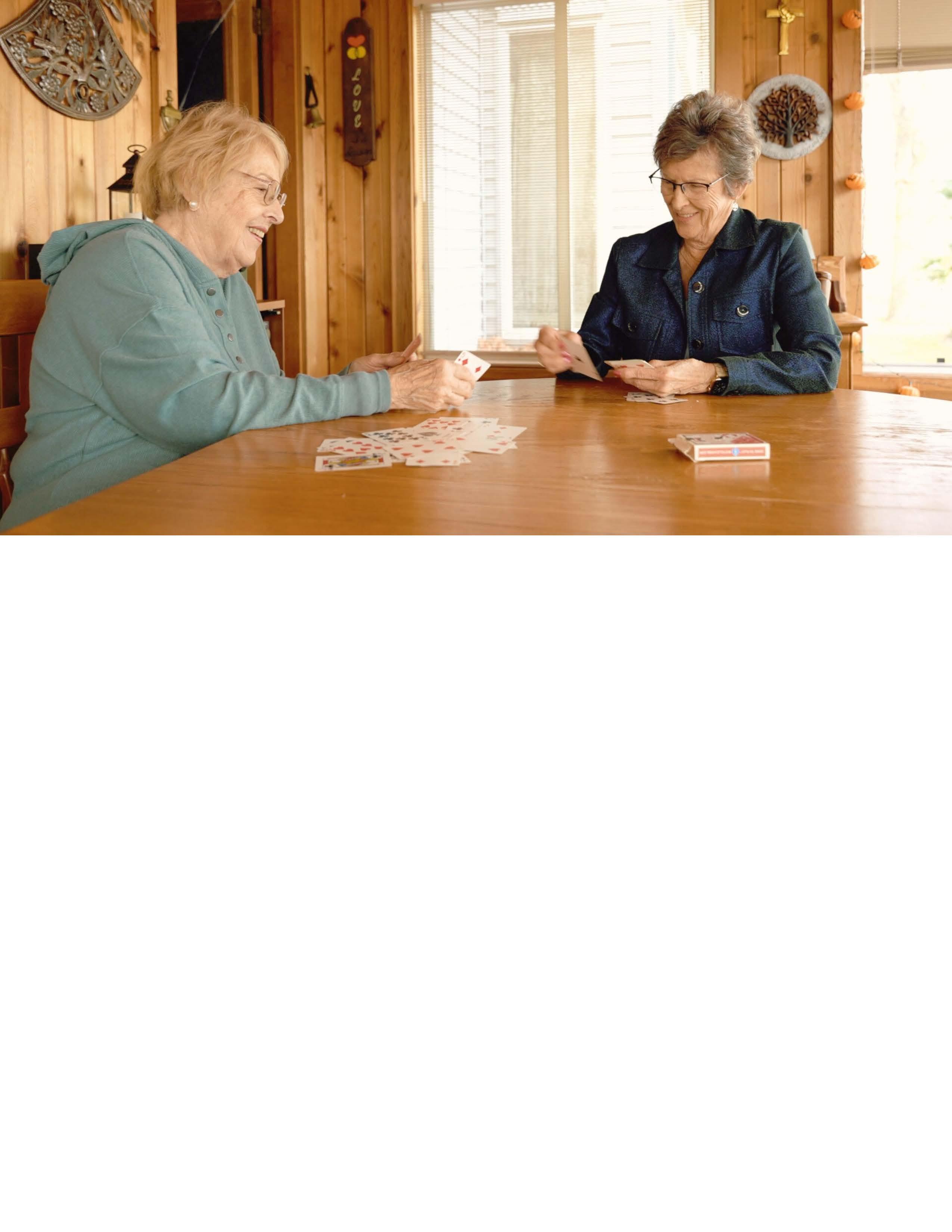


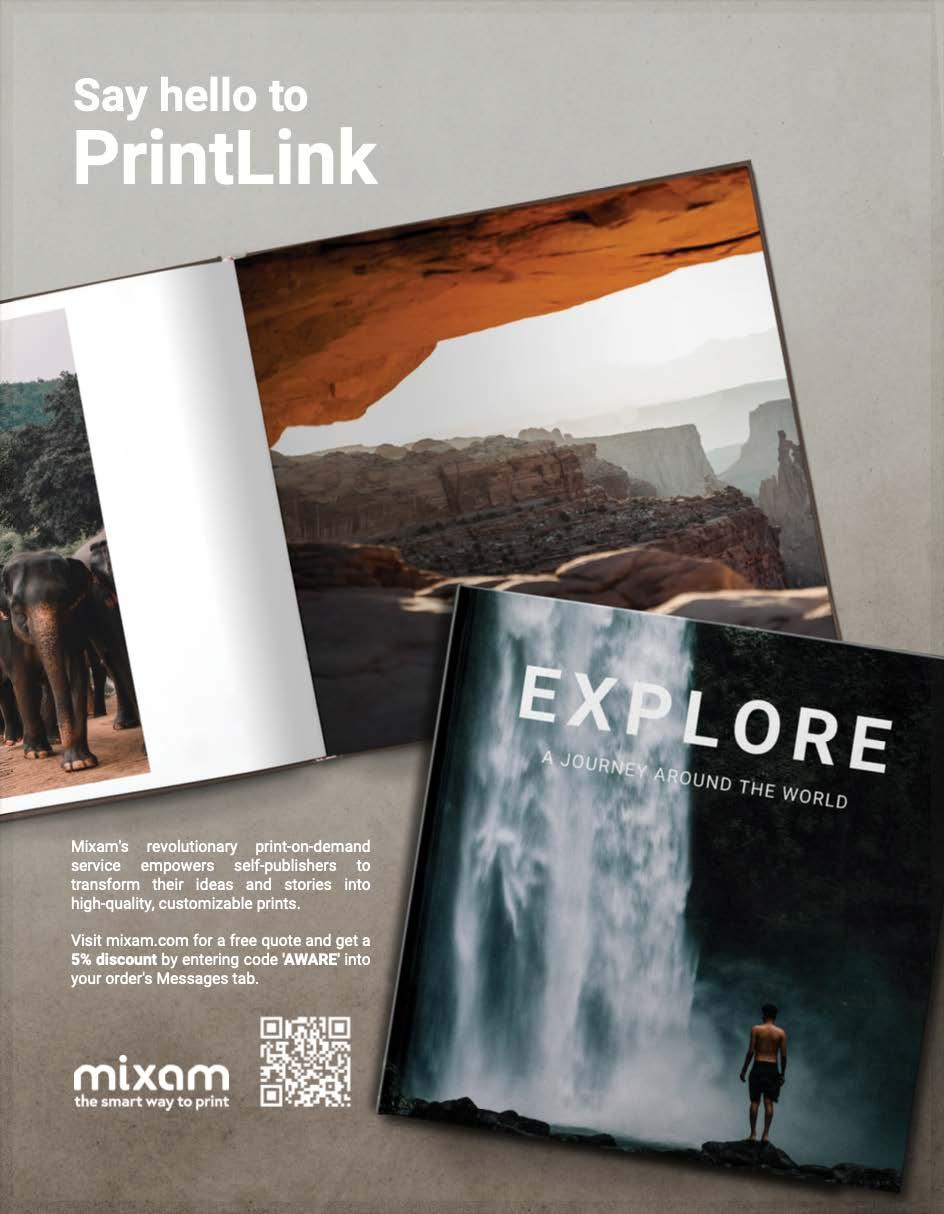

Our continuing evolution isn’t just a central question of our times. As far as I’m concerned, it’s the only question.
BURT KEMPNER WRITER & PRODUCER


Our continuing evolution isn’t just a central question of our times. As far as I’m concerned, it’s the only question.
I recently attended a two-day seminar on sacred activism. The instructors used the example of the butter fly as a teaching story. A caterpillar, they said, reaches a certain stage in its development where the status quo is simply not enough. So too the awakening activist.
The caterpillar instinctively knows it’s now time for a change and spins a cocoon around itself. This is transformation, and many activists believe transformation is sufficient to advance the species to where it needs to be. But it’s not. Our once-recognizable caterpillar has now dissolved into a protein-rich, soupy liquid. If it remained in that state, it would be a dead end. But now a group of specialized cells called imaginal discs leap into action. Some will form butter fly wings, others antennae, still others the thorax, etc. This is transmutation – the birth of a radically different animal. Freed from its protective but limiting cocoon, the butterfly triumphantly flies off to glorify the day.
And what of its human counterparts? For those of us searching for a sane and survivable new world, what will turn out to be the imaginal cells that propel us to the promised land? The caterpillar possesses these remarkable discs, but they are dormant throughout that stage of its life. So what activates them? There are numerous scienti fic explanations, but because this is my article I get to say it’s a divine spark. ∎

AwareNow Podcast IMAGINAL
Written and Narrated by Burt Kempner https://awarenow.us/podcast/imaginal


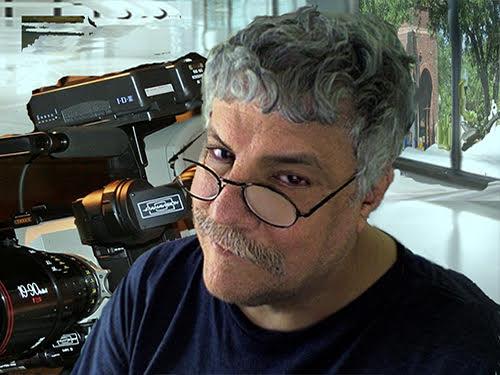
BURT KEMPNER Writer & Producer www.awarenowmedia.com/burt-kempner

BURT KEMPNER is a writer-producer who has worked professionally in New York, Philadelphia, Washington, D.C., and Florida. His work has won numerous major awards, and has been seen by groups ranging in size from a national television audience in the United States to a half-dozen Maori chieftains in New Zealand. Spurred by his love for inspiring young people, he started writing children's books in 2015. Learn more about Burt and his books at his website: www.burtkempner.com.




